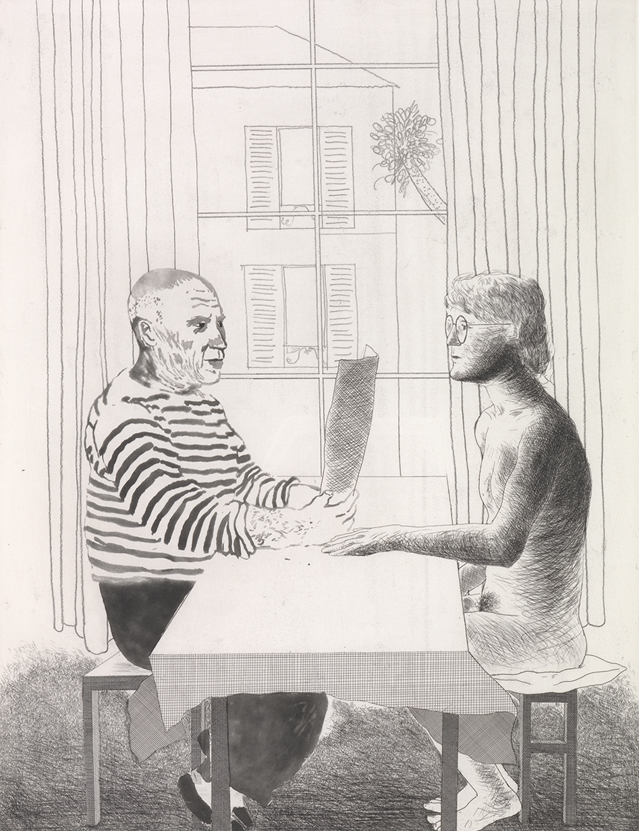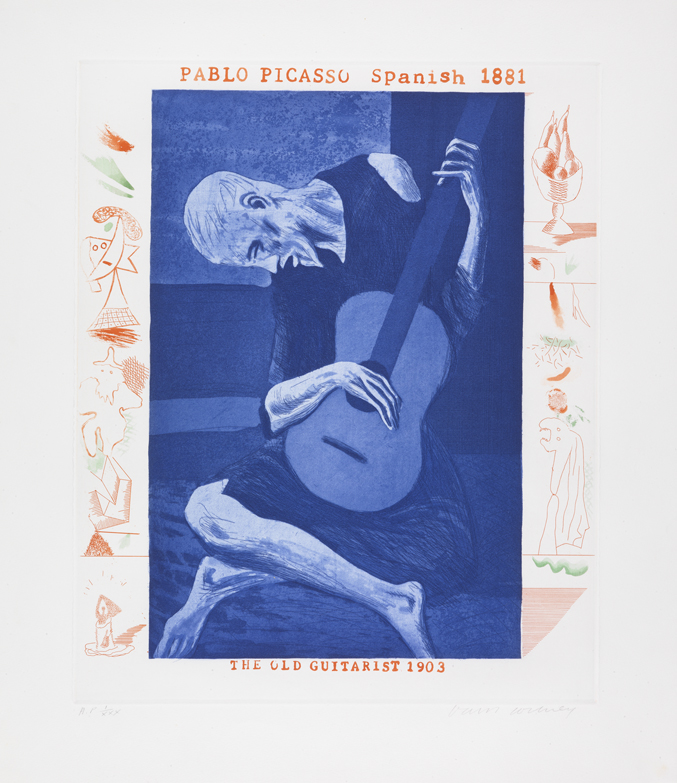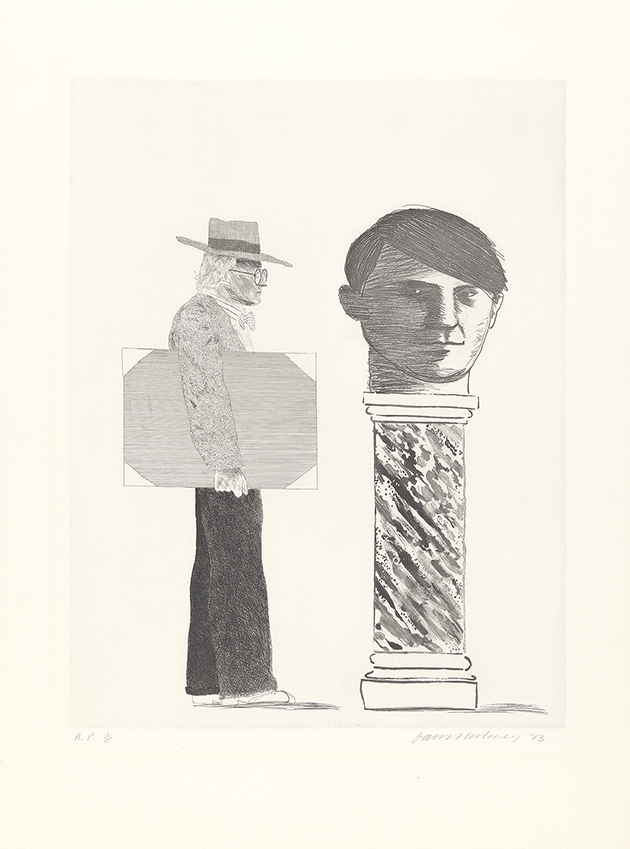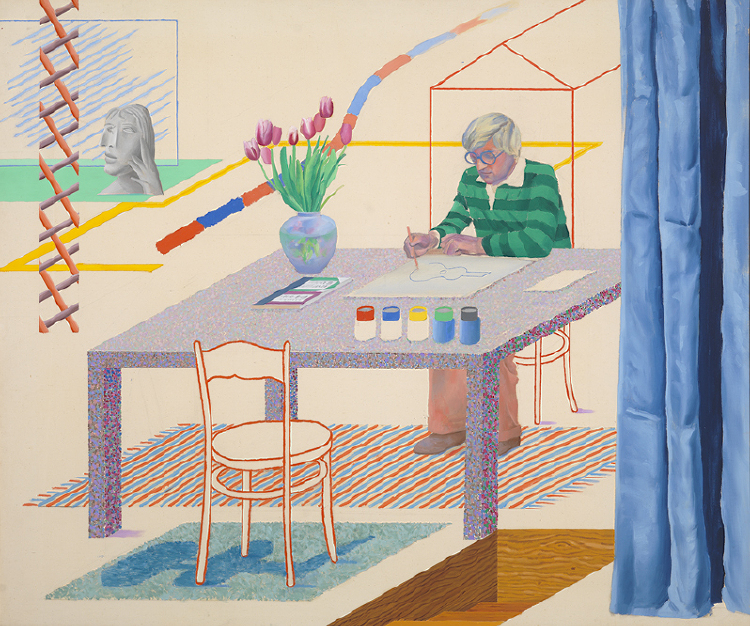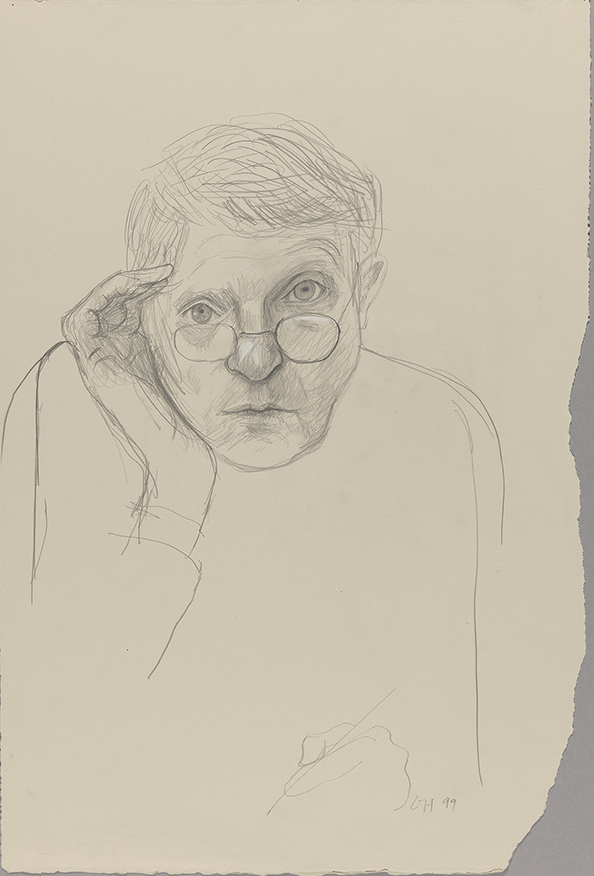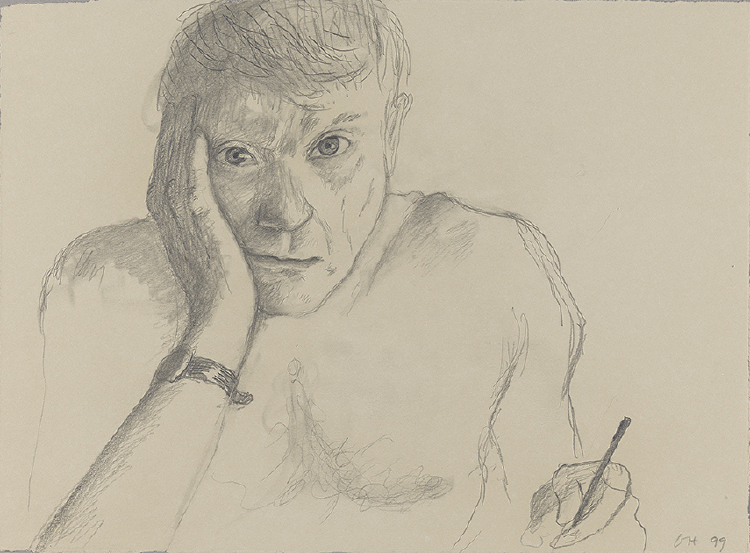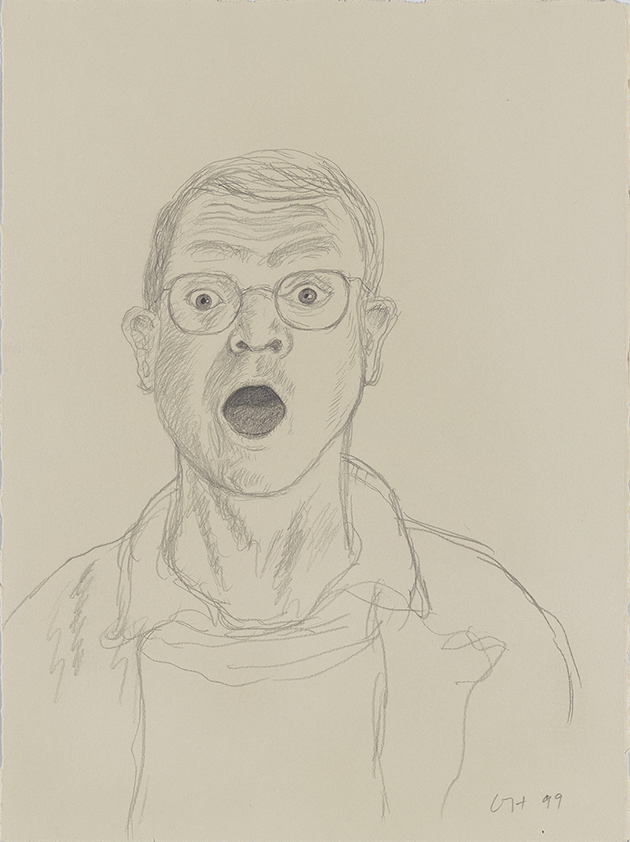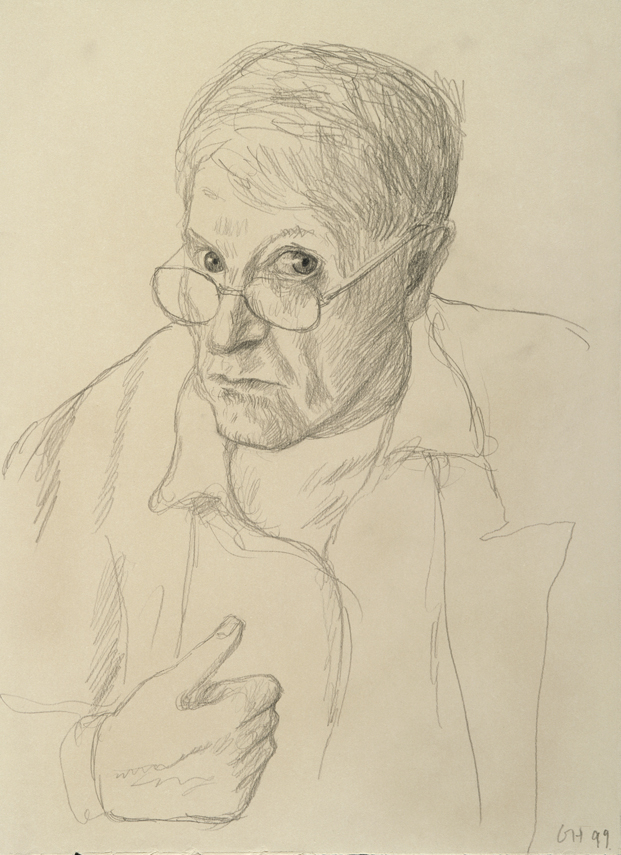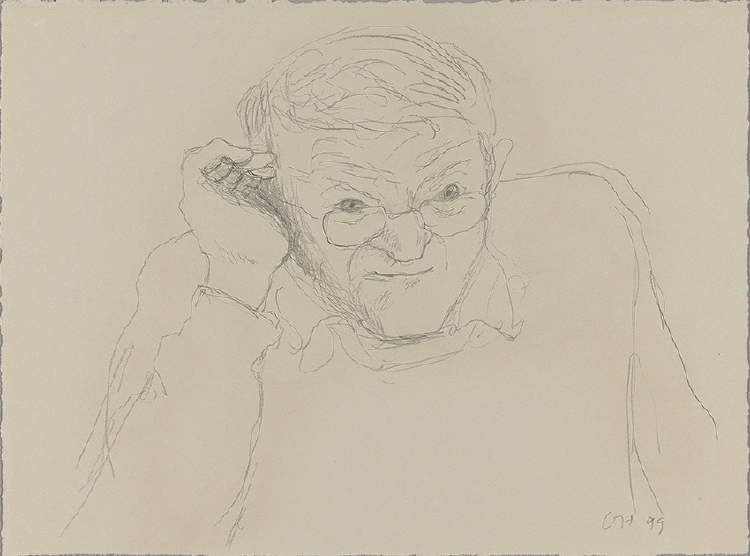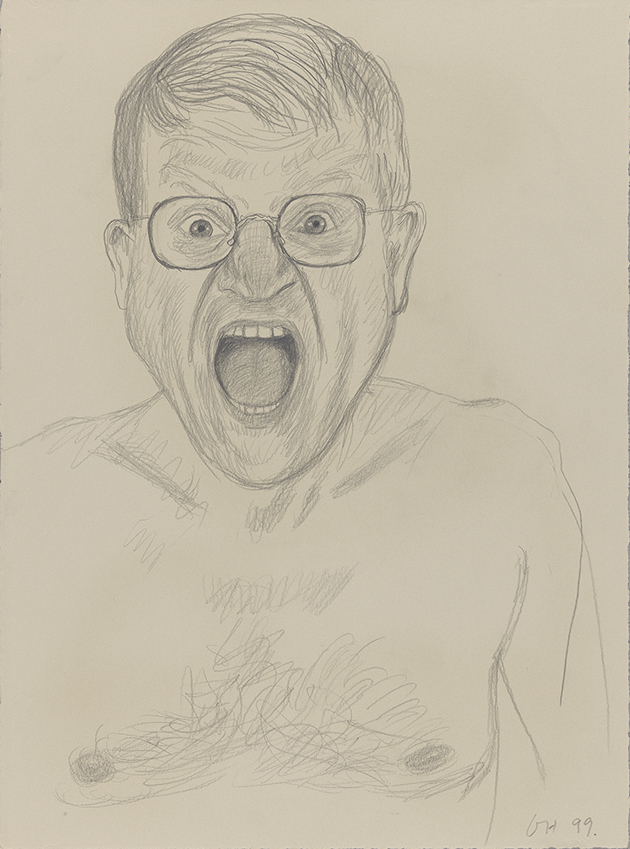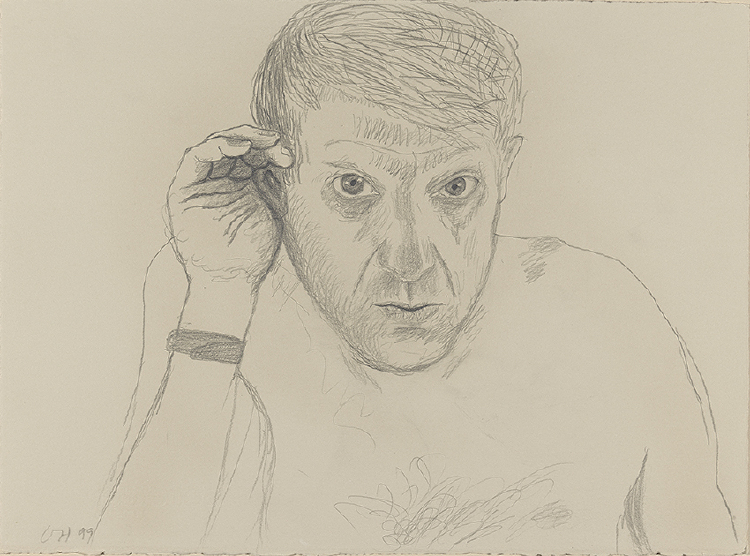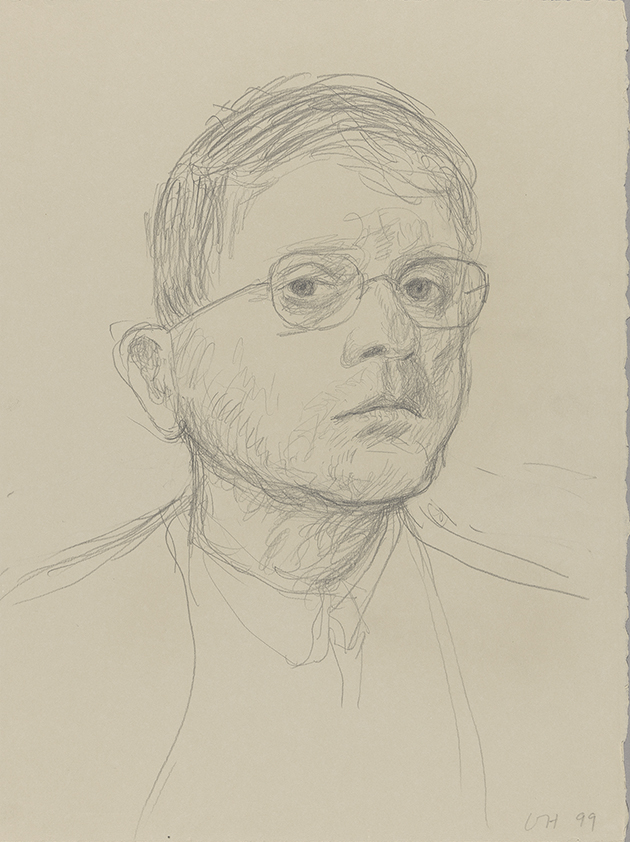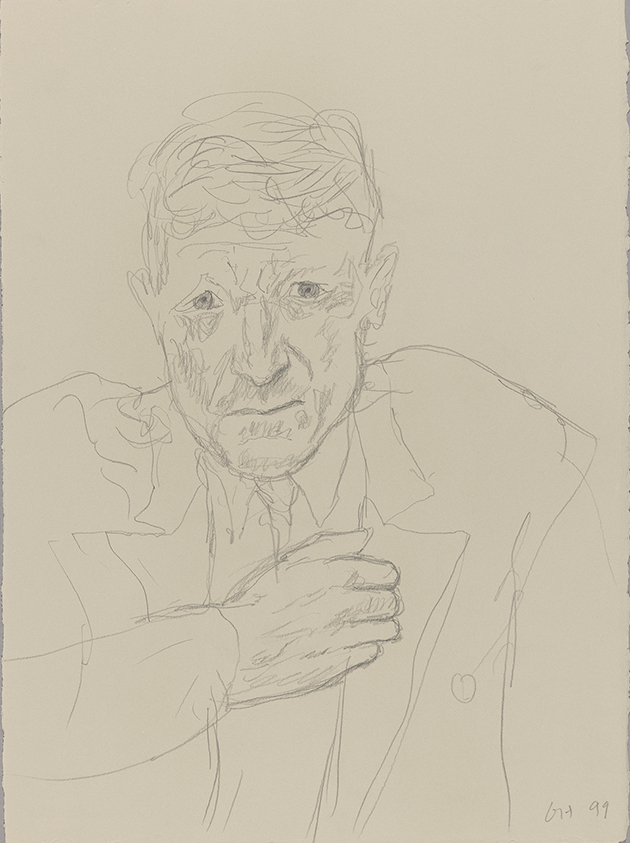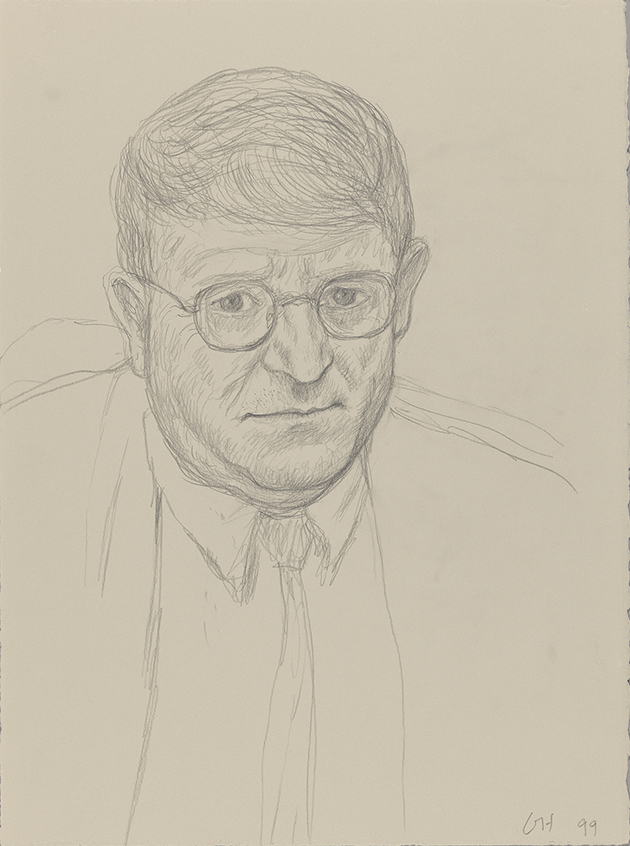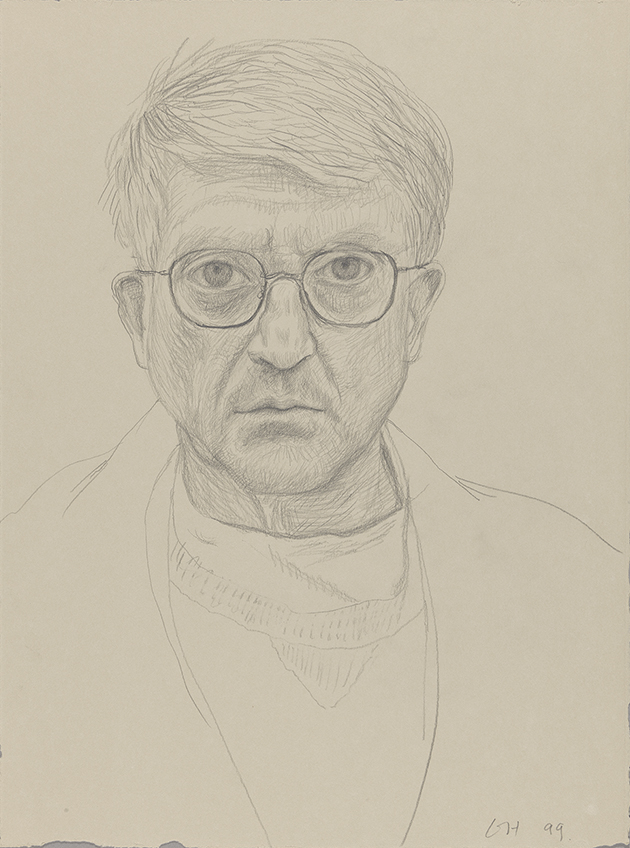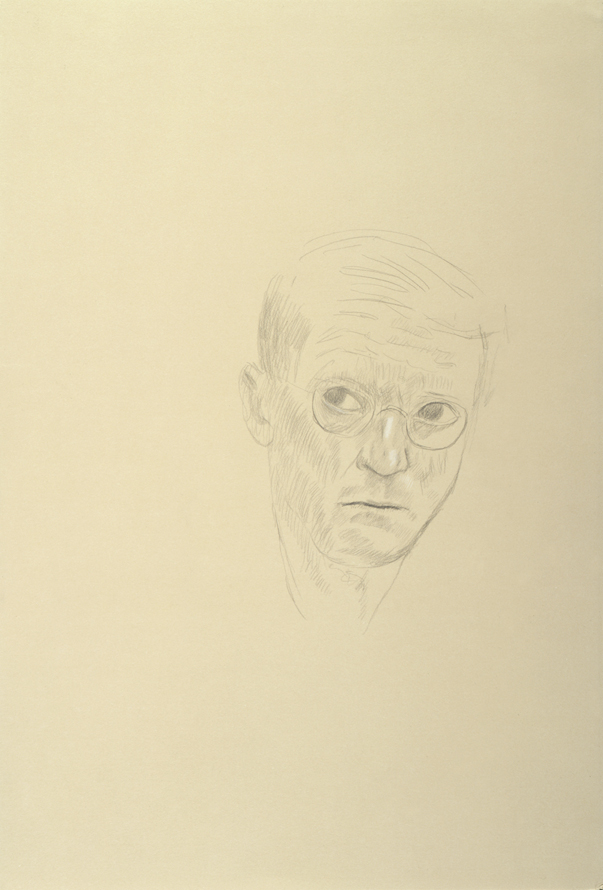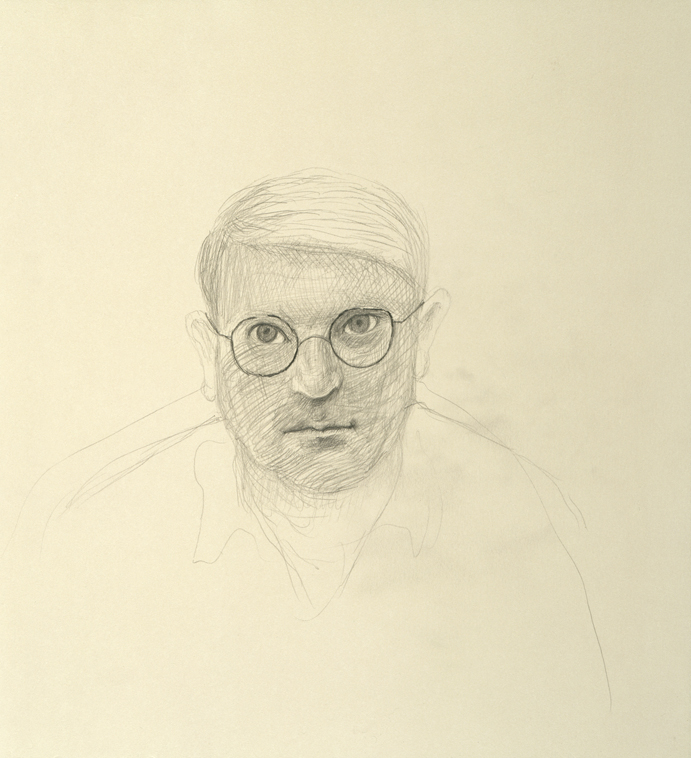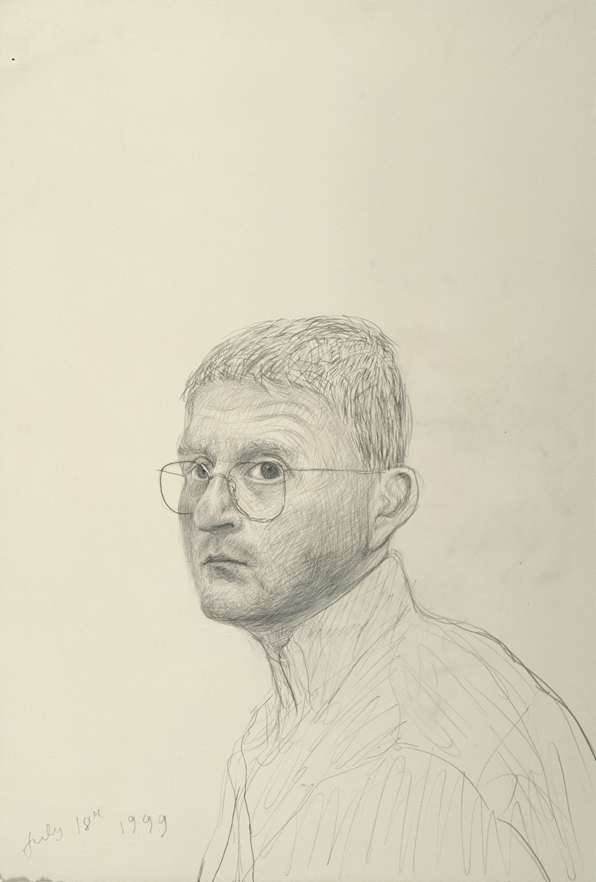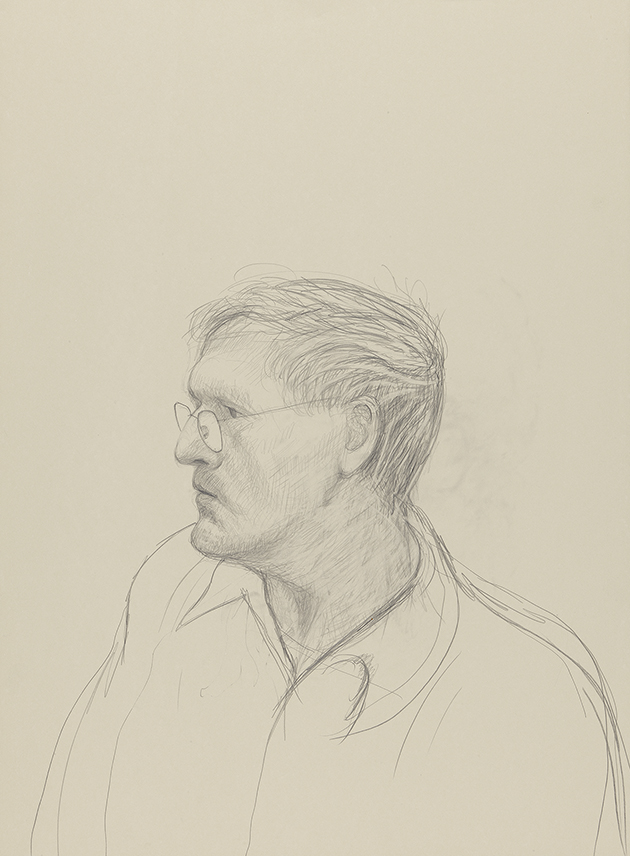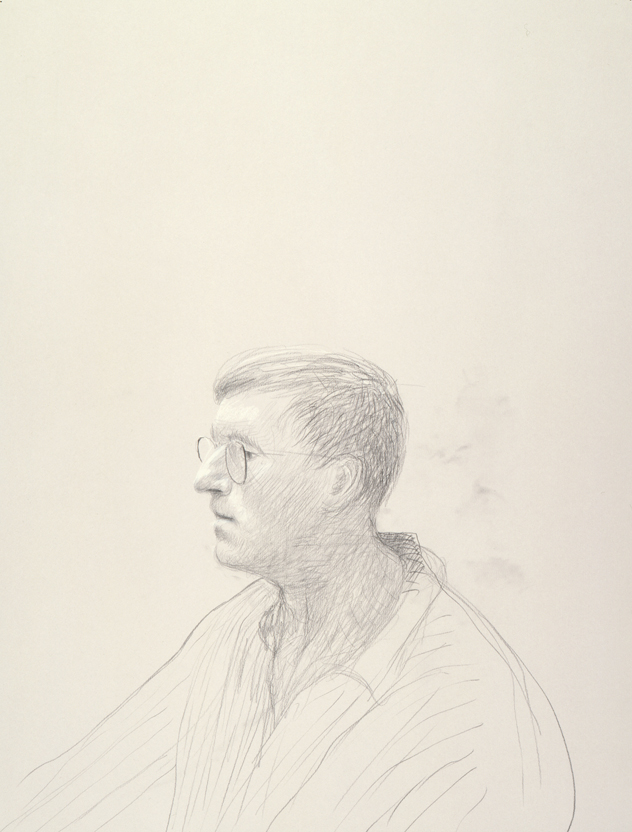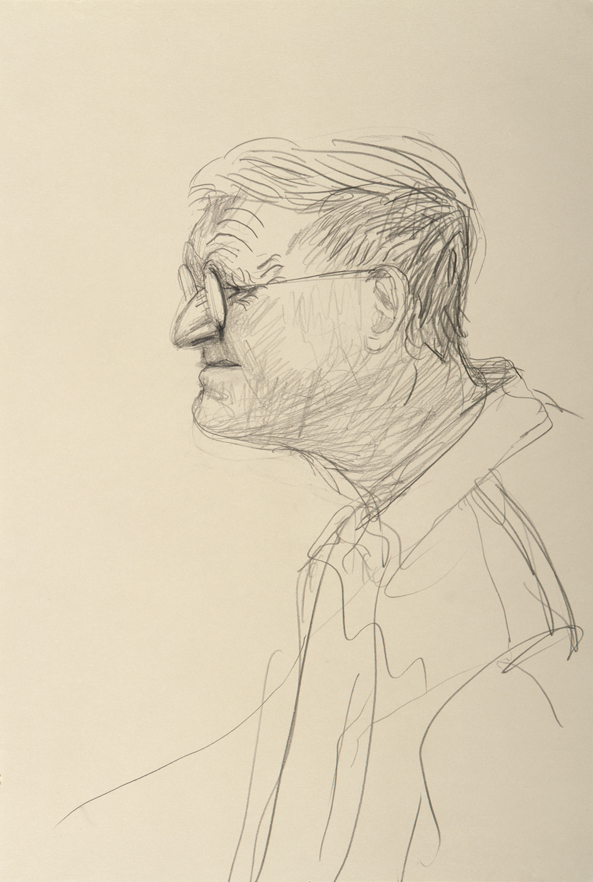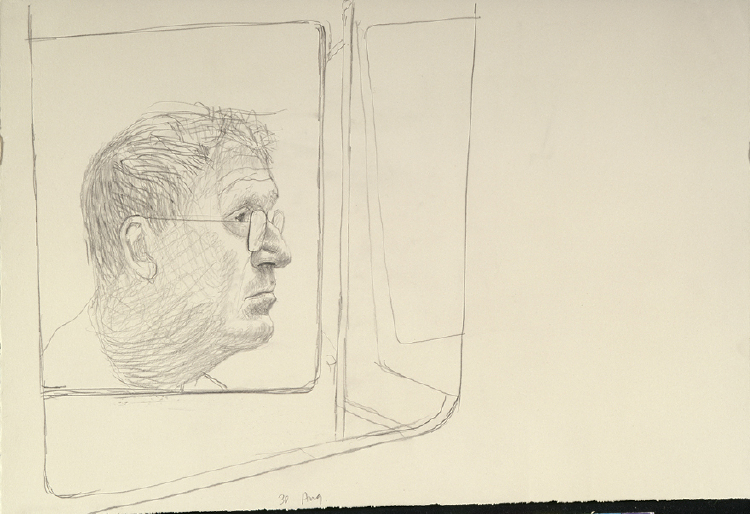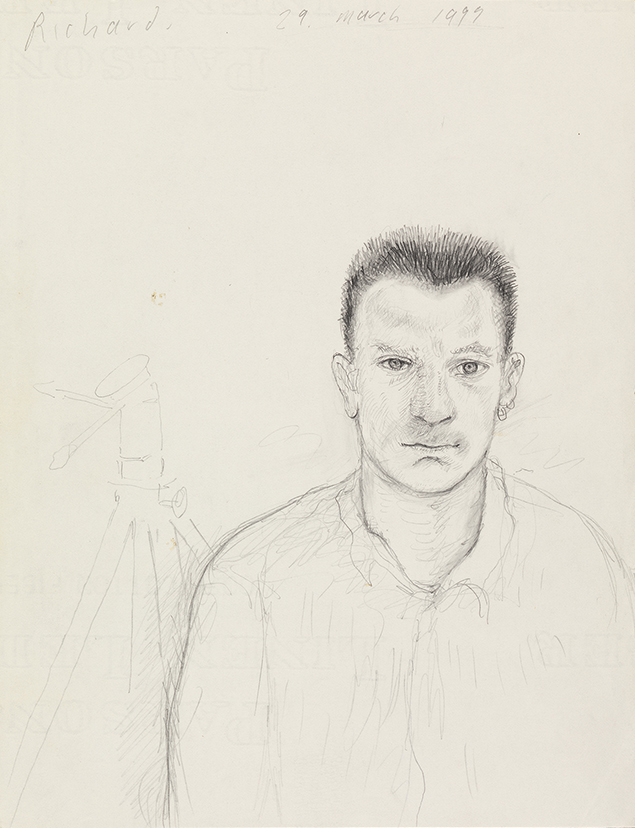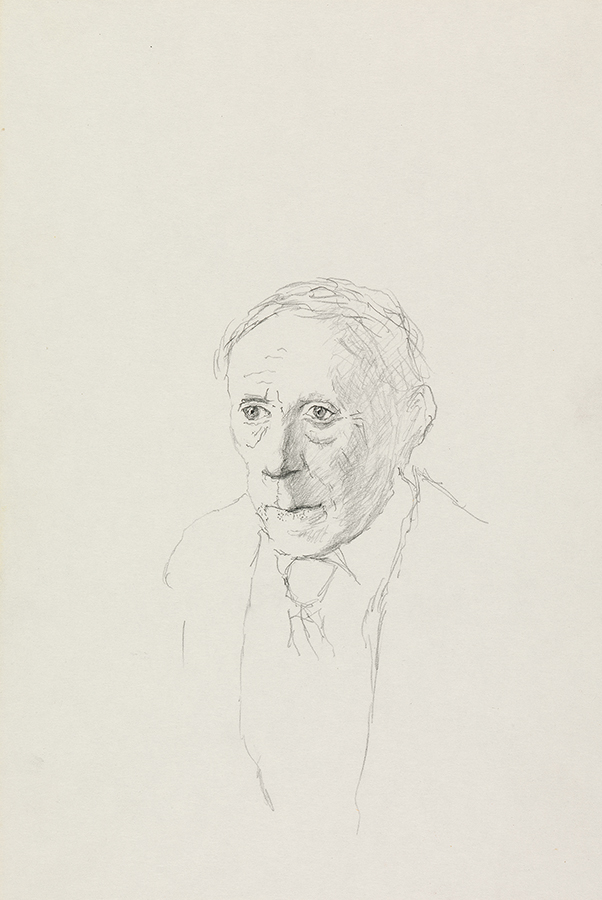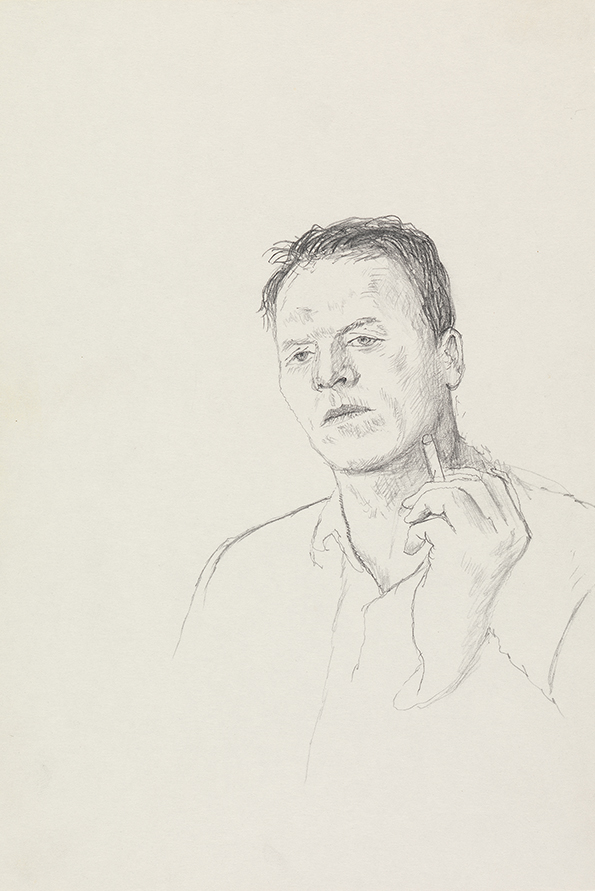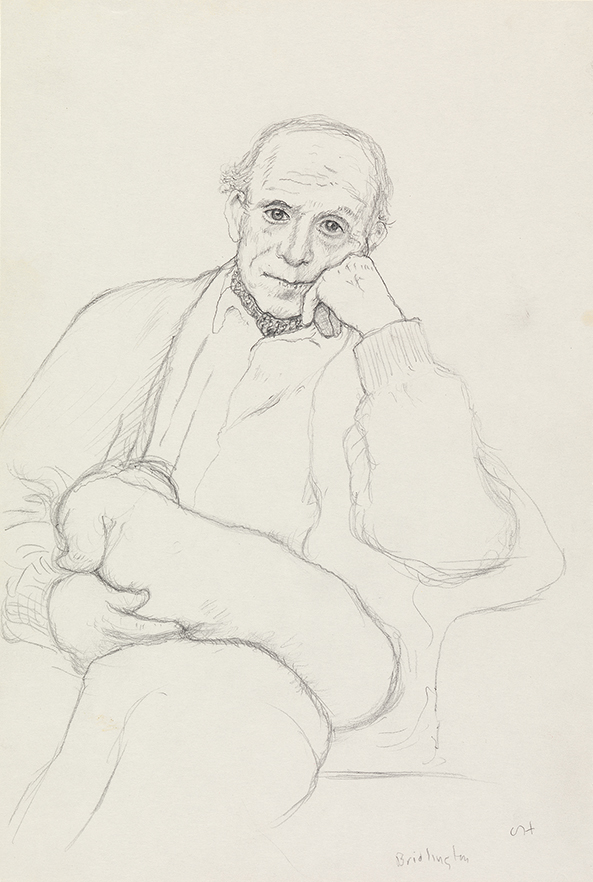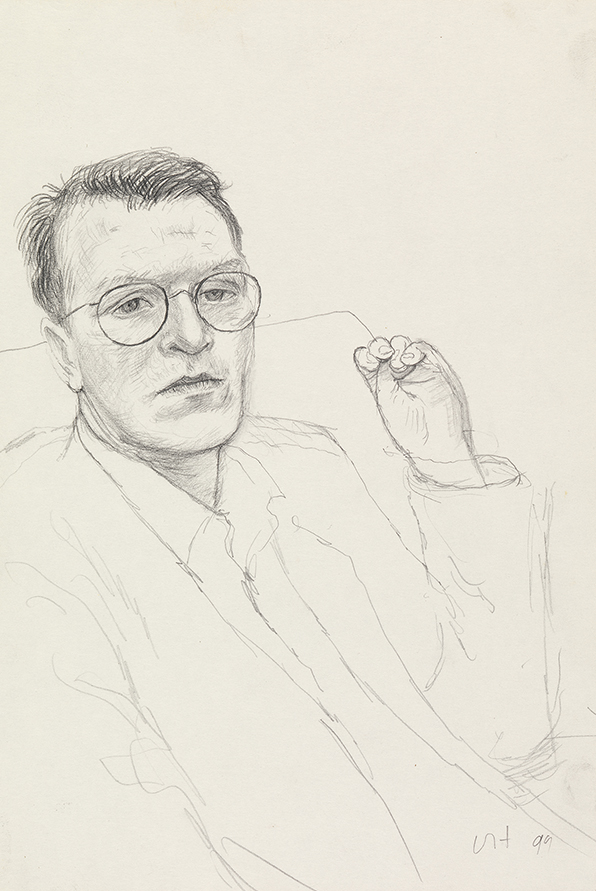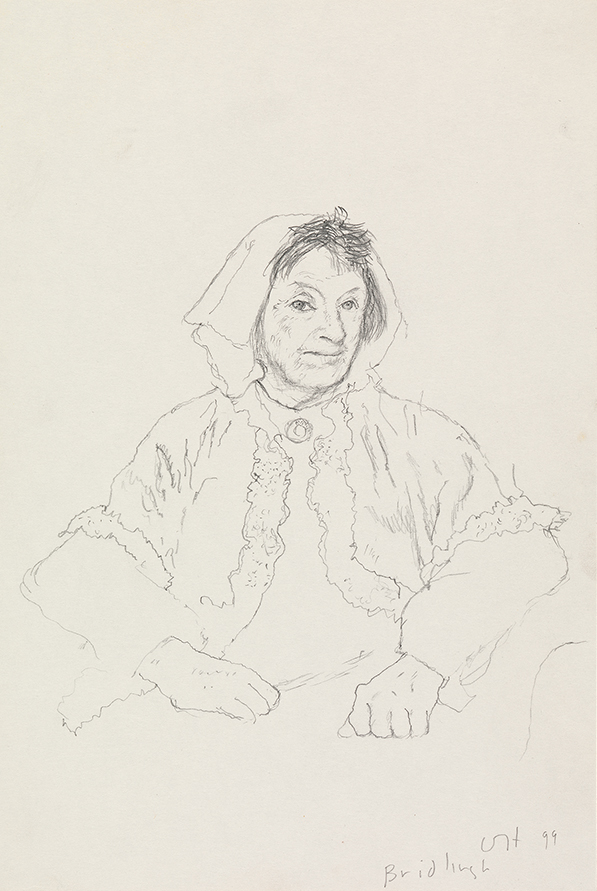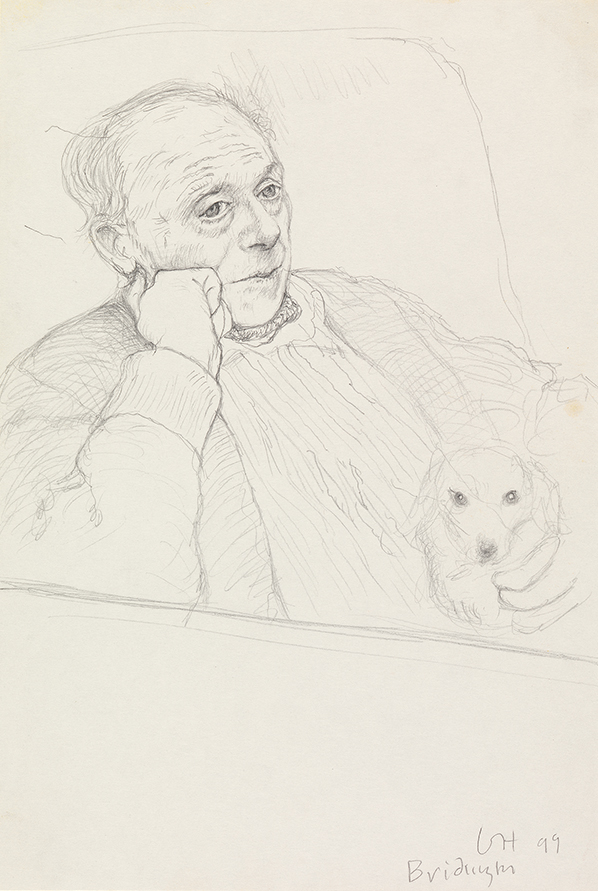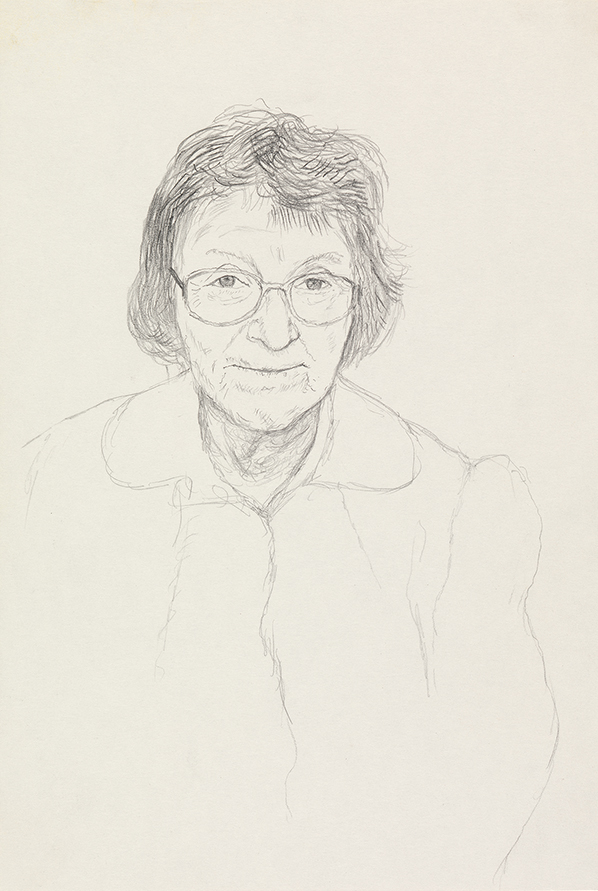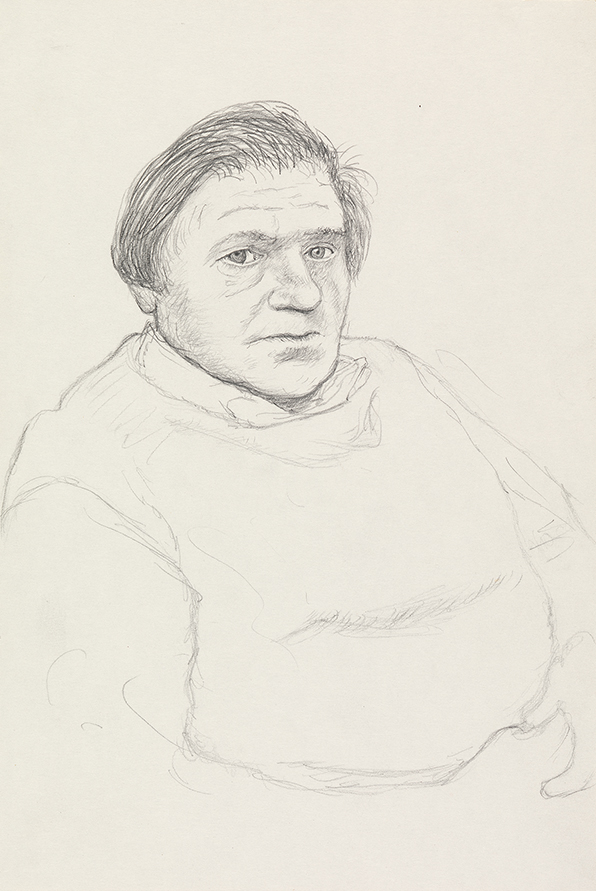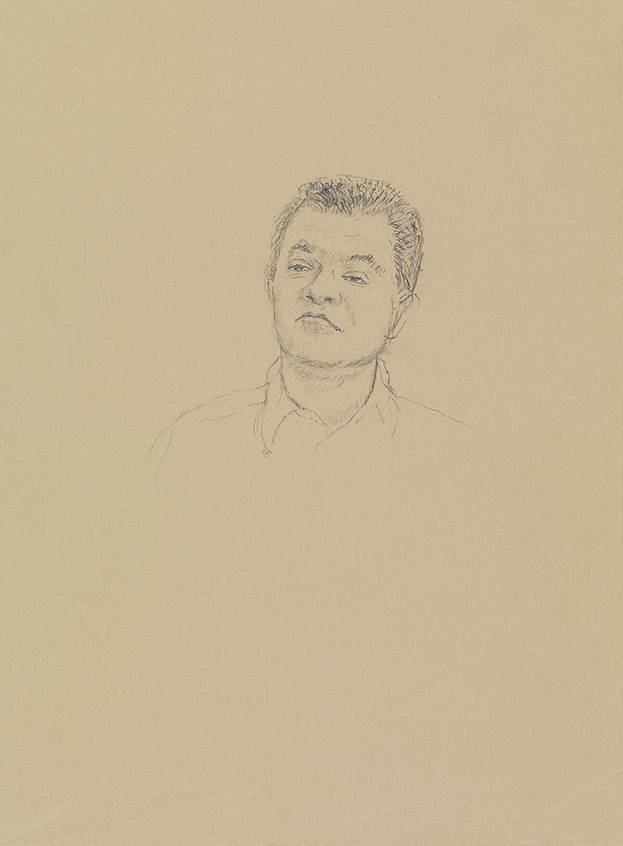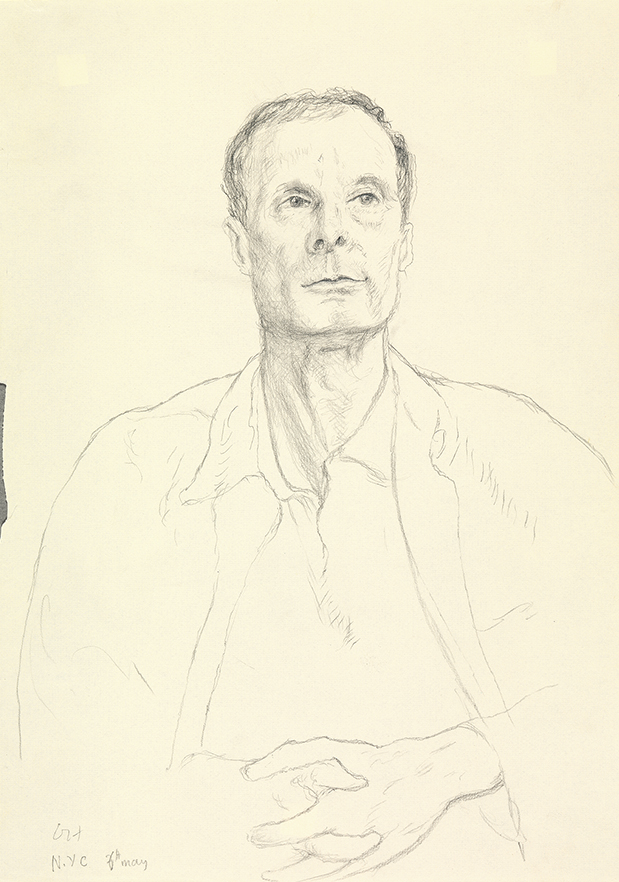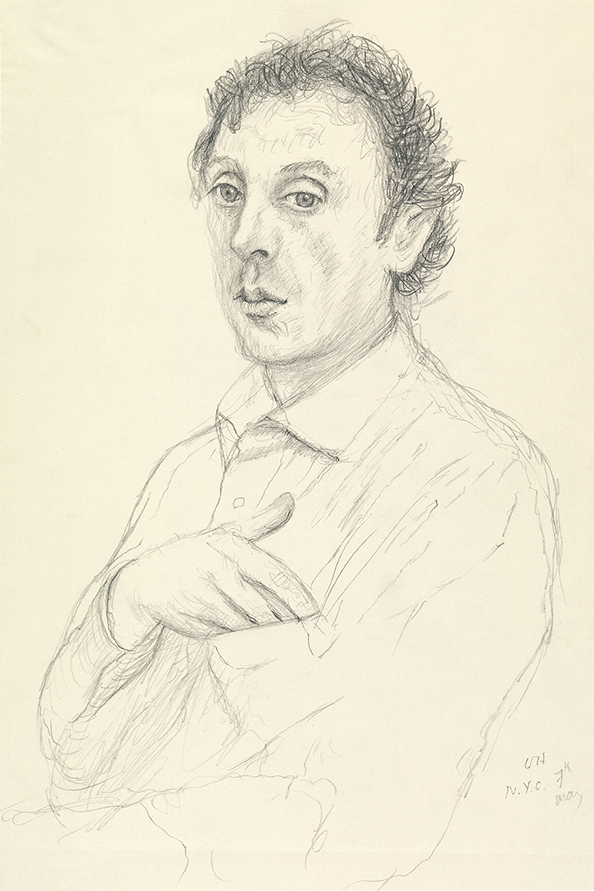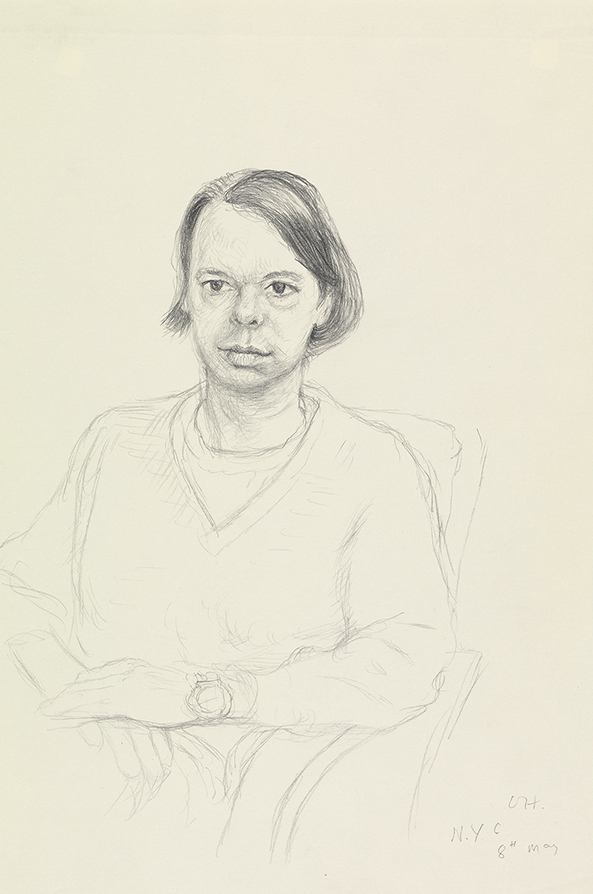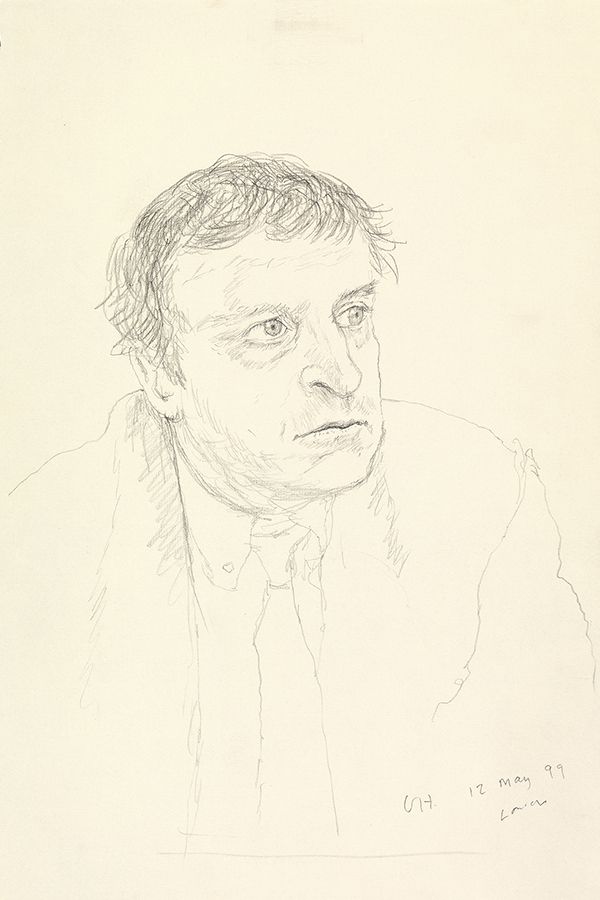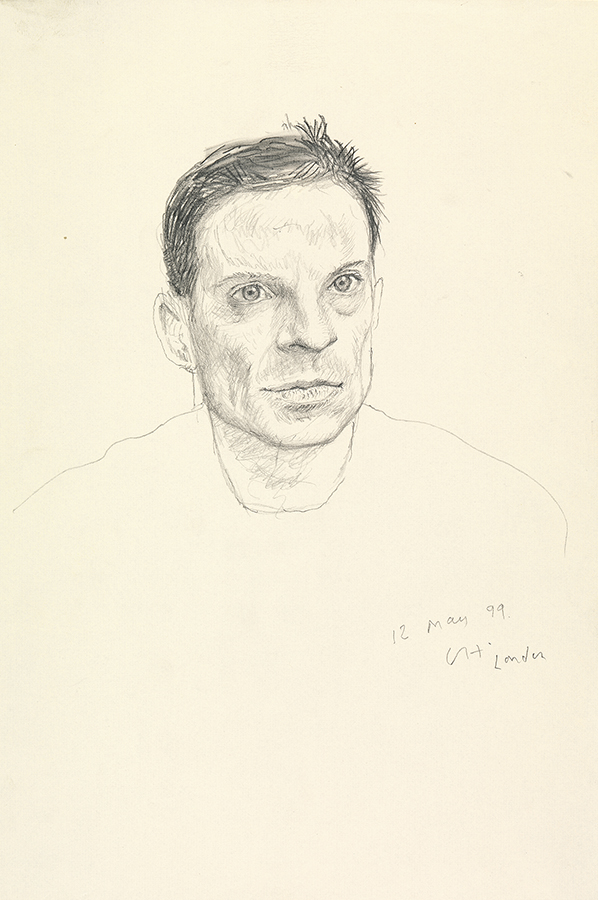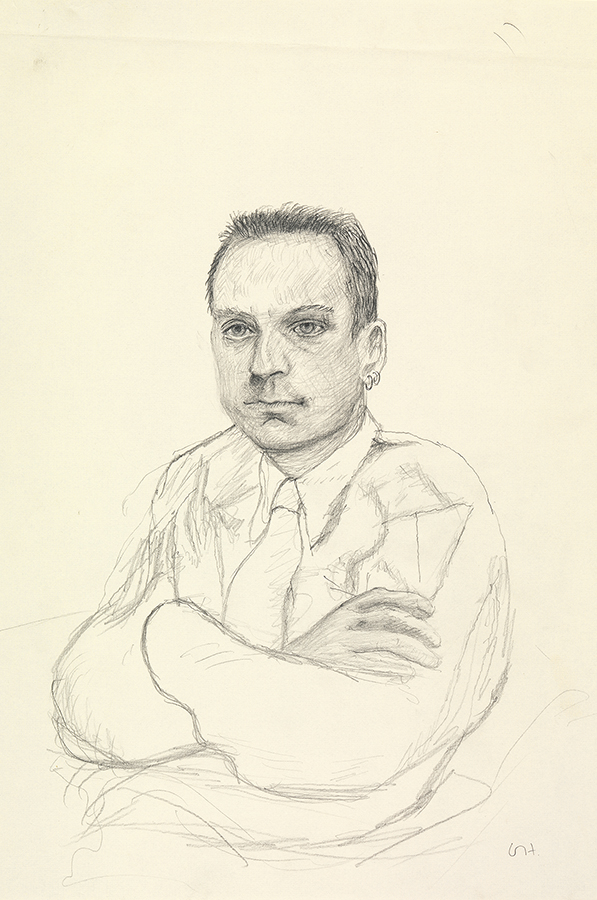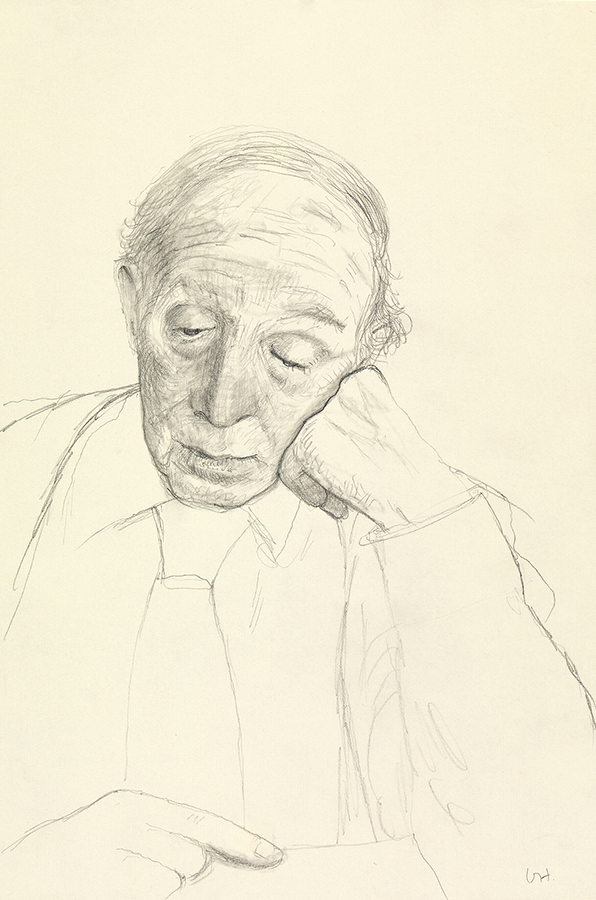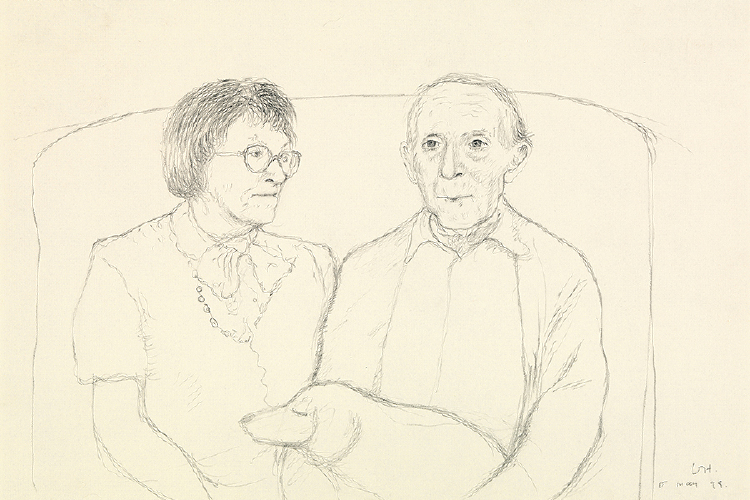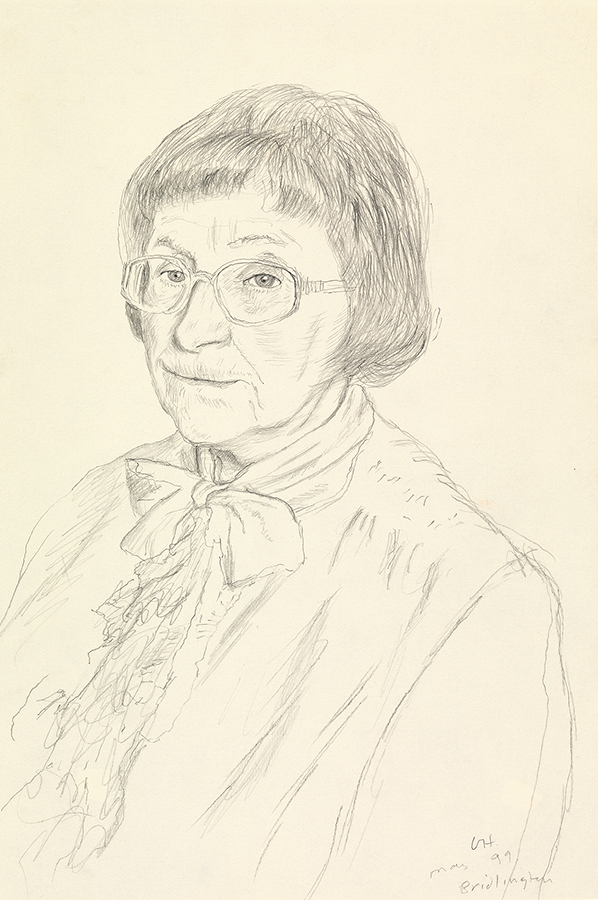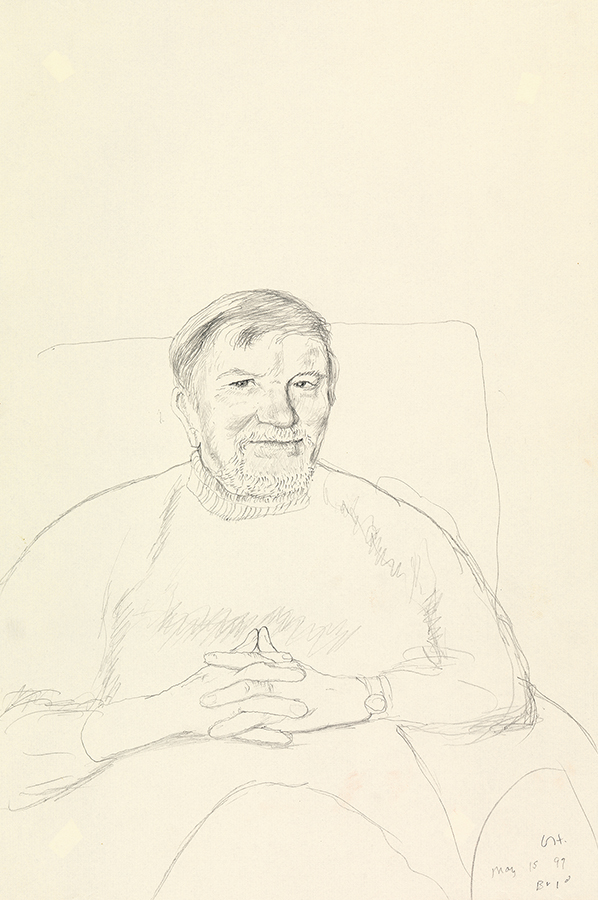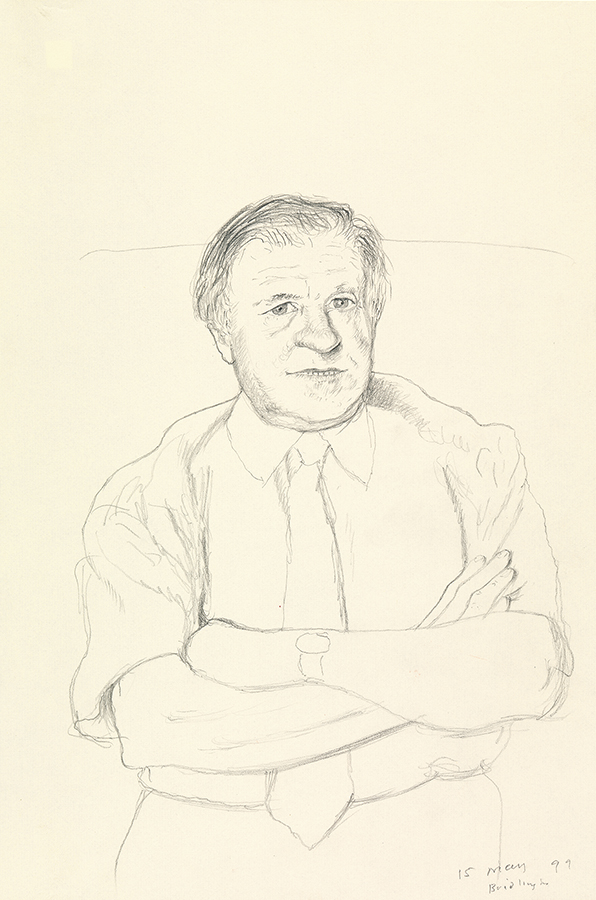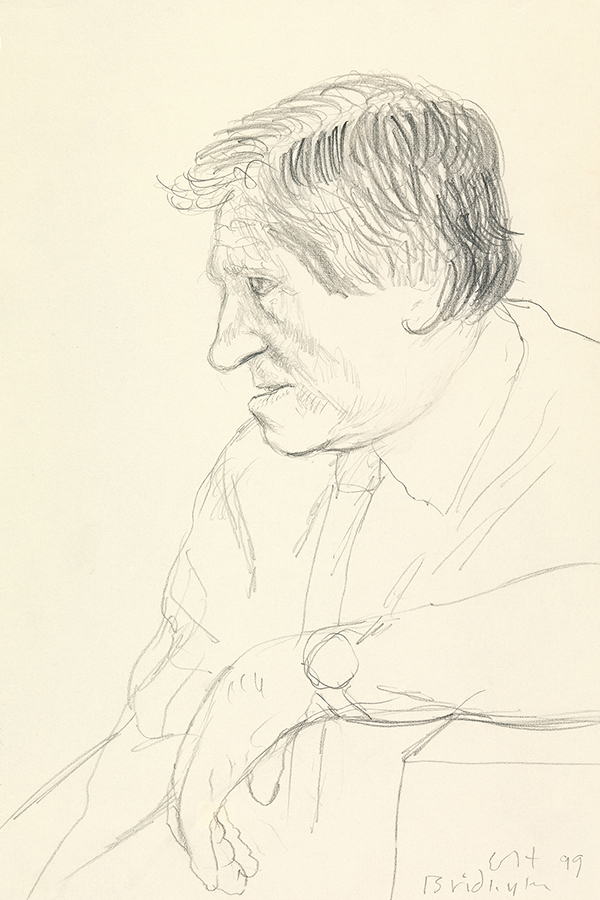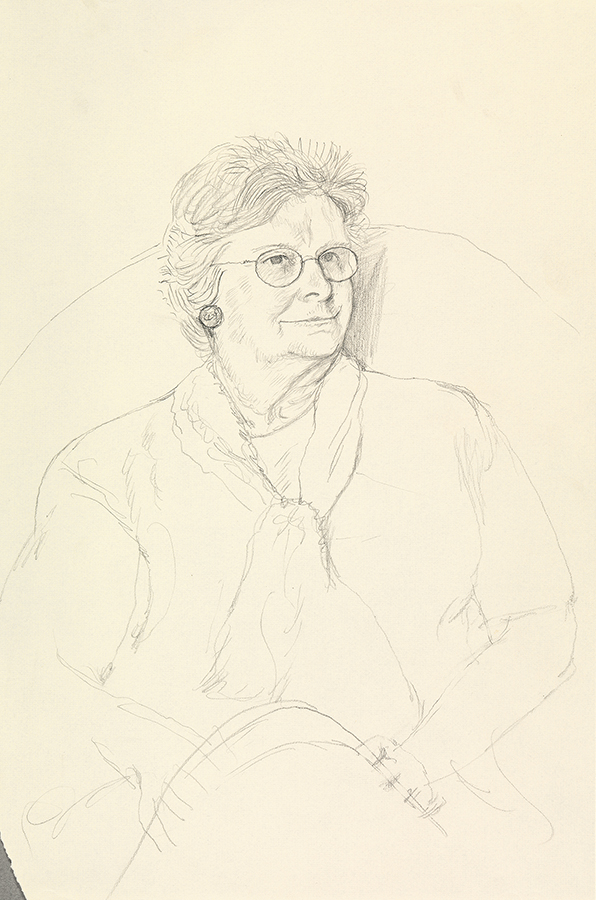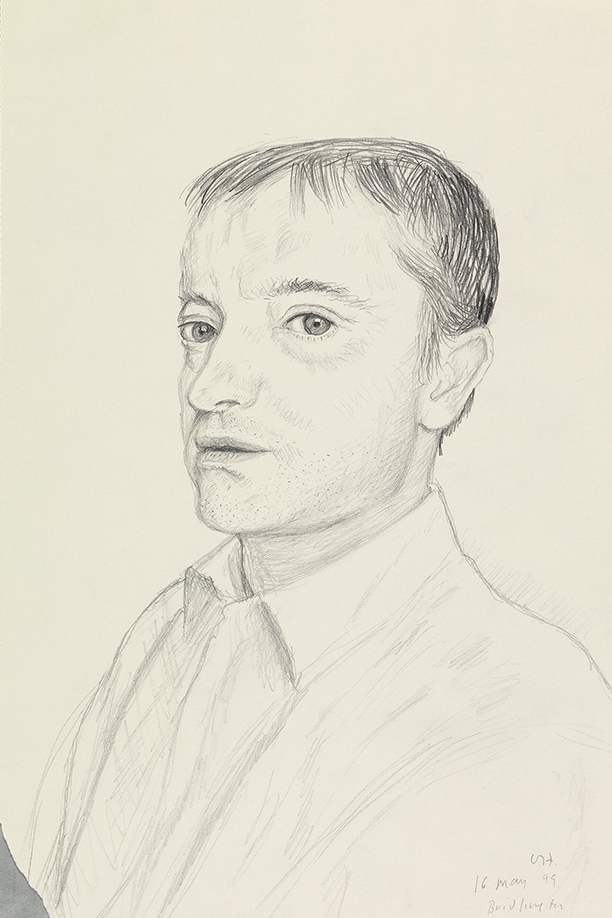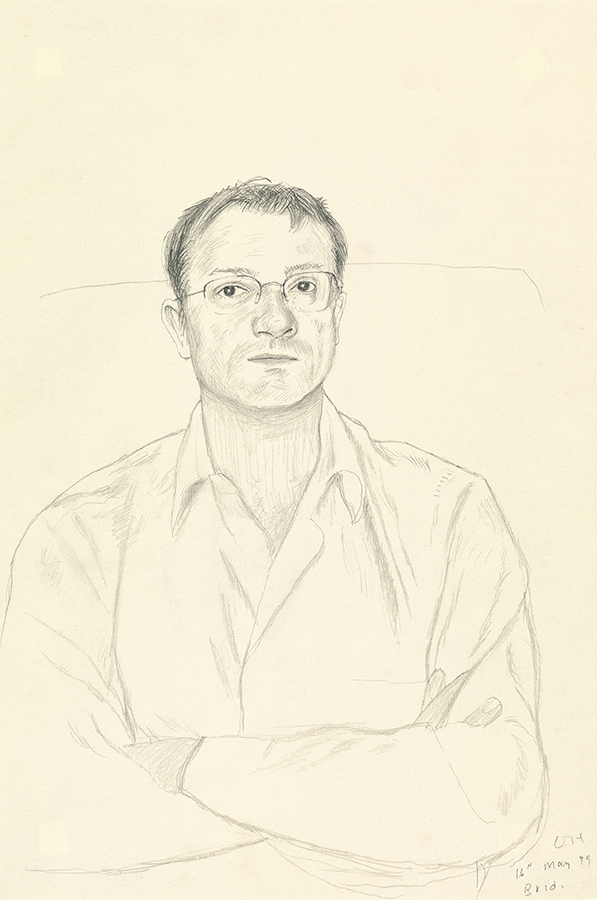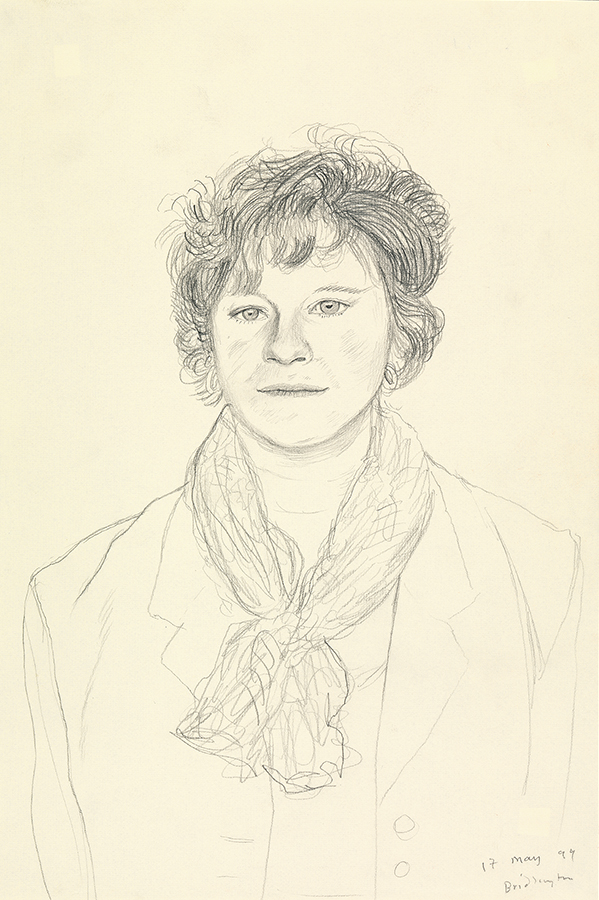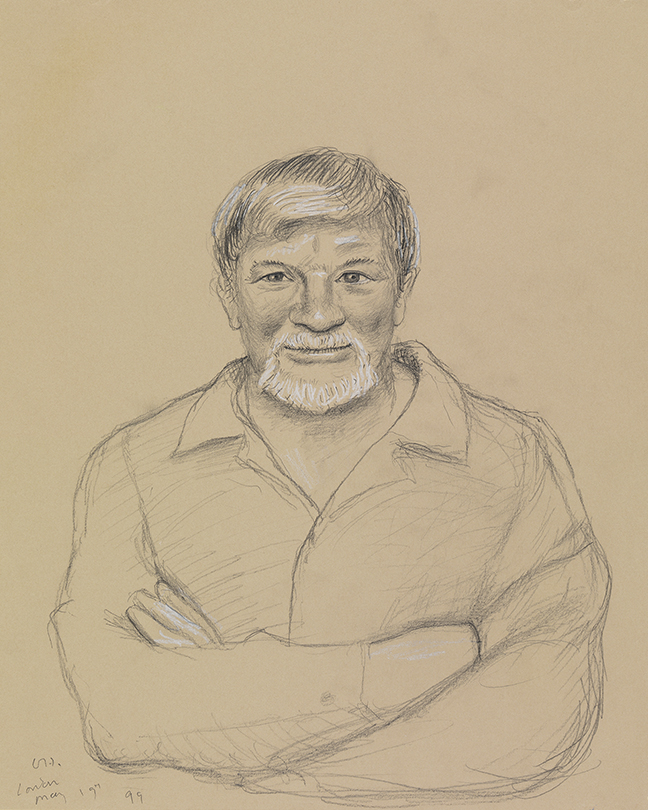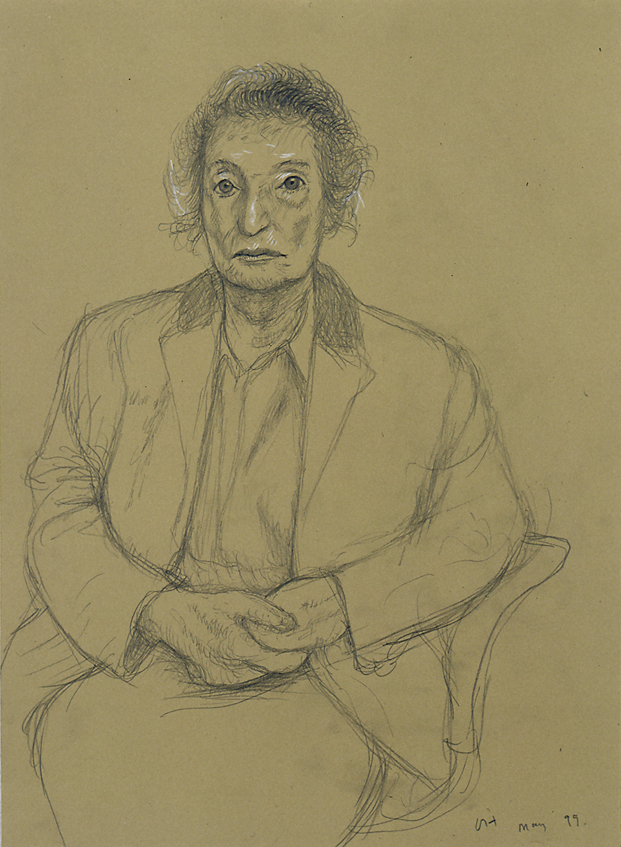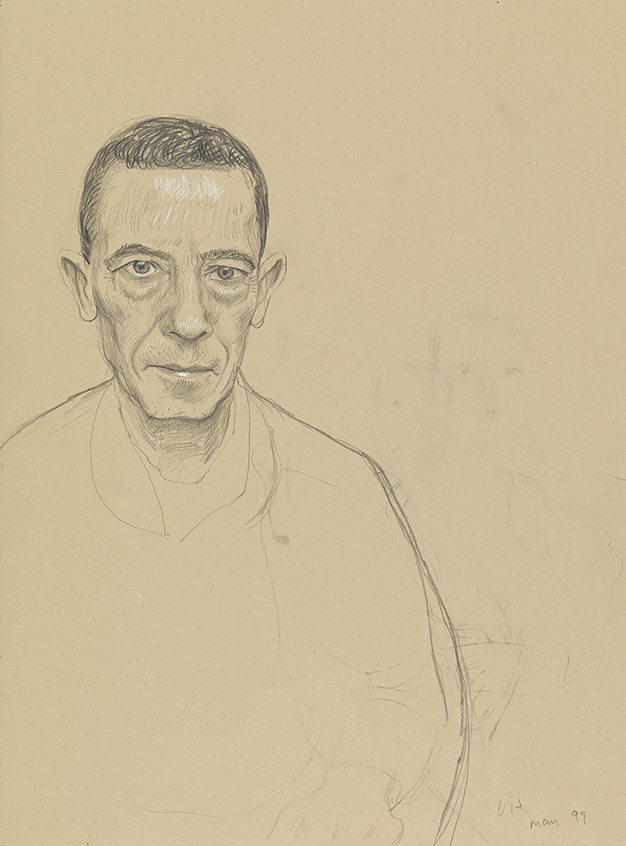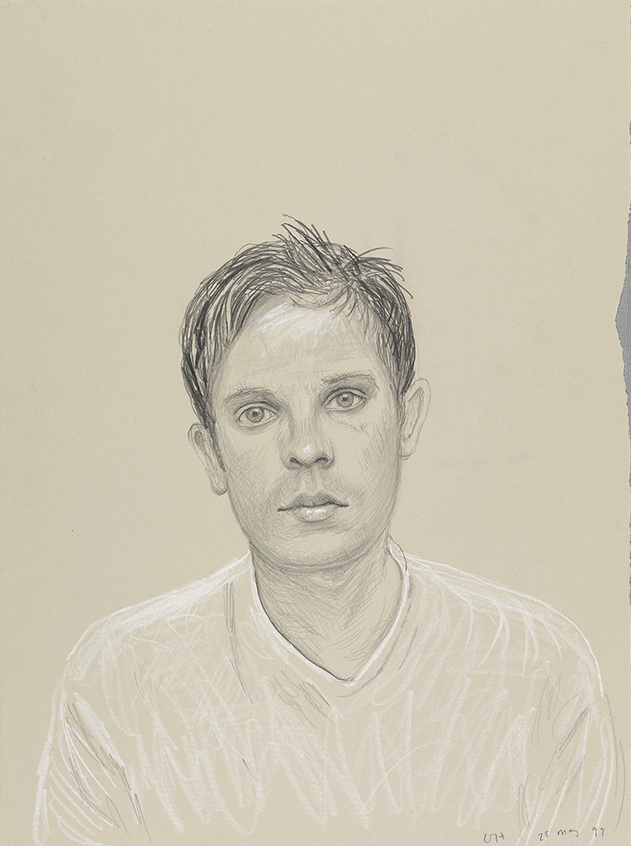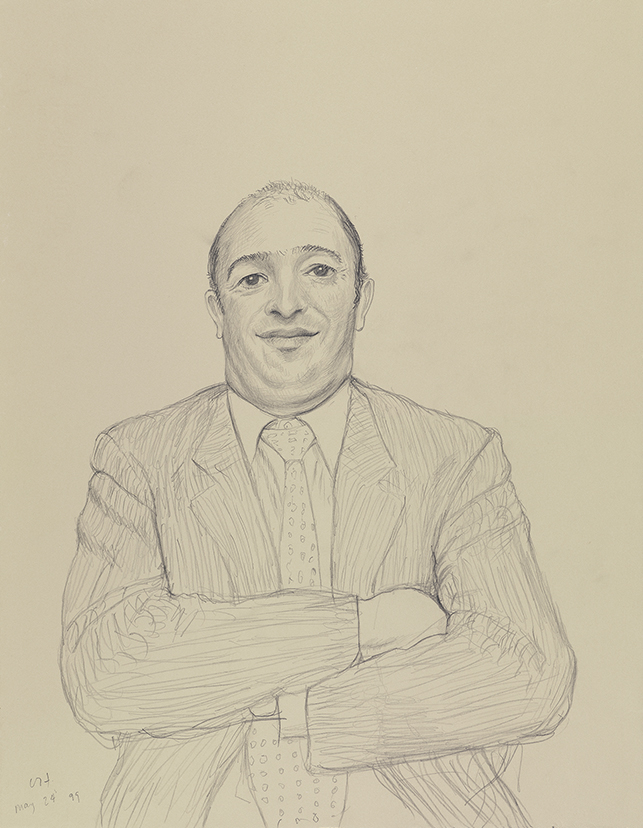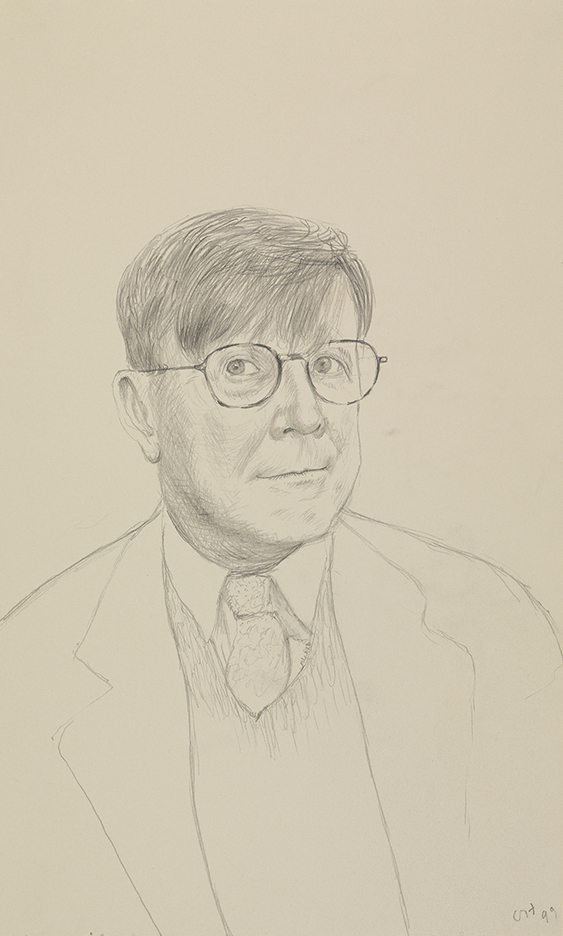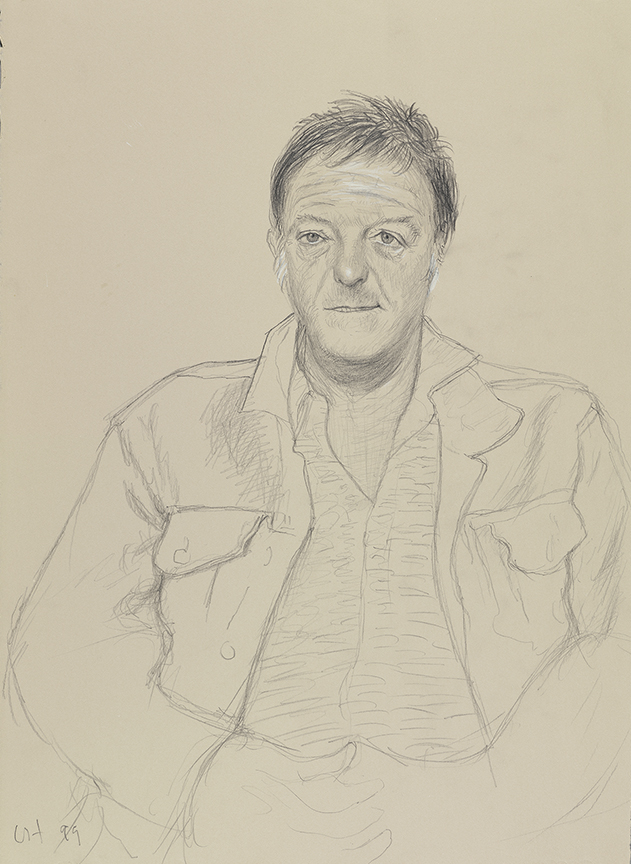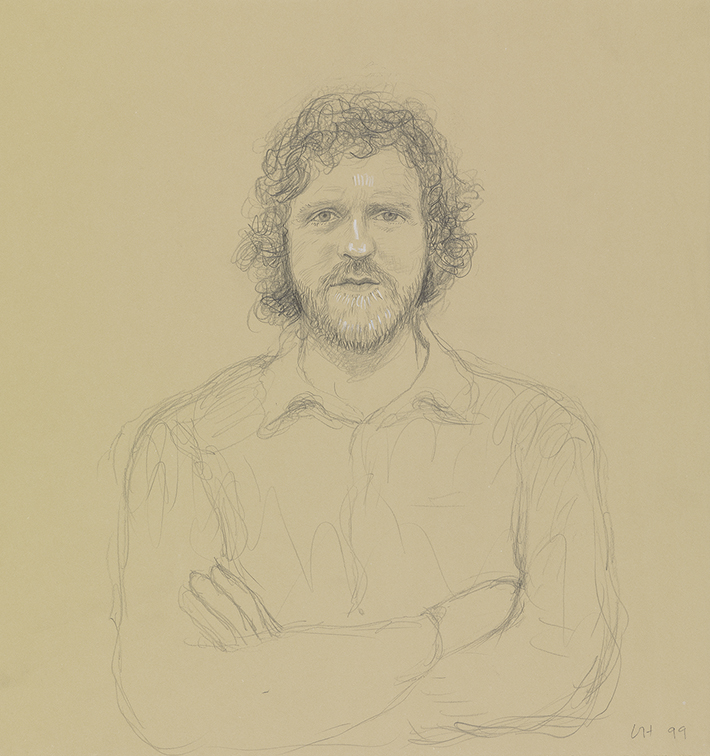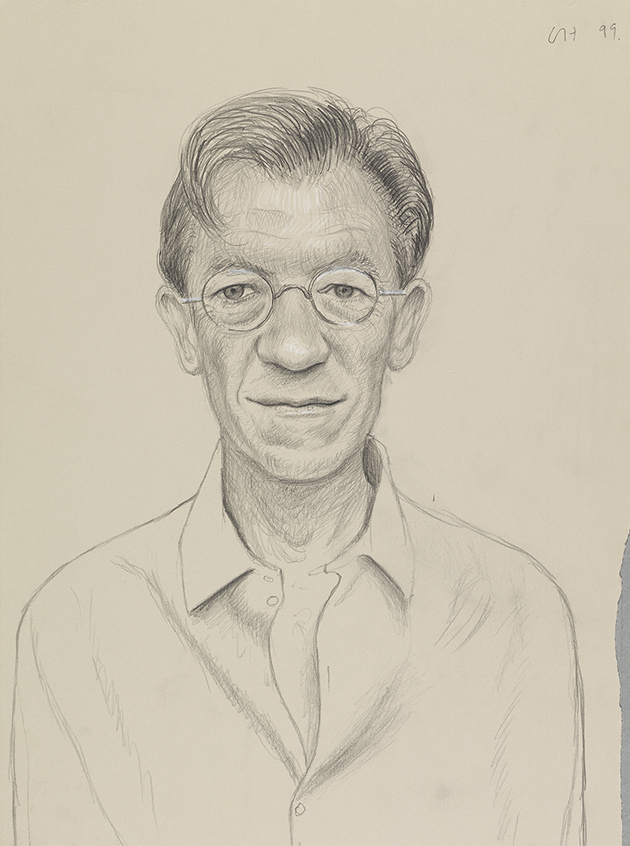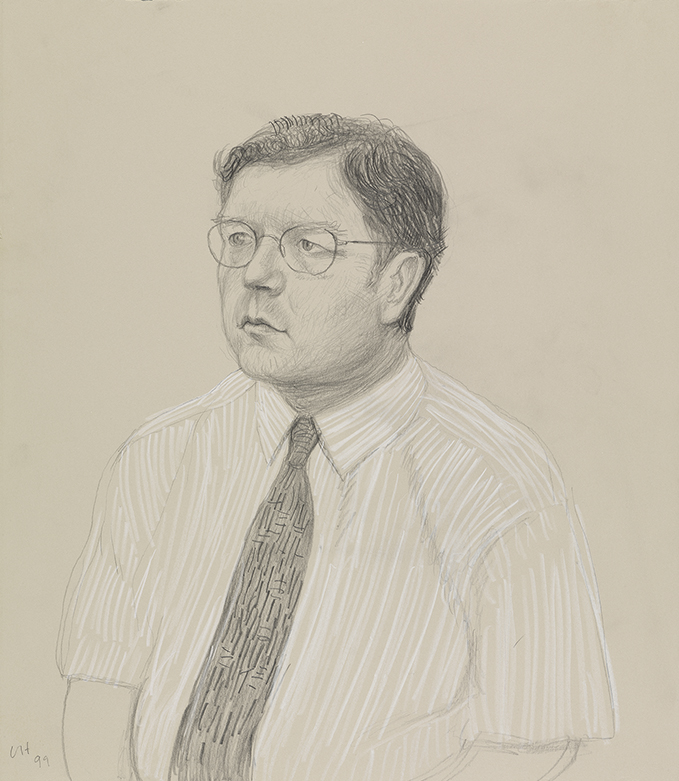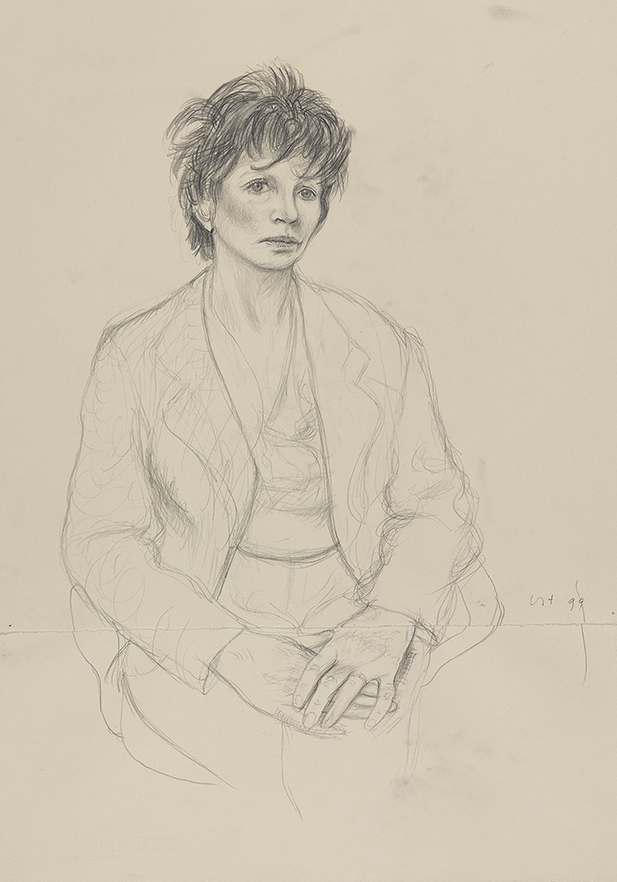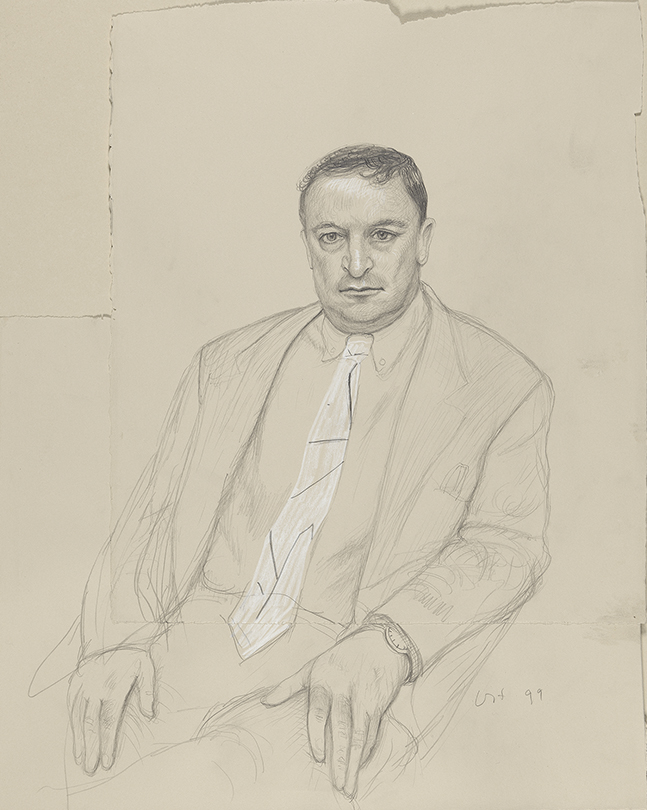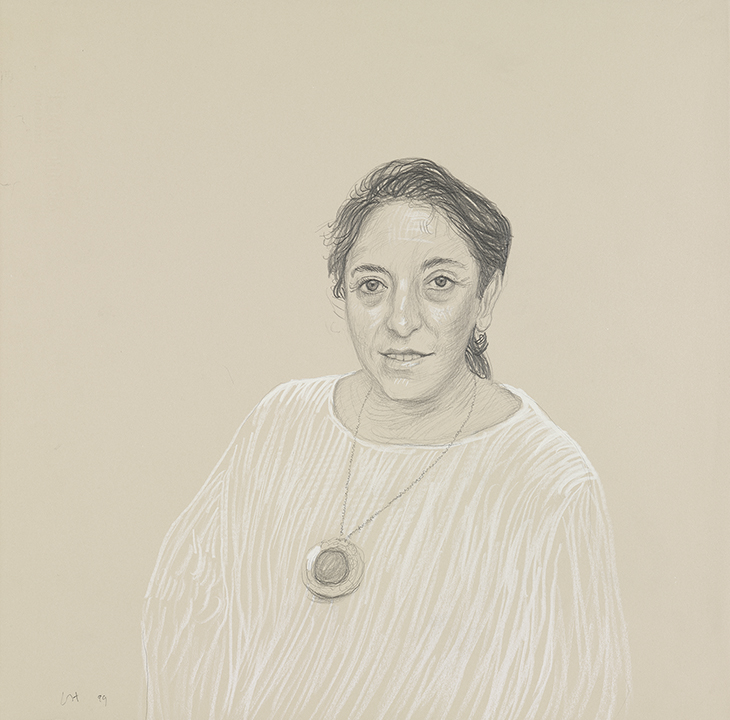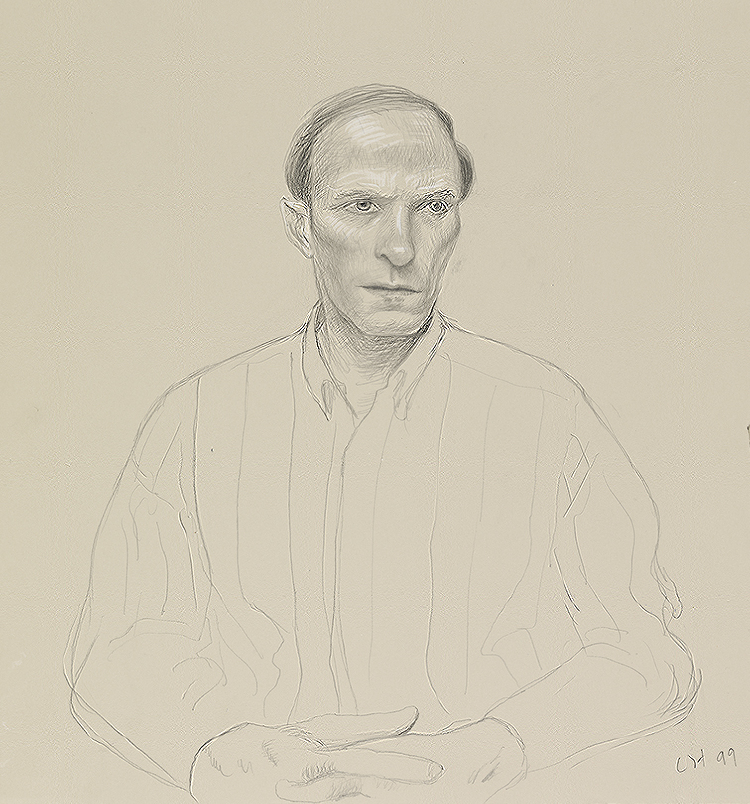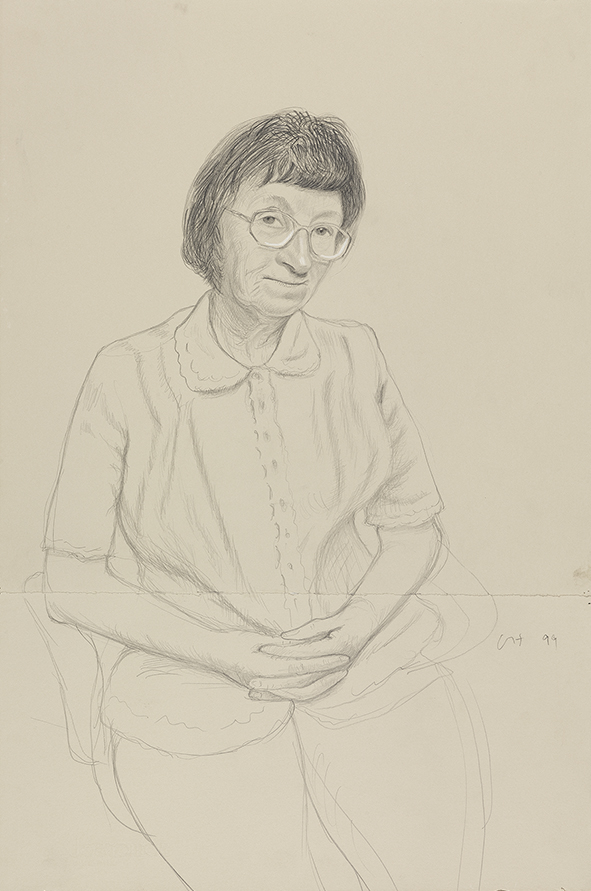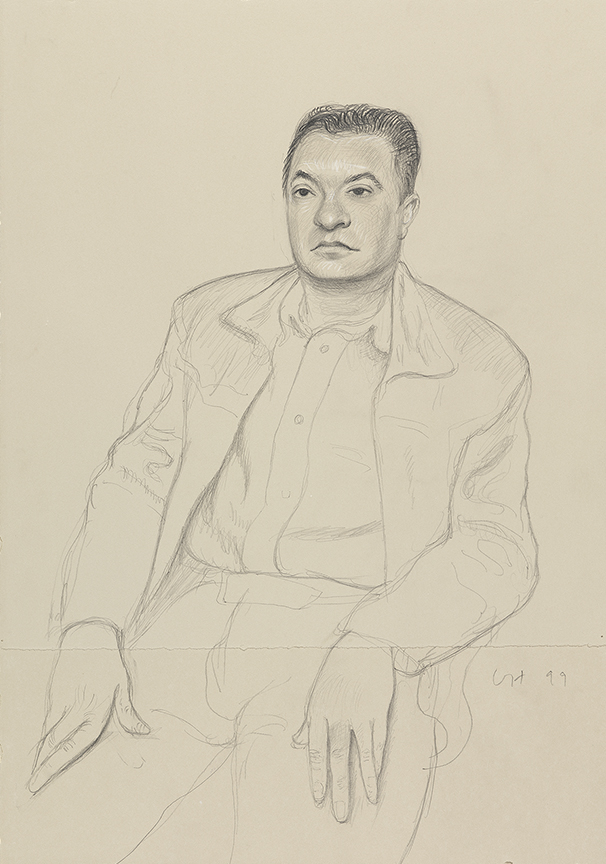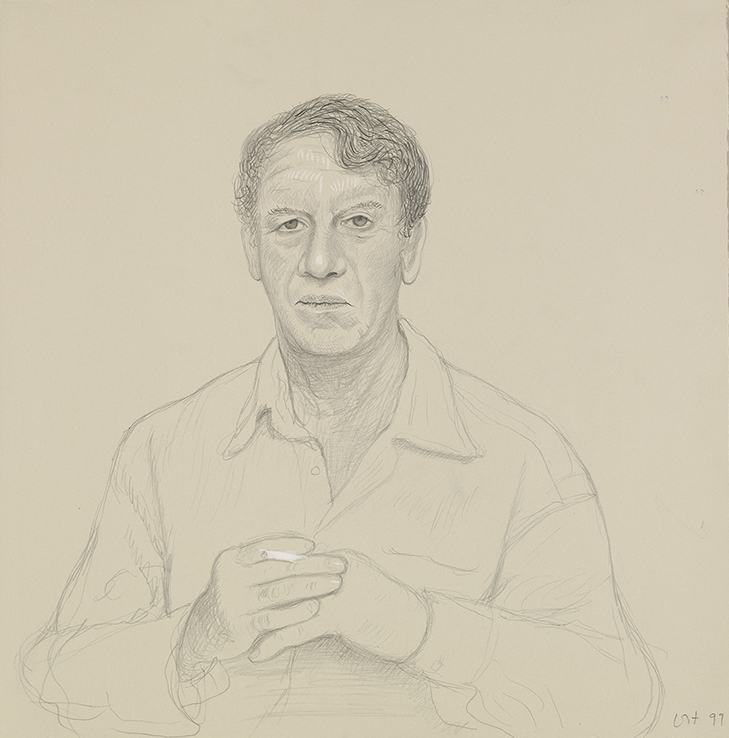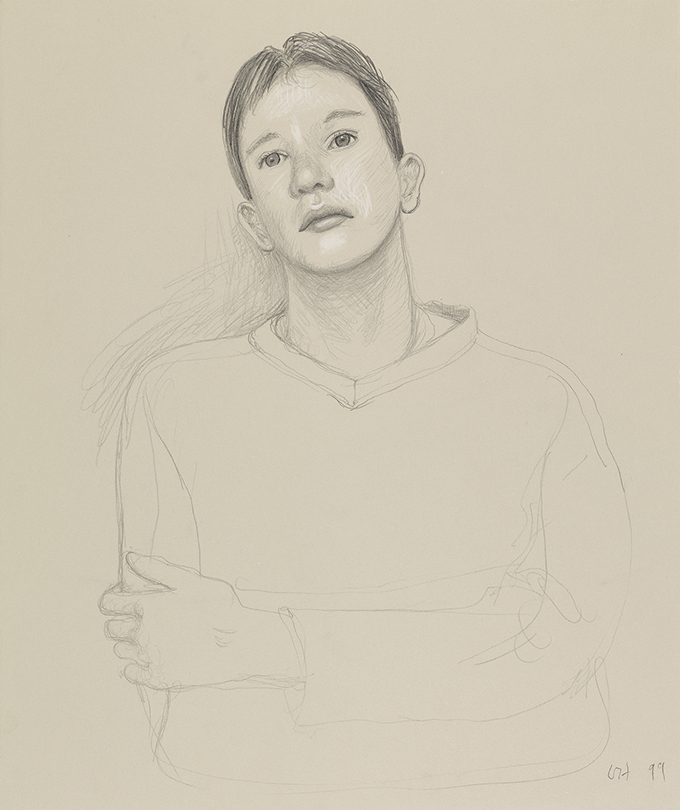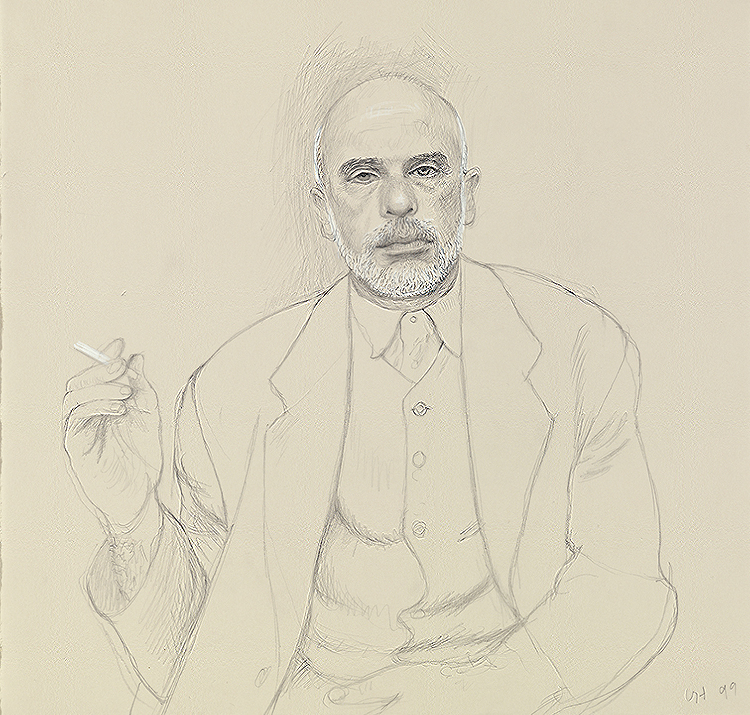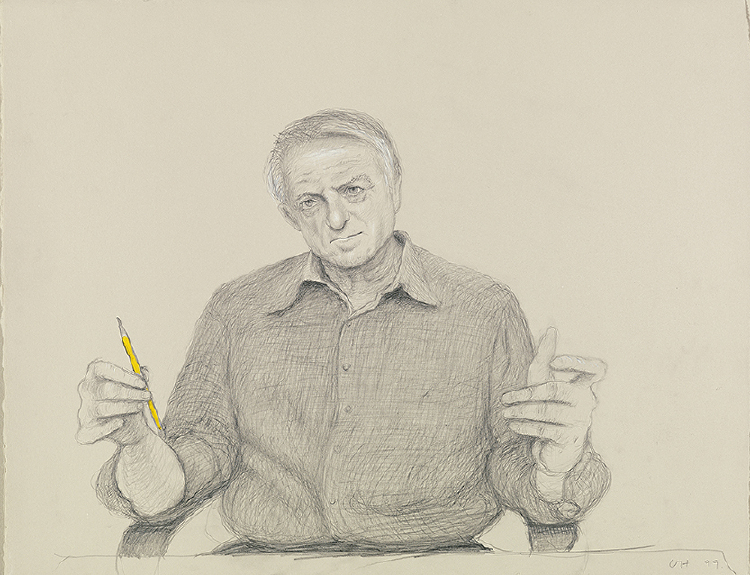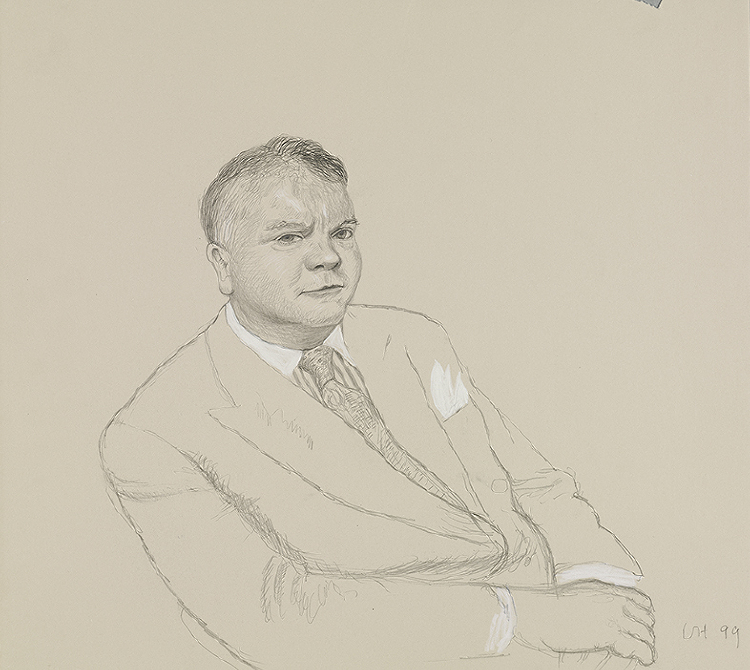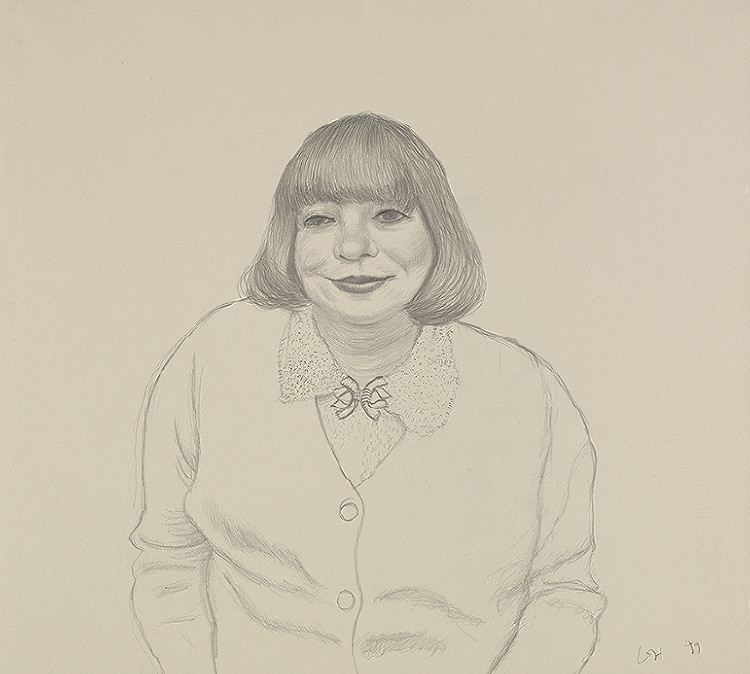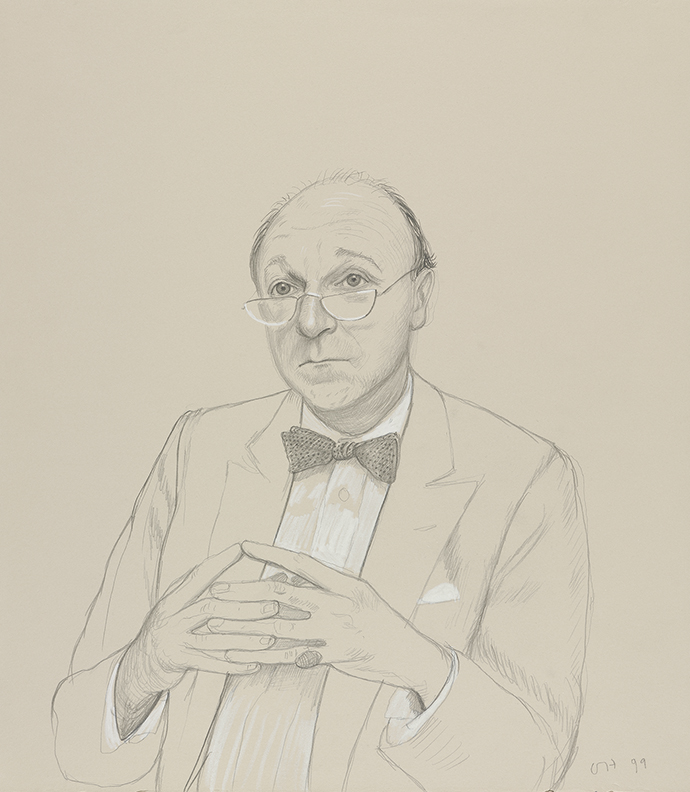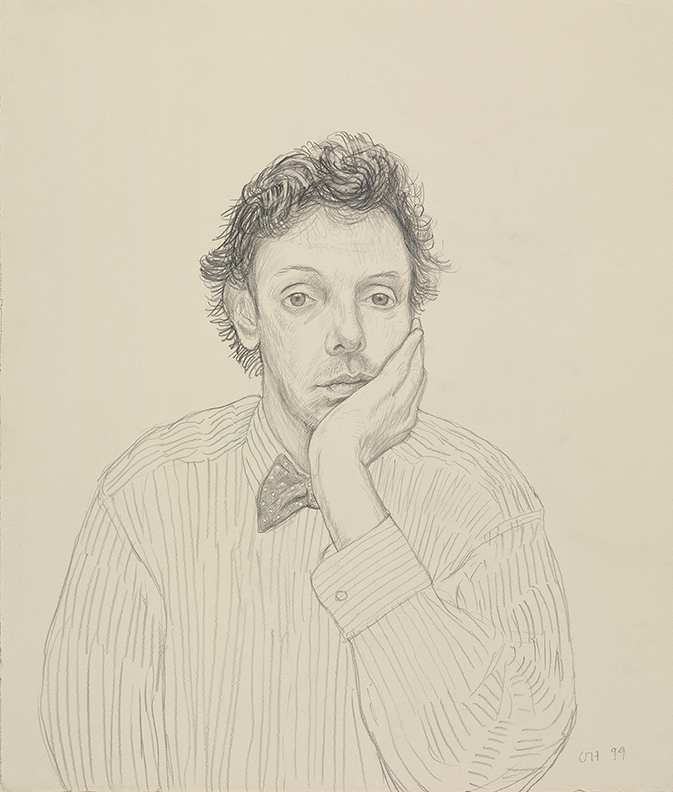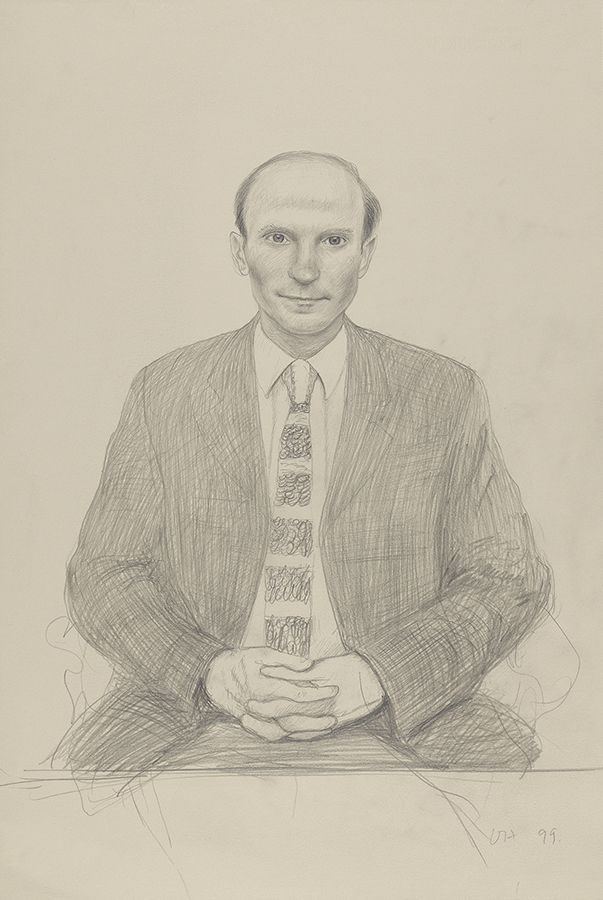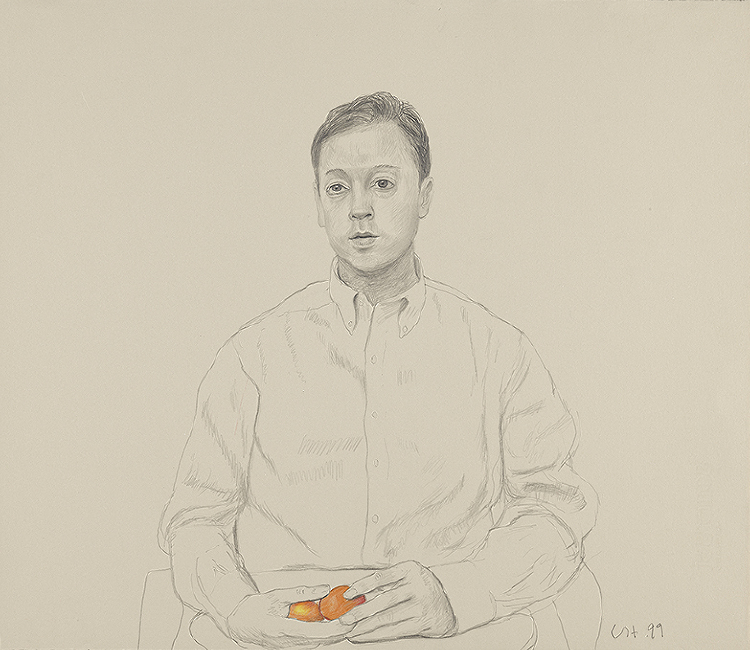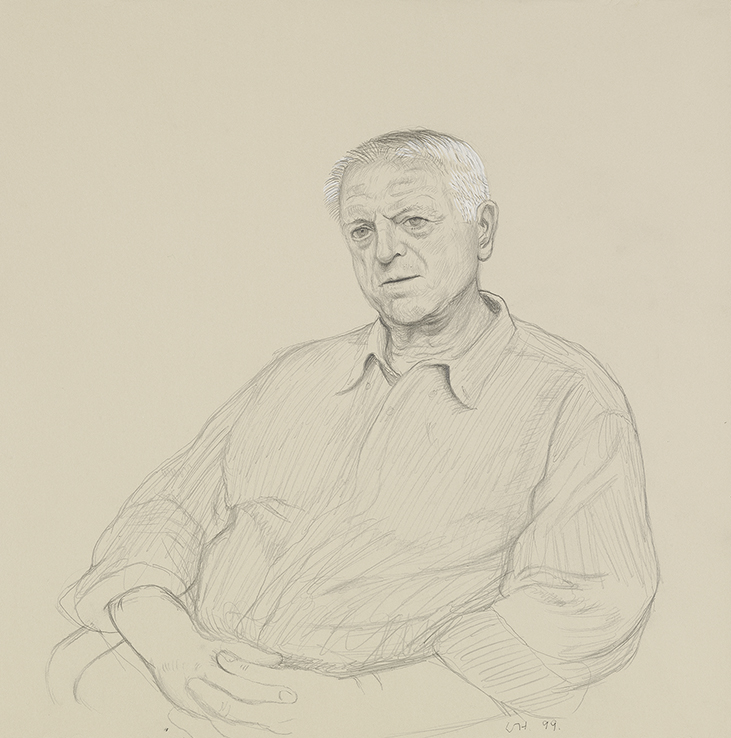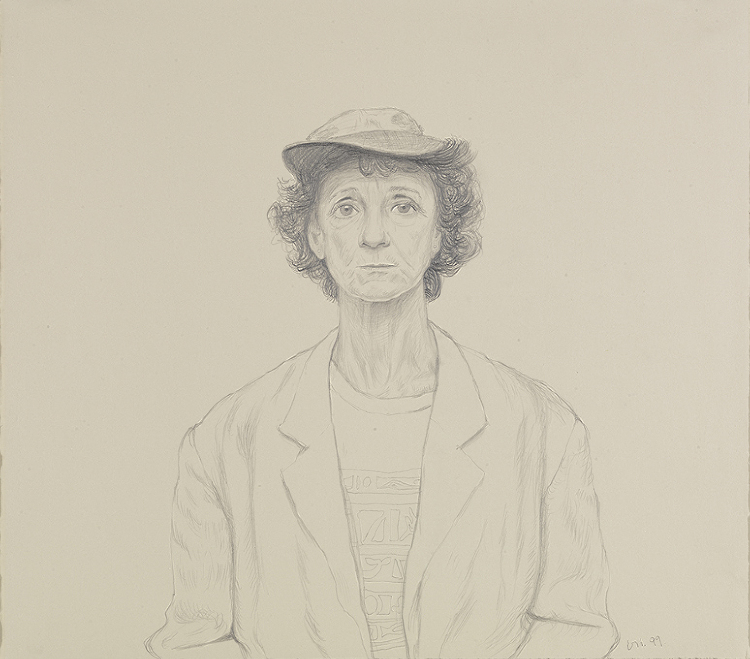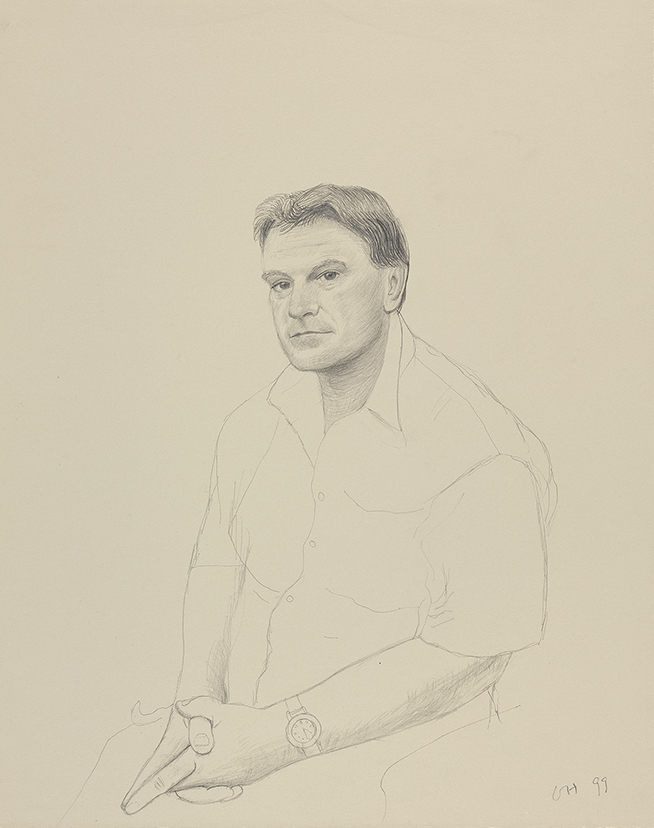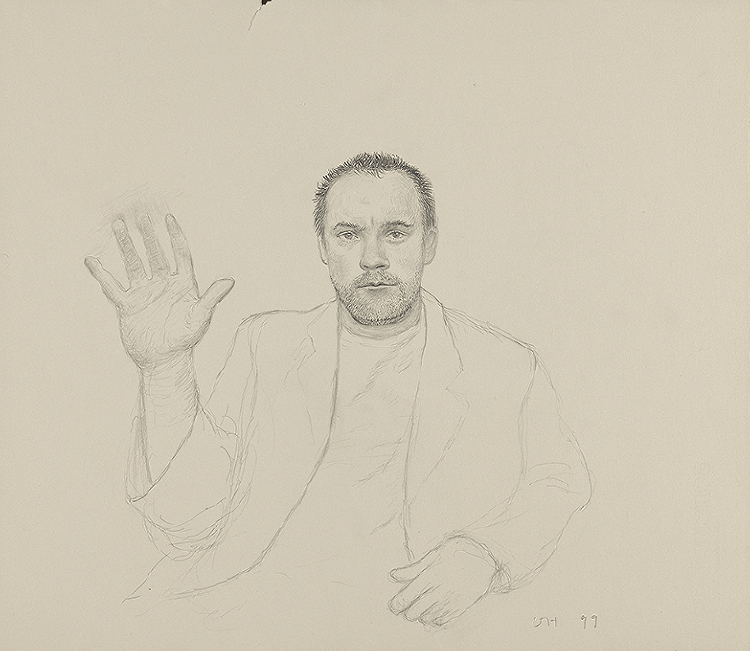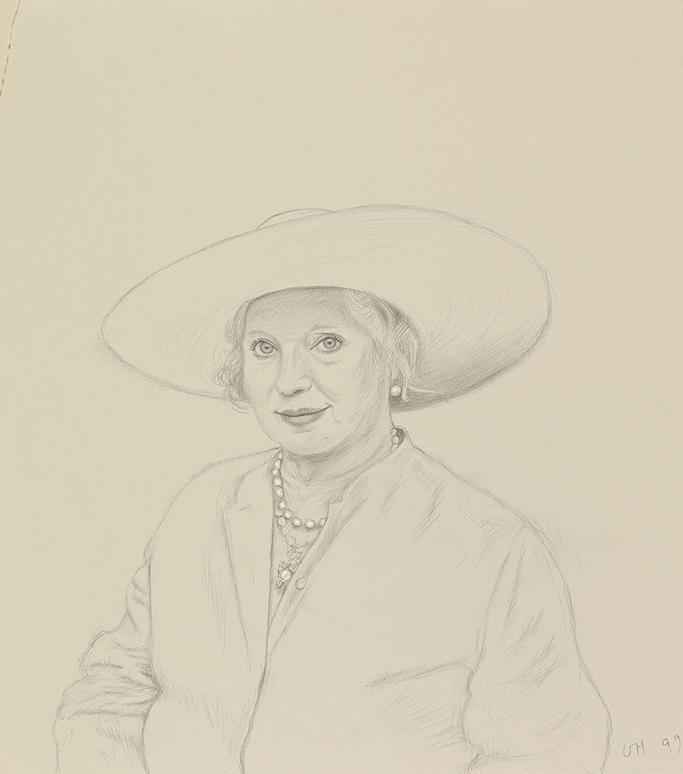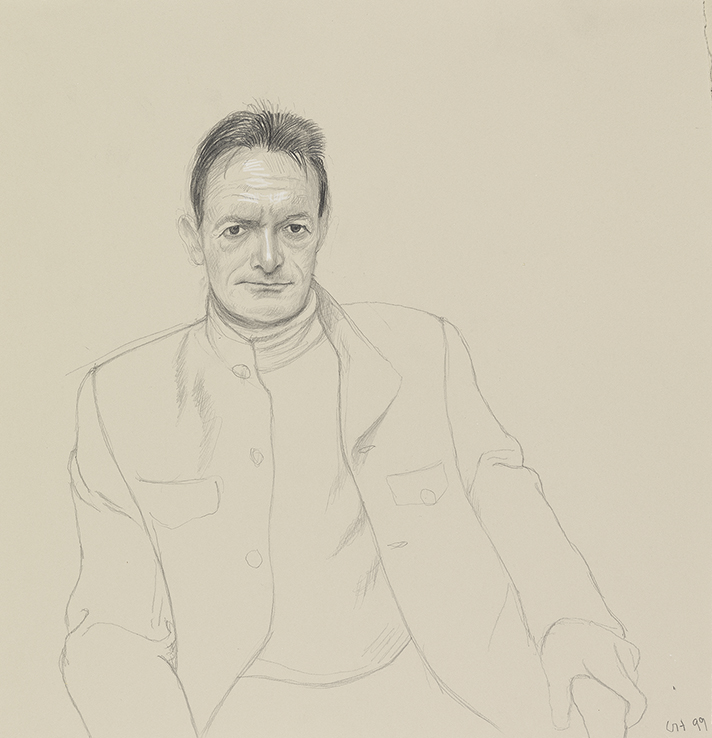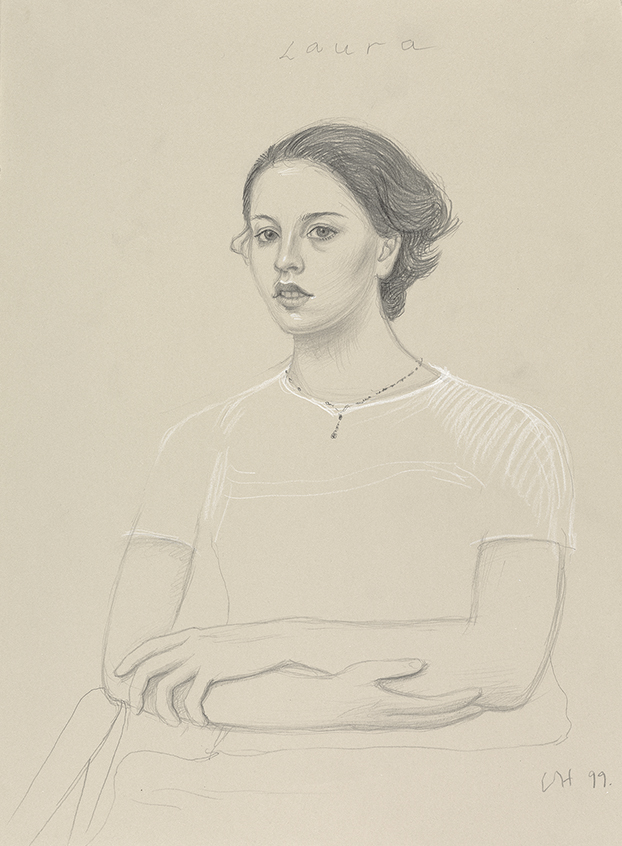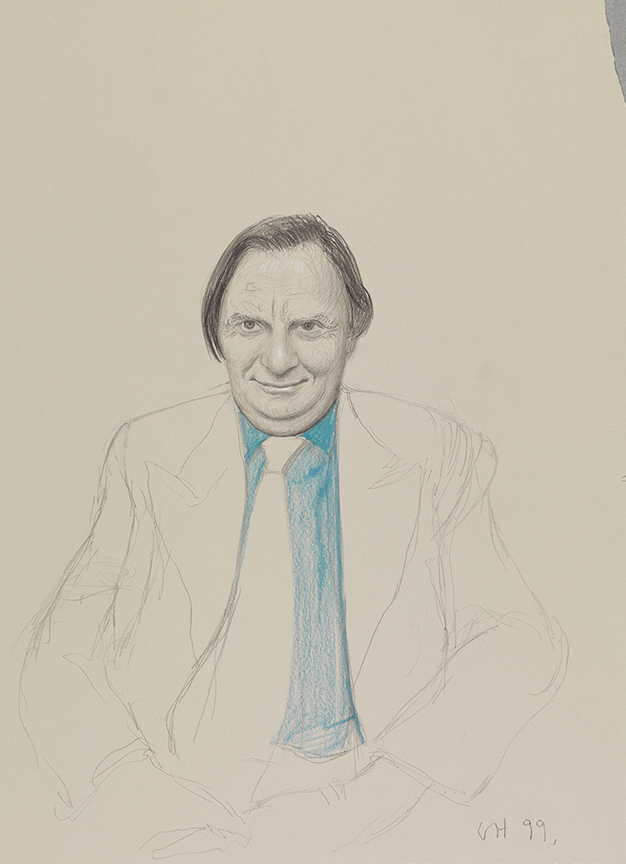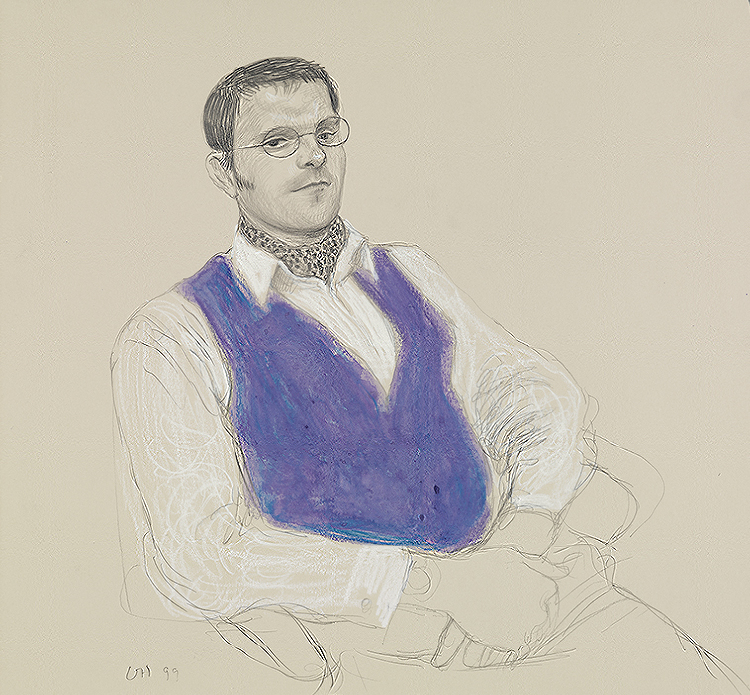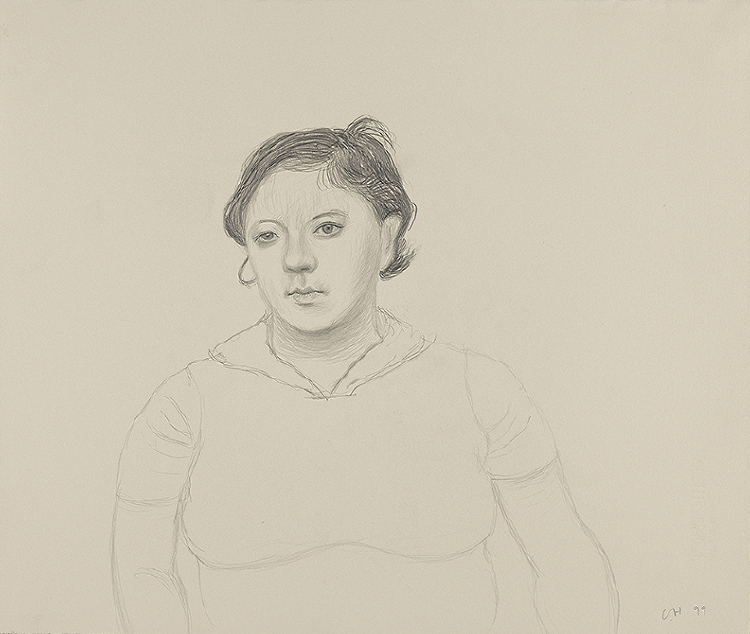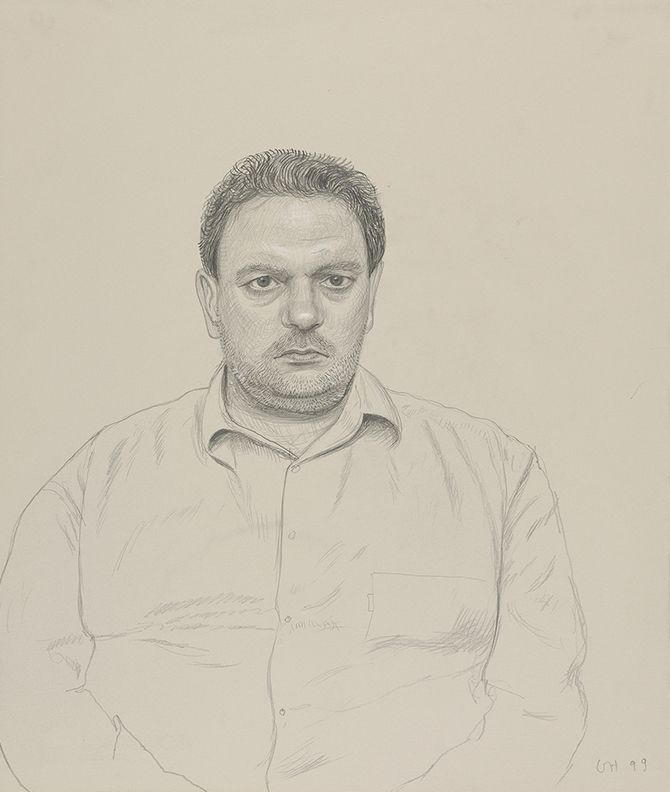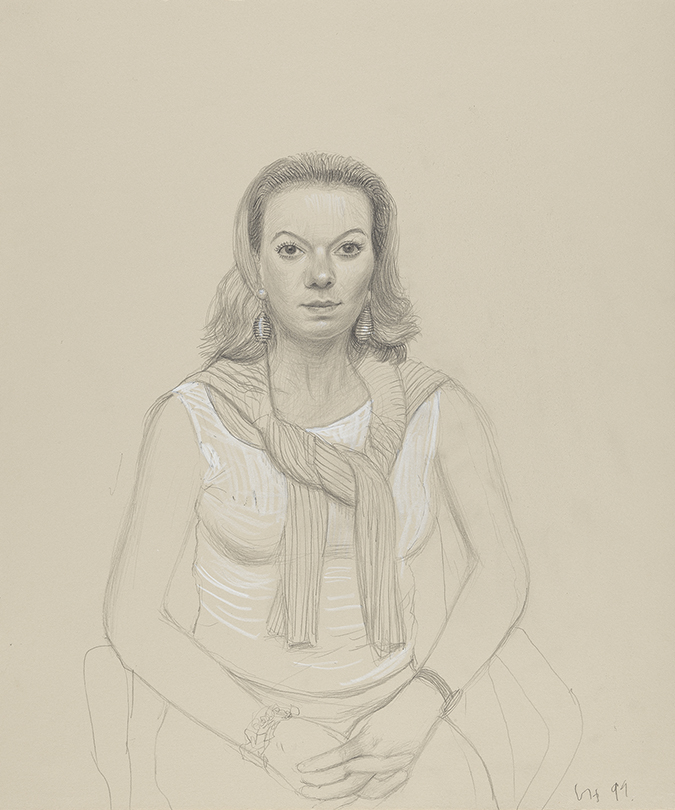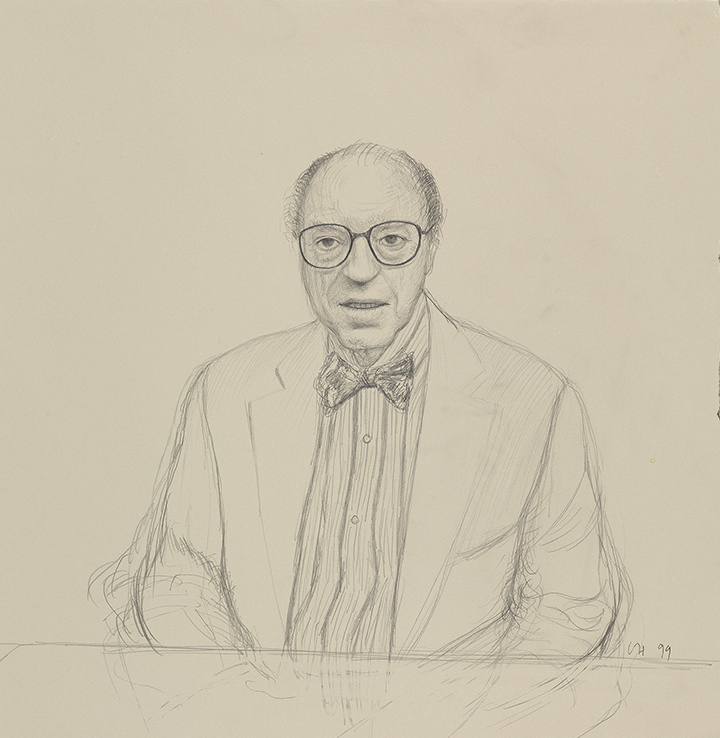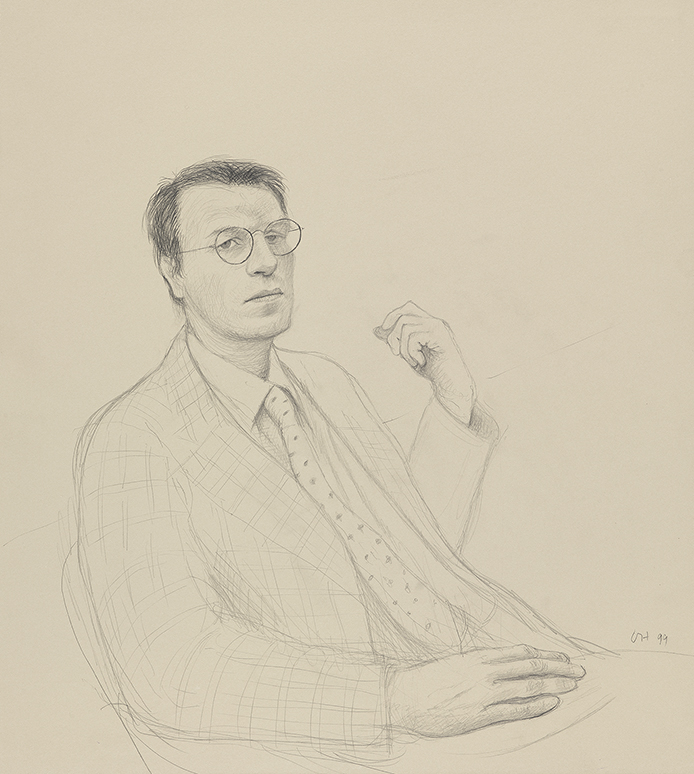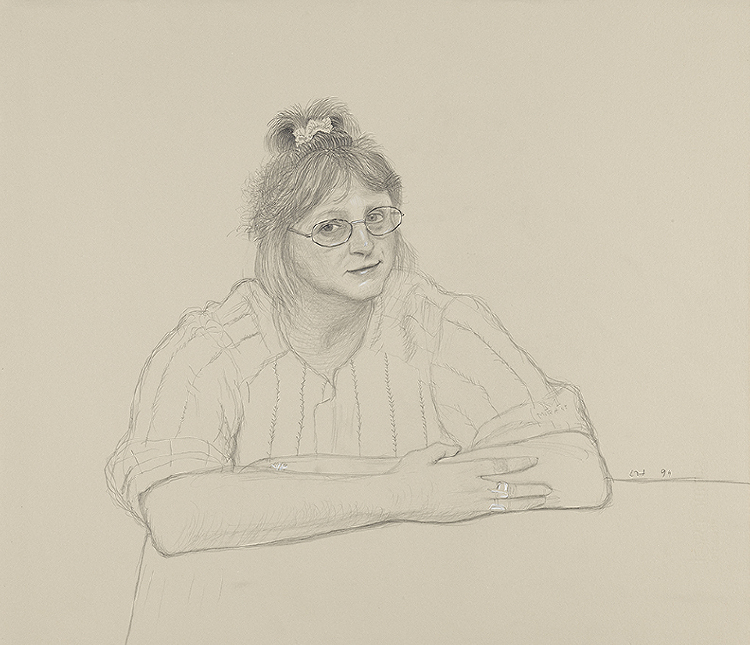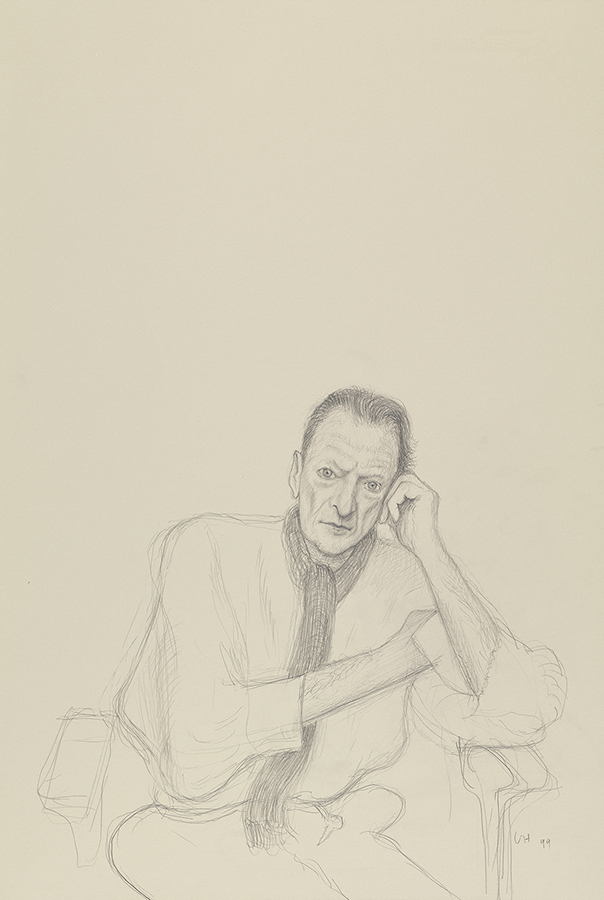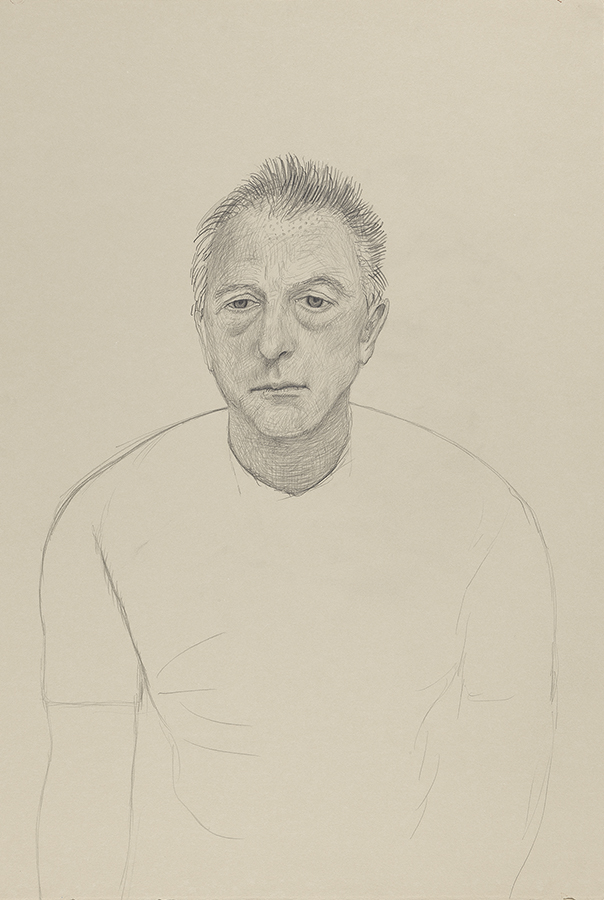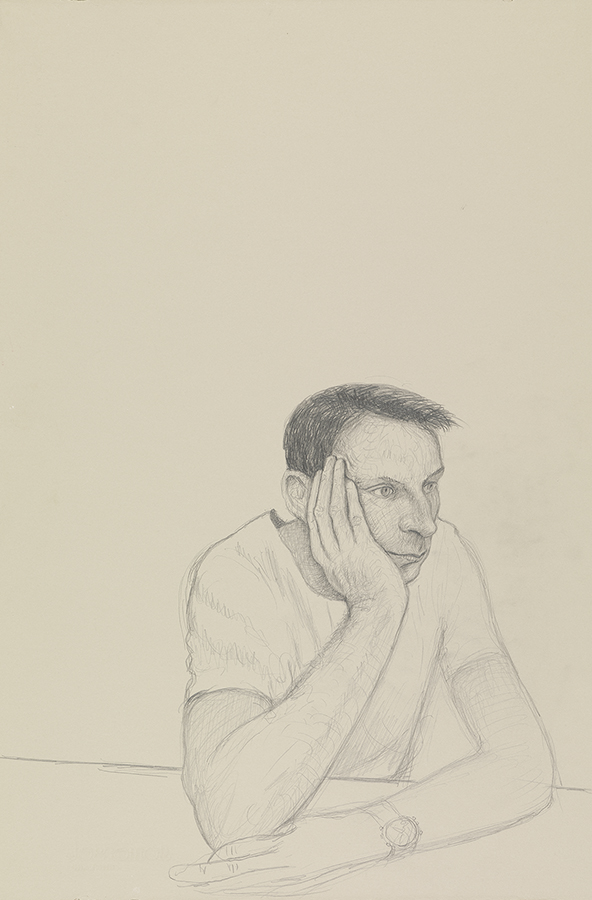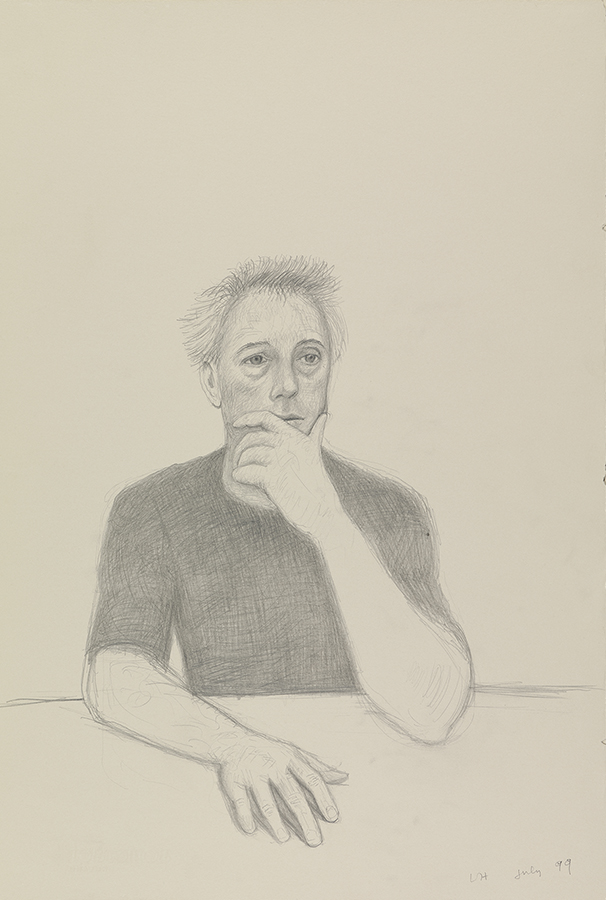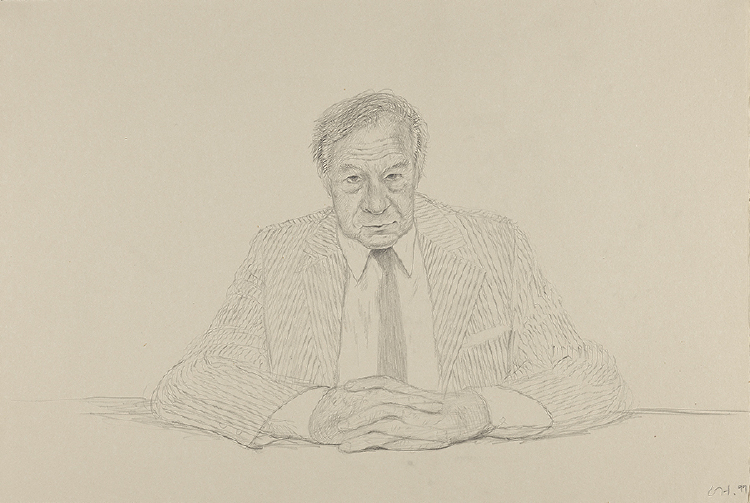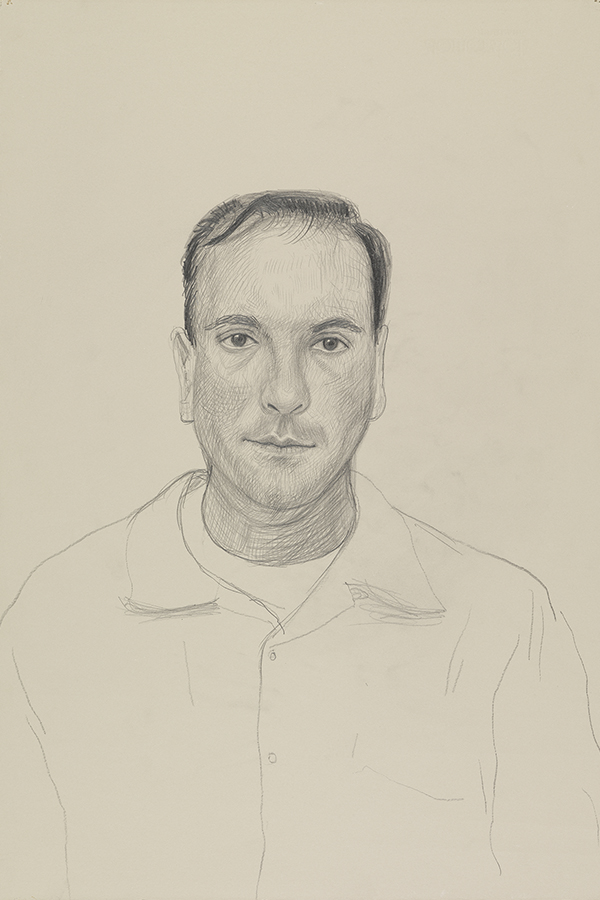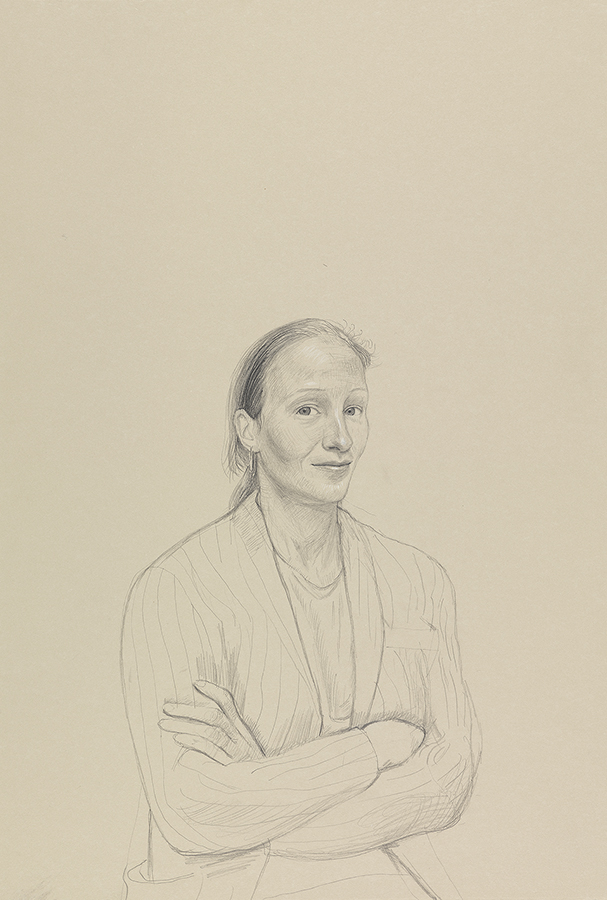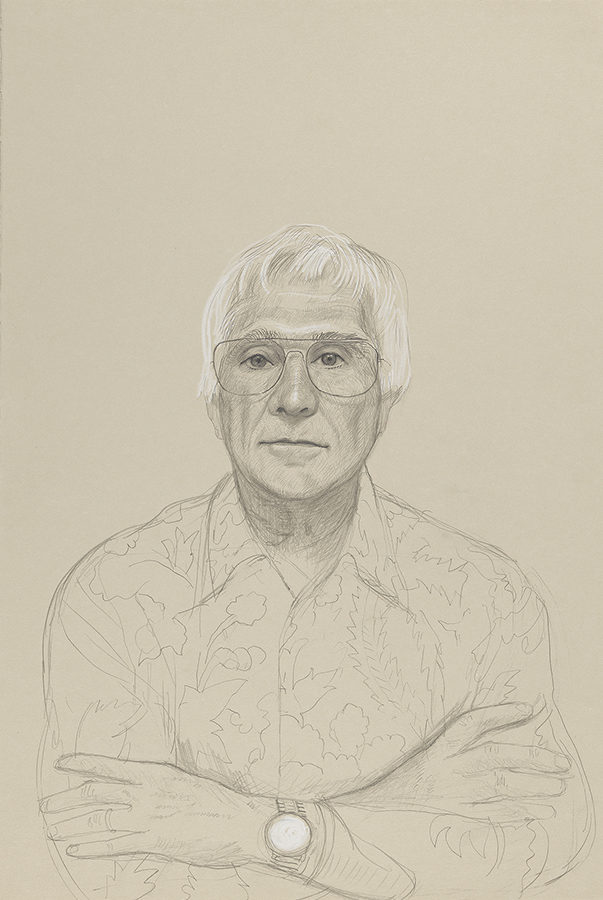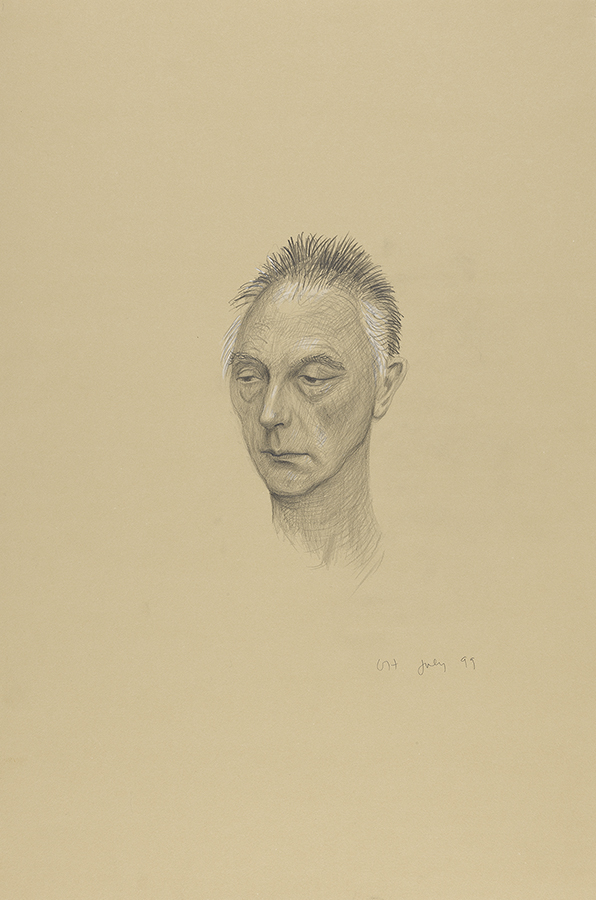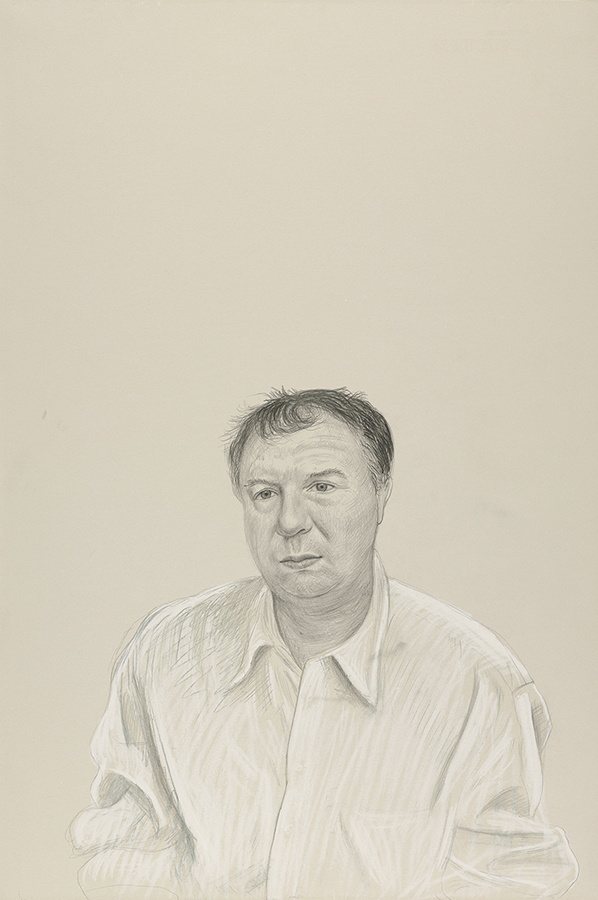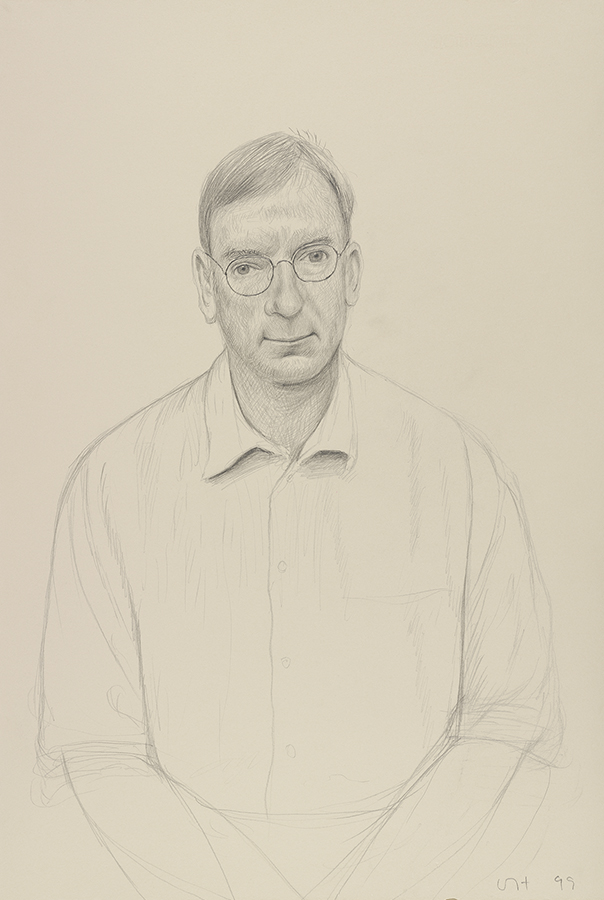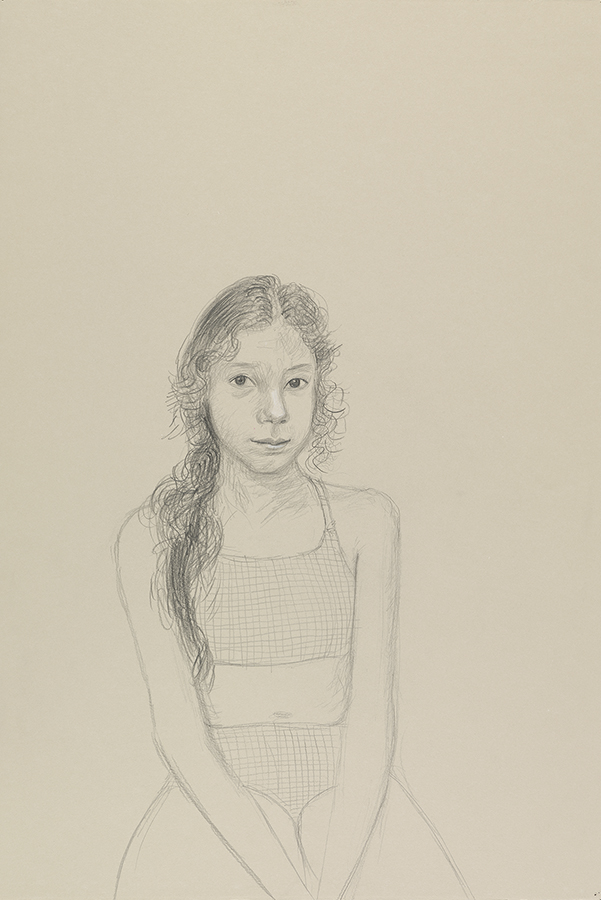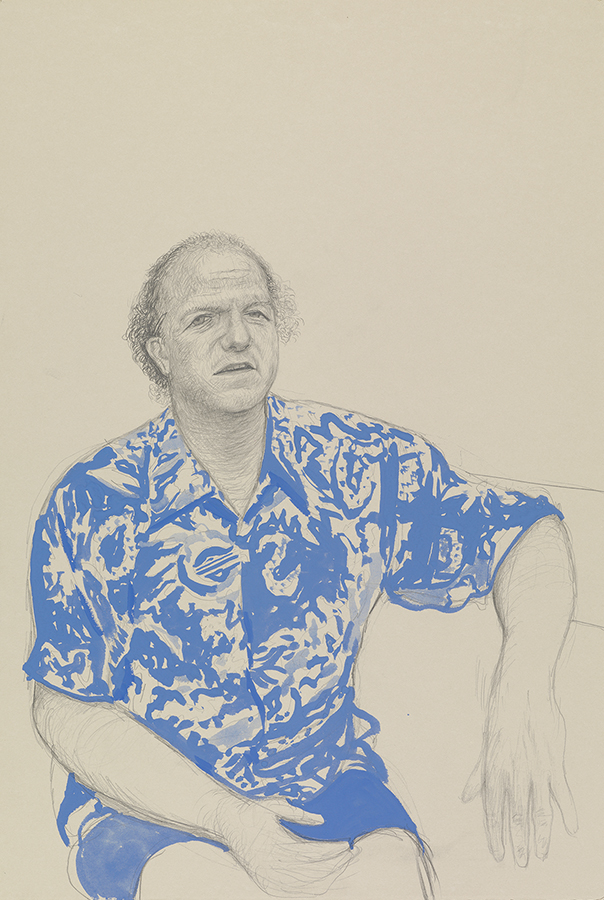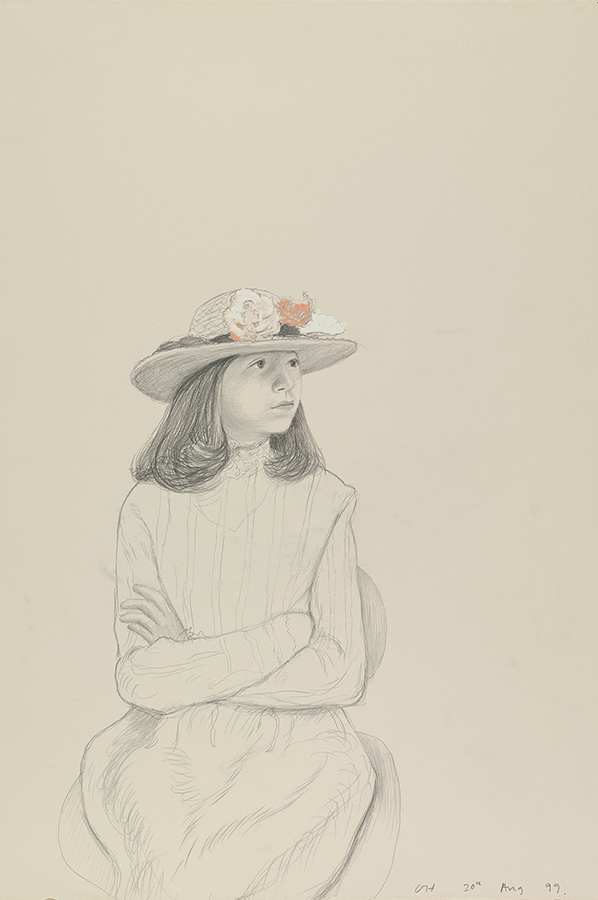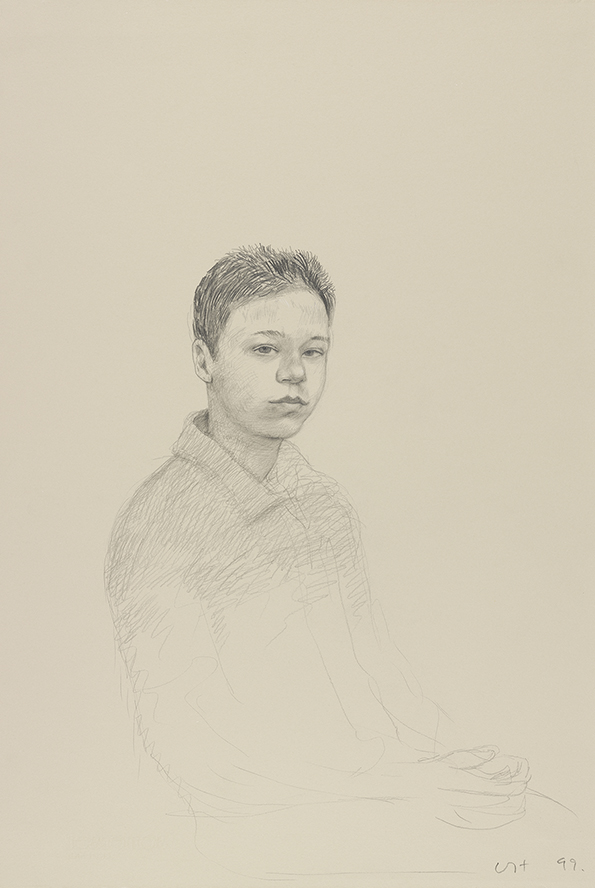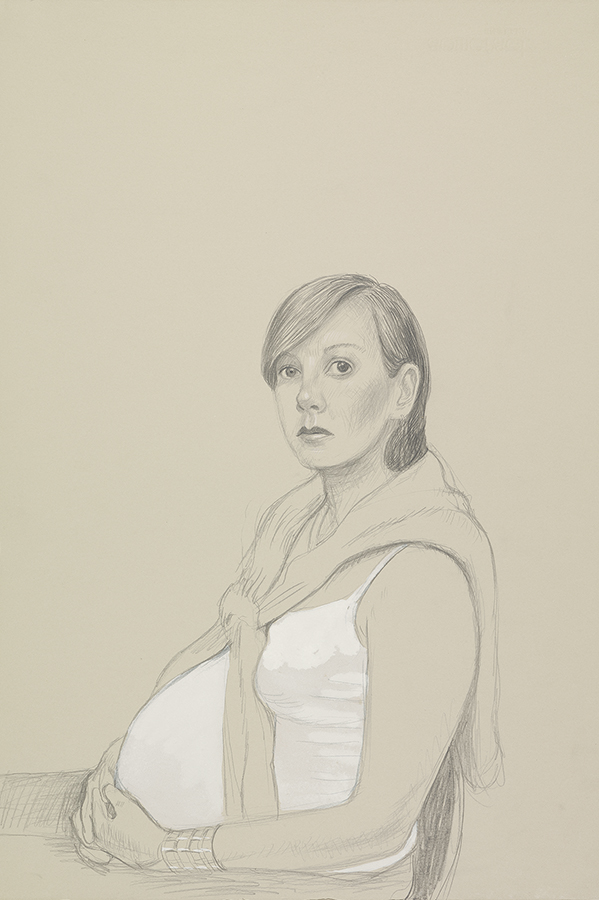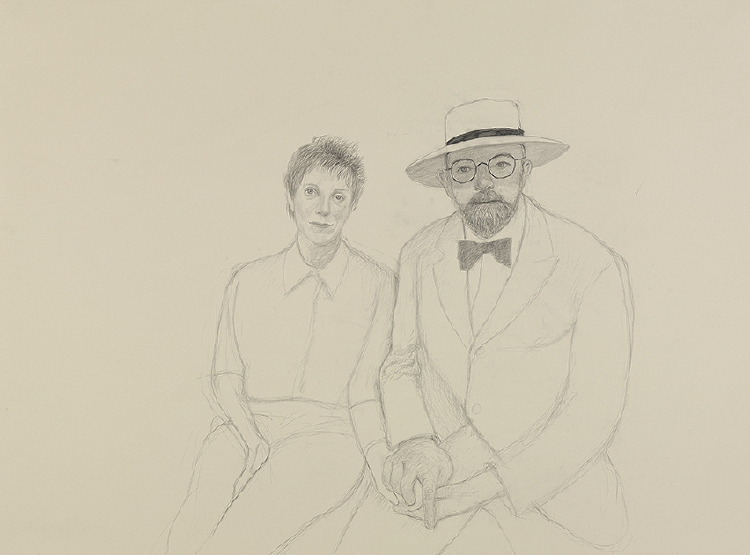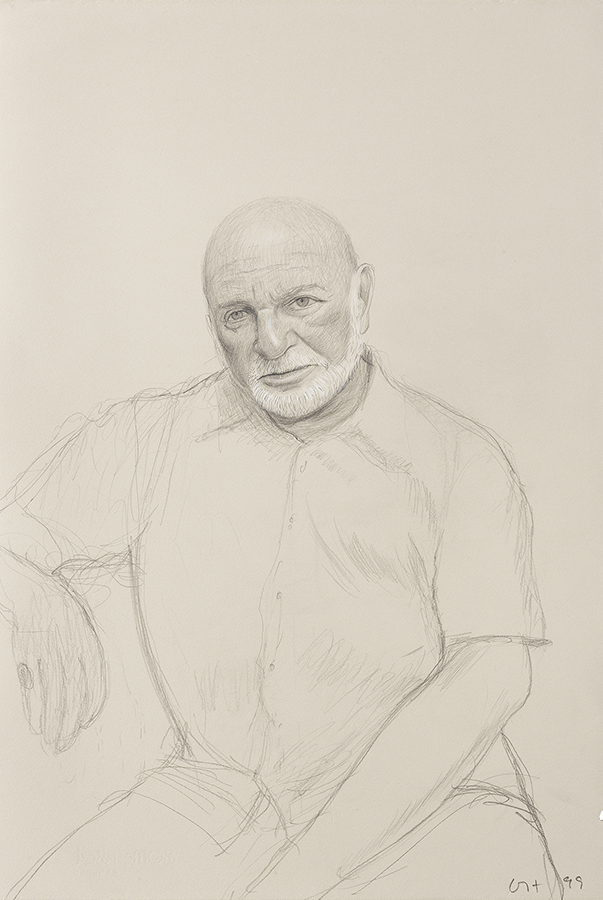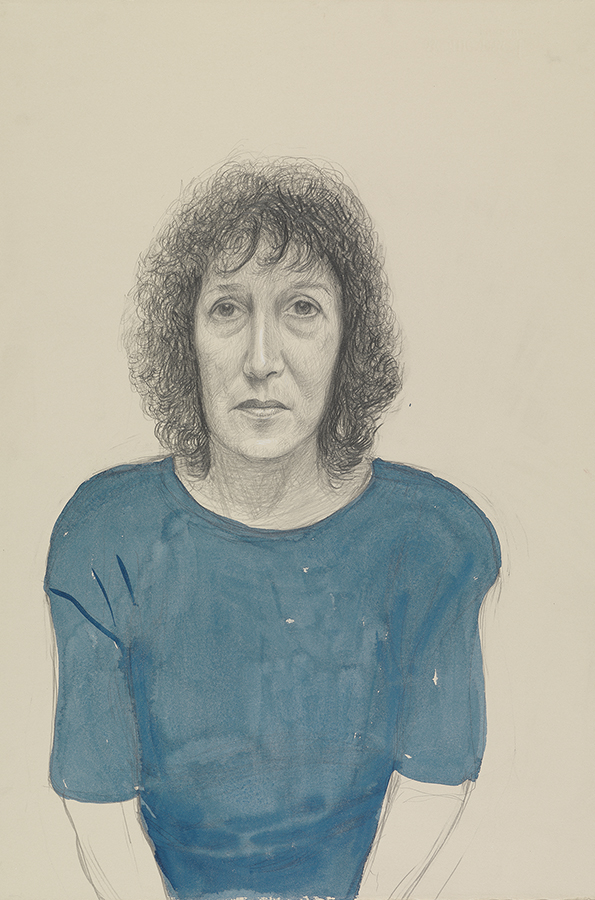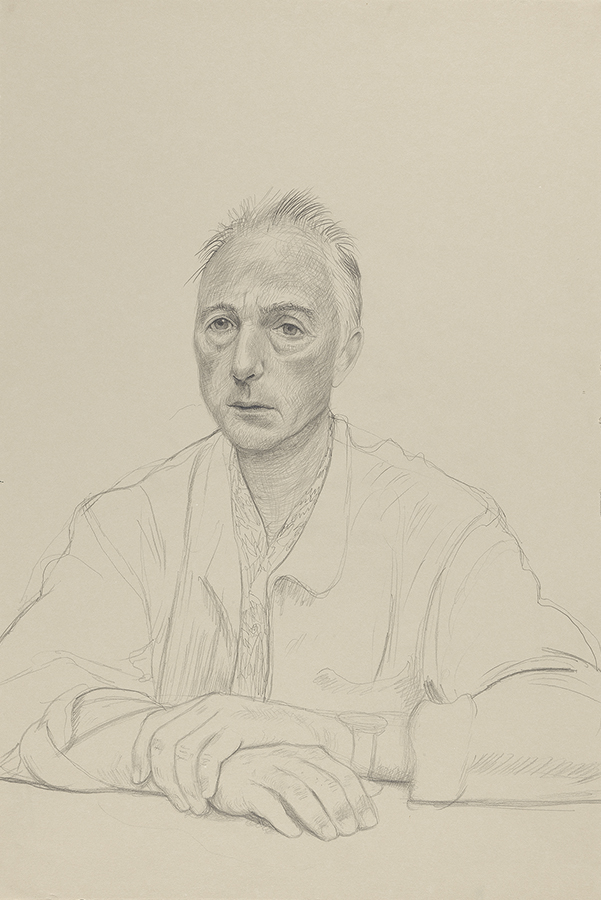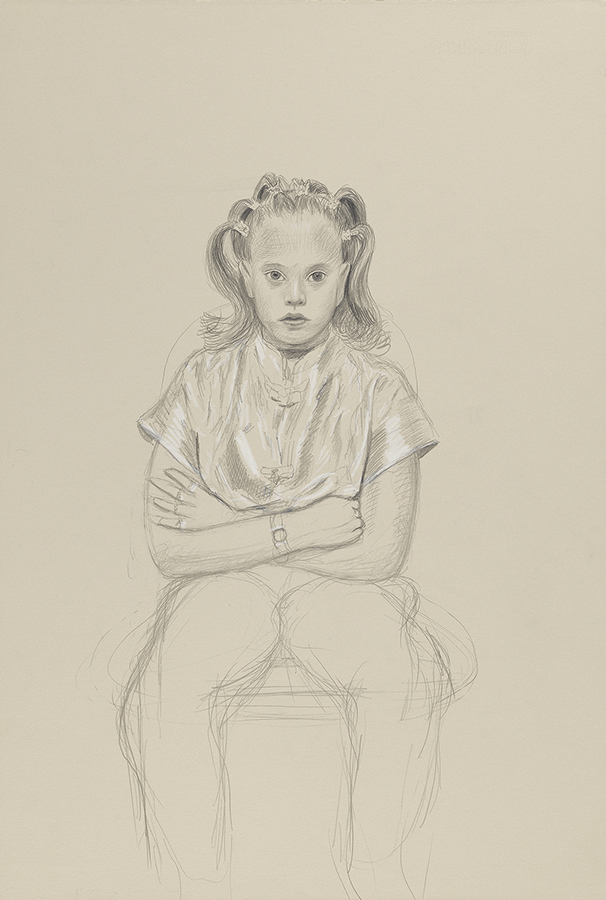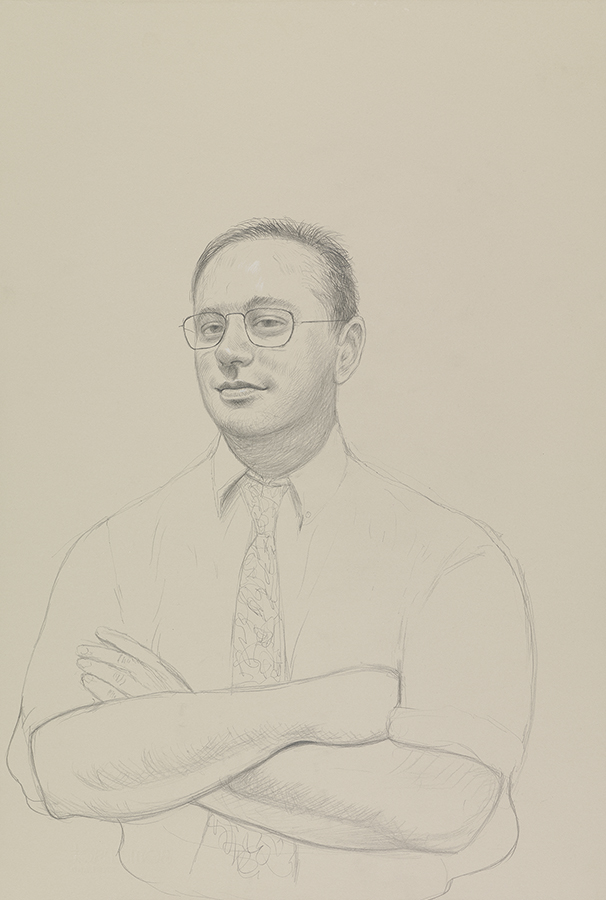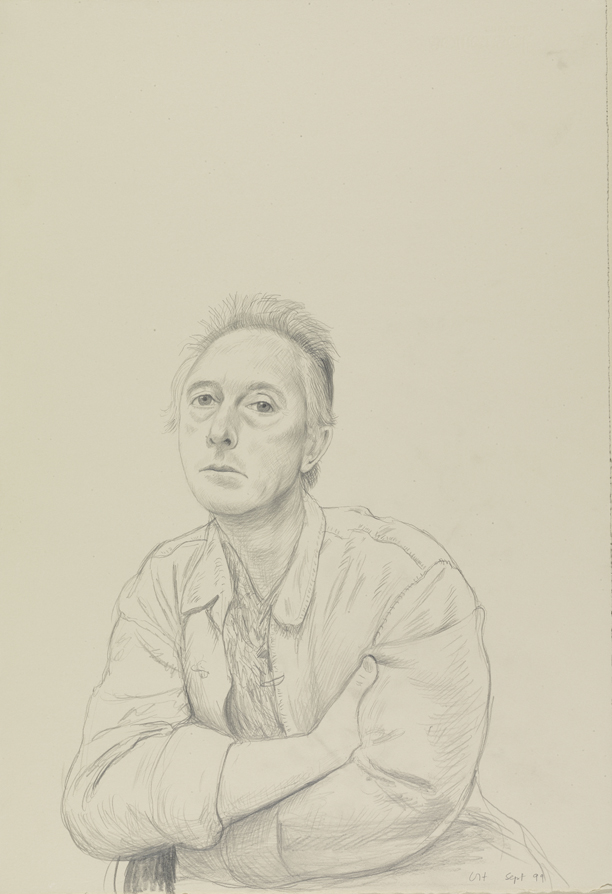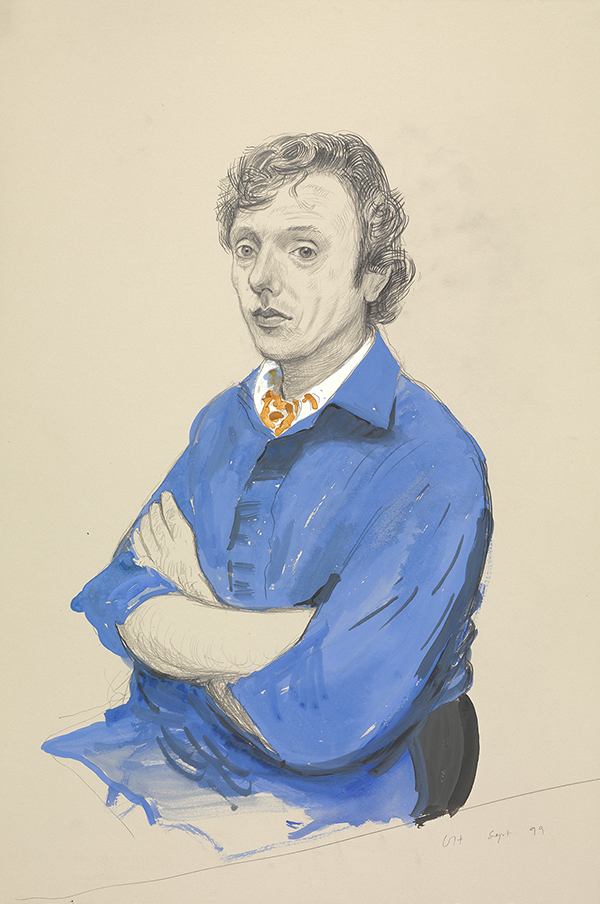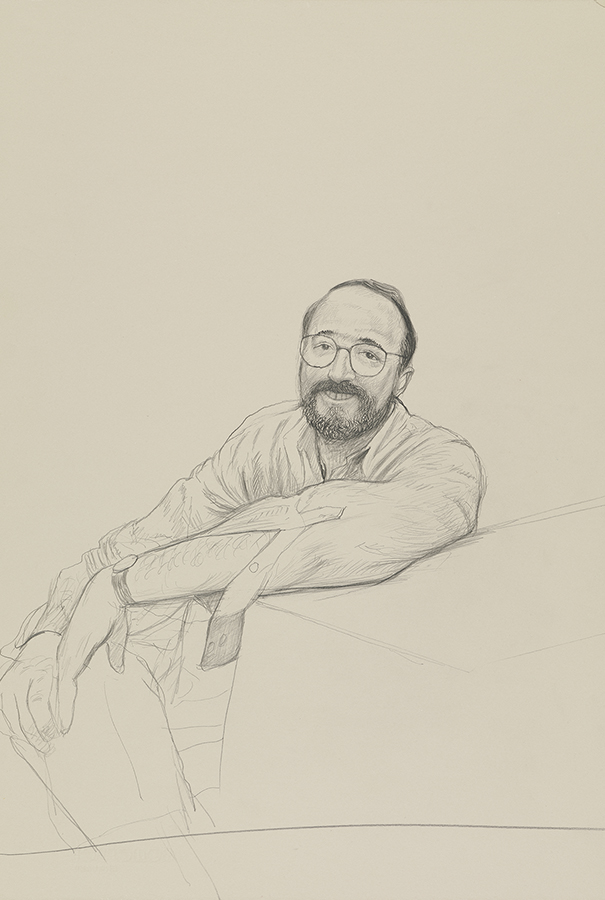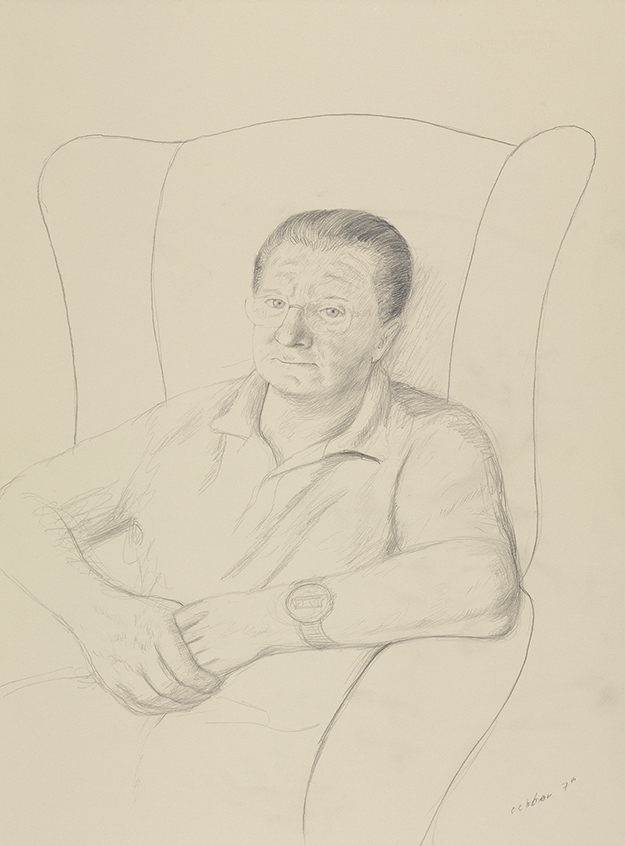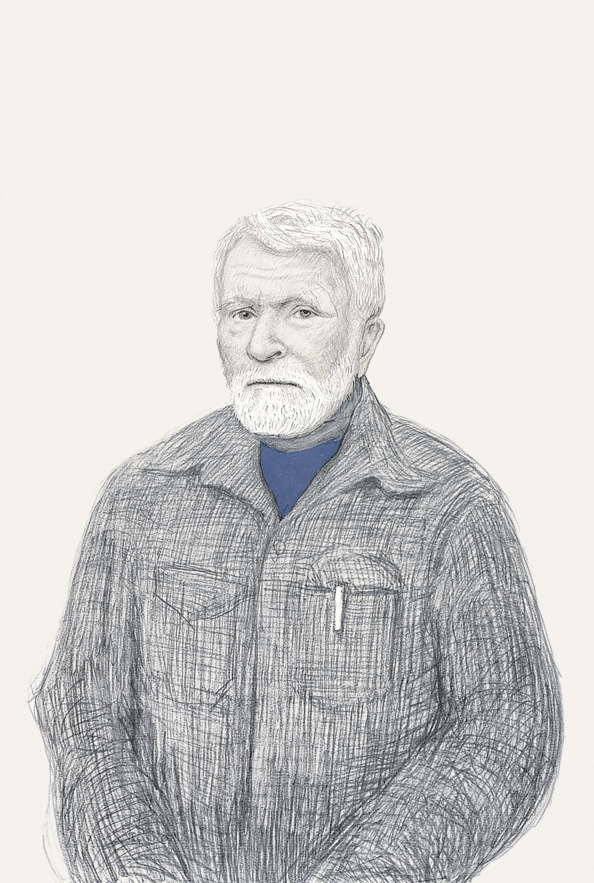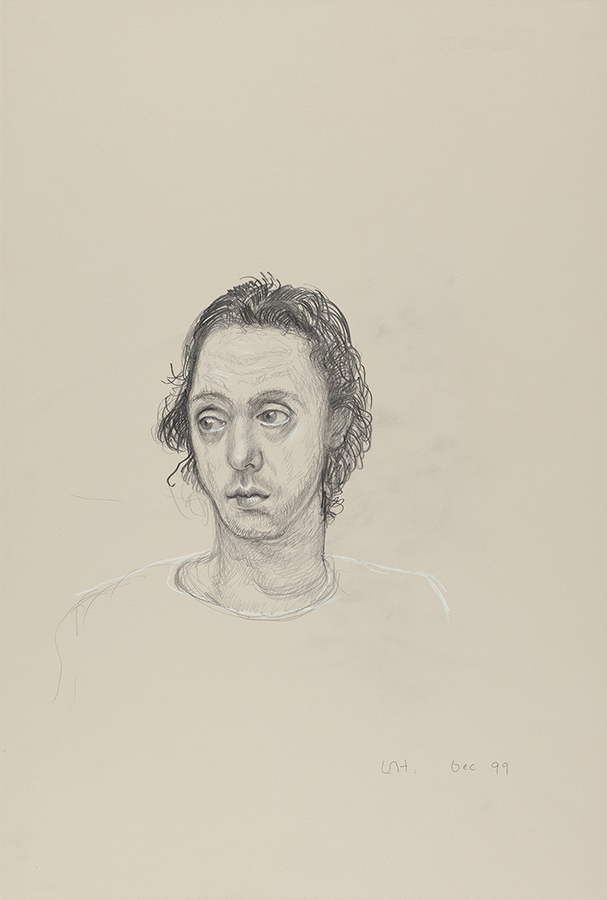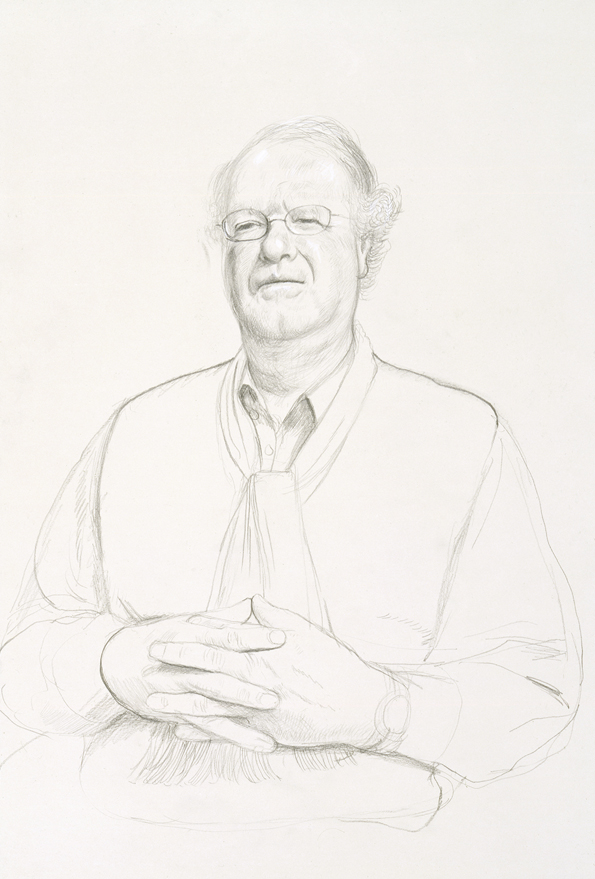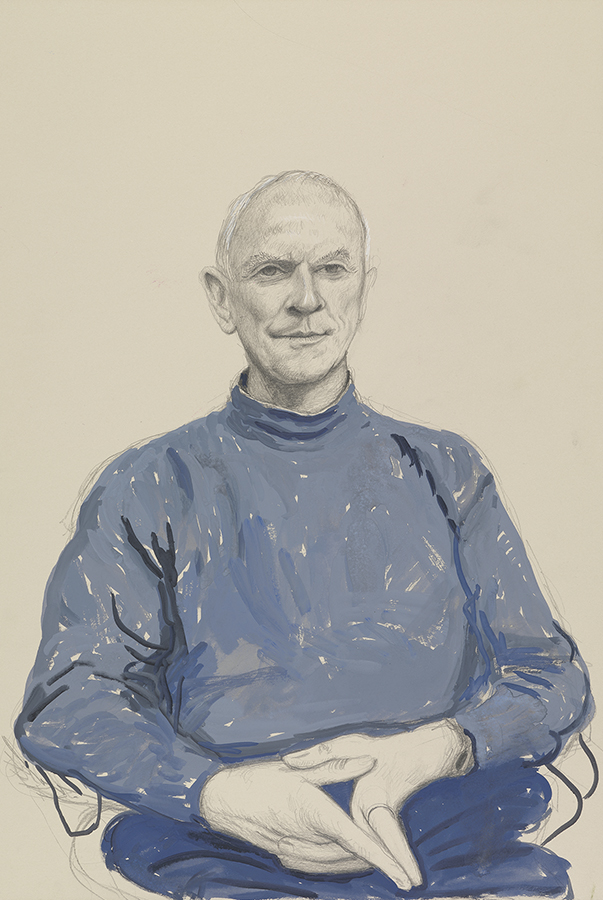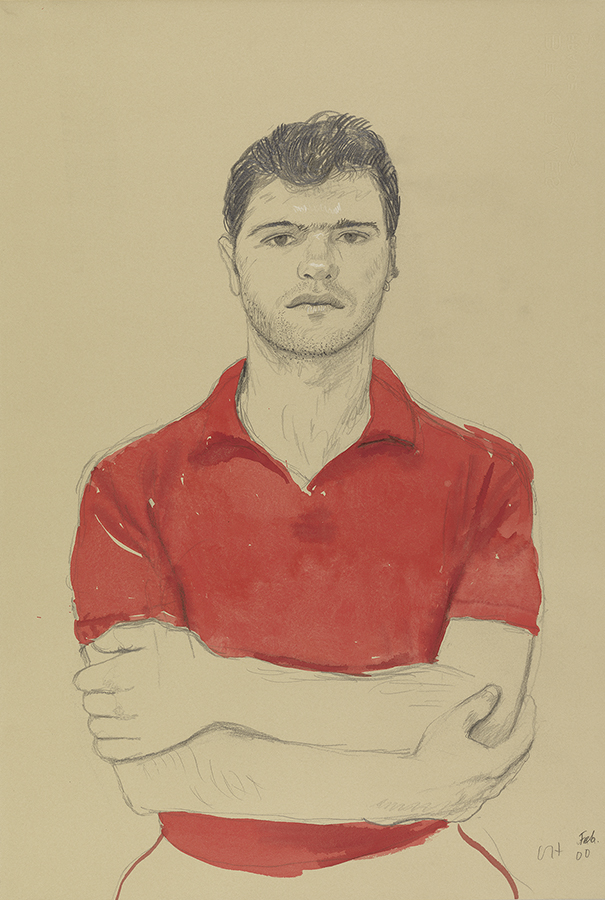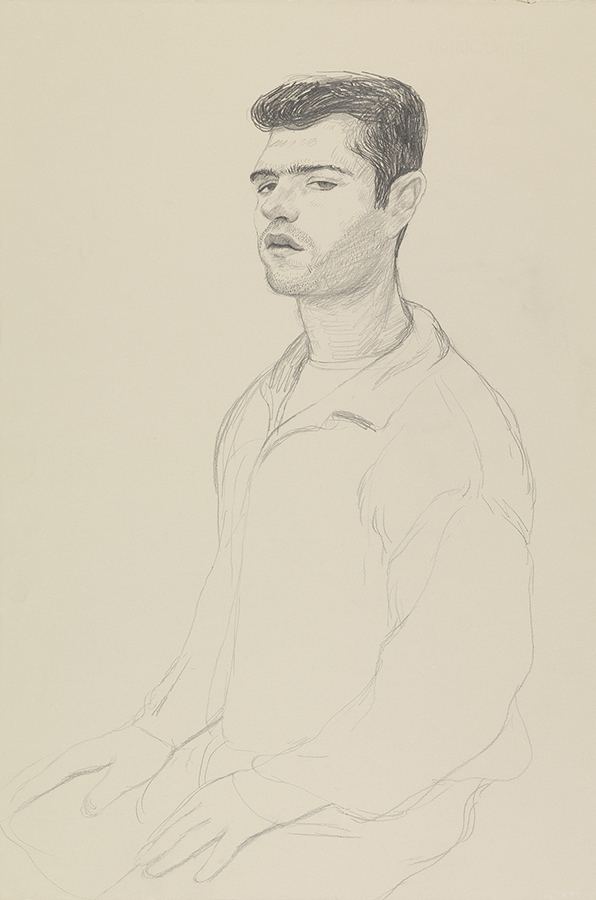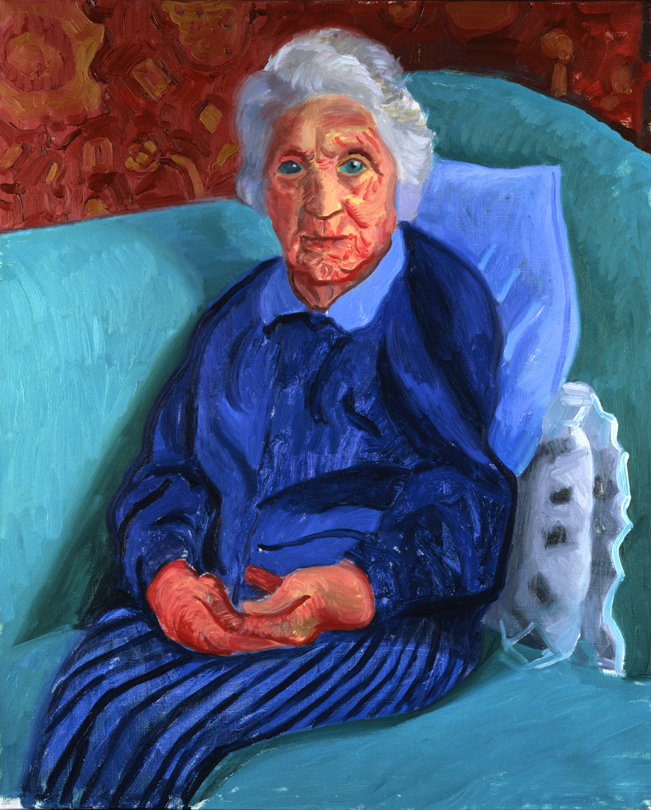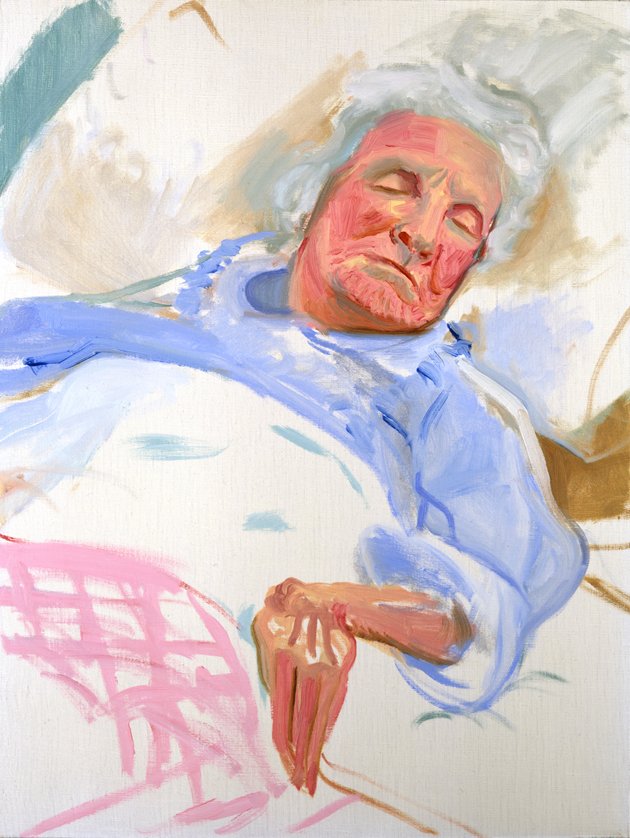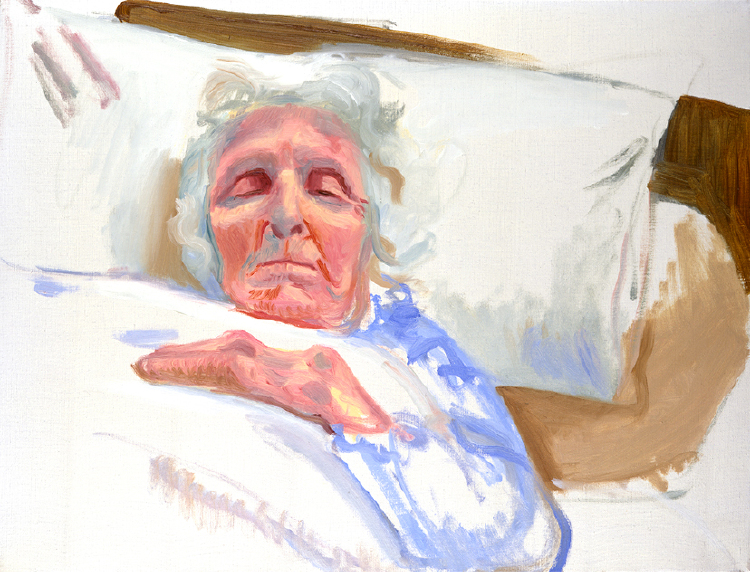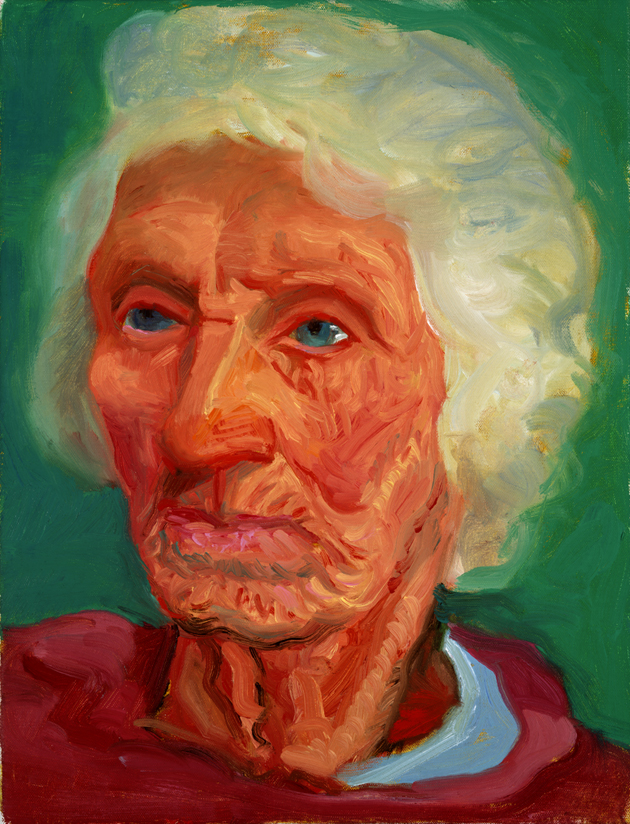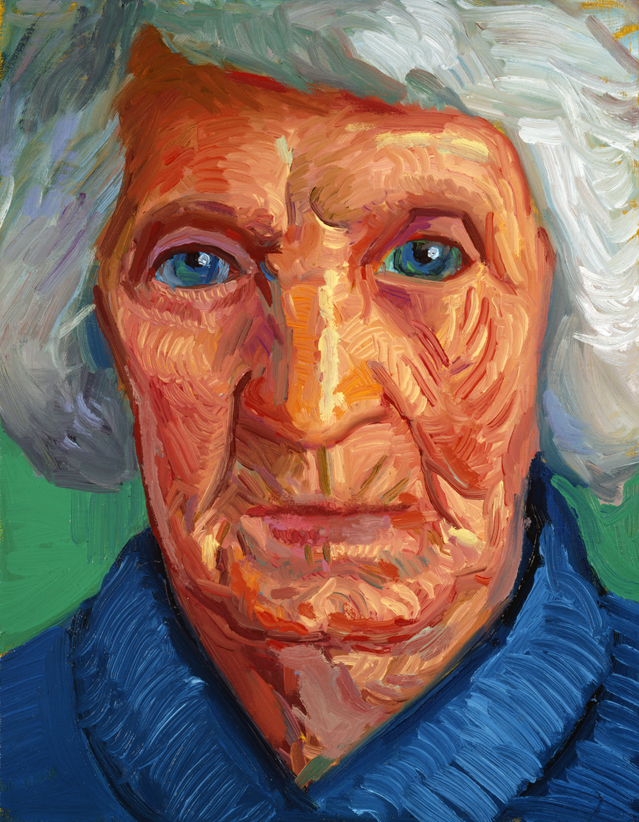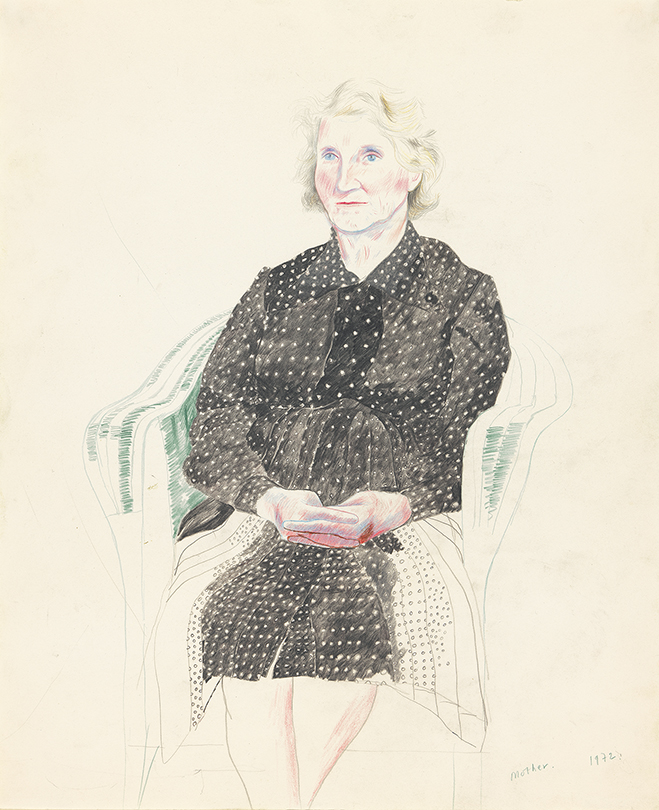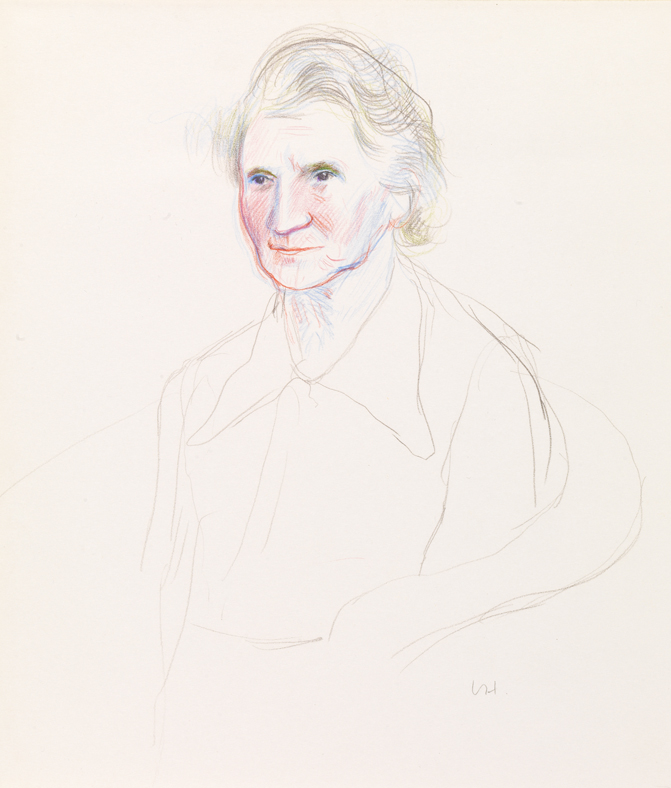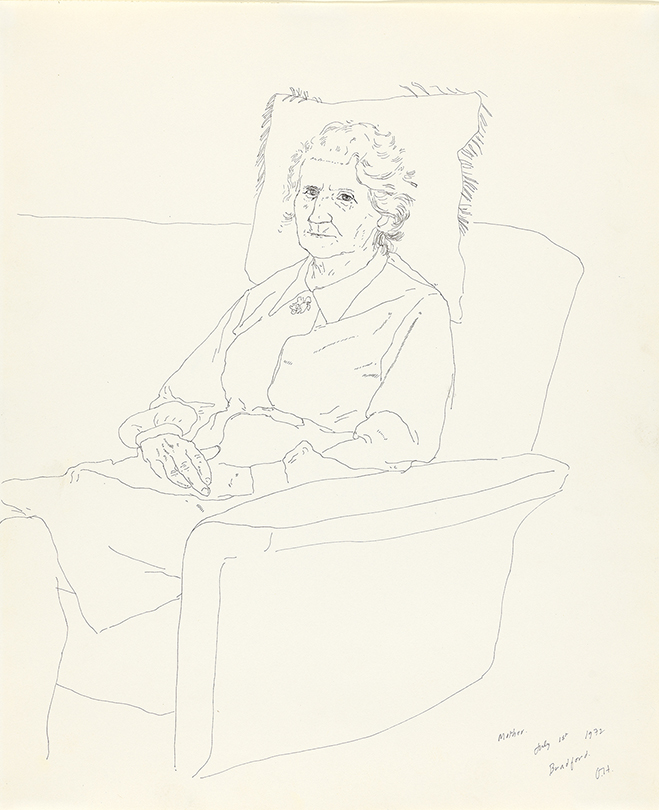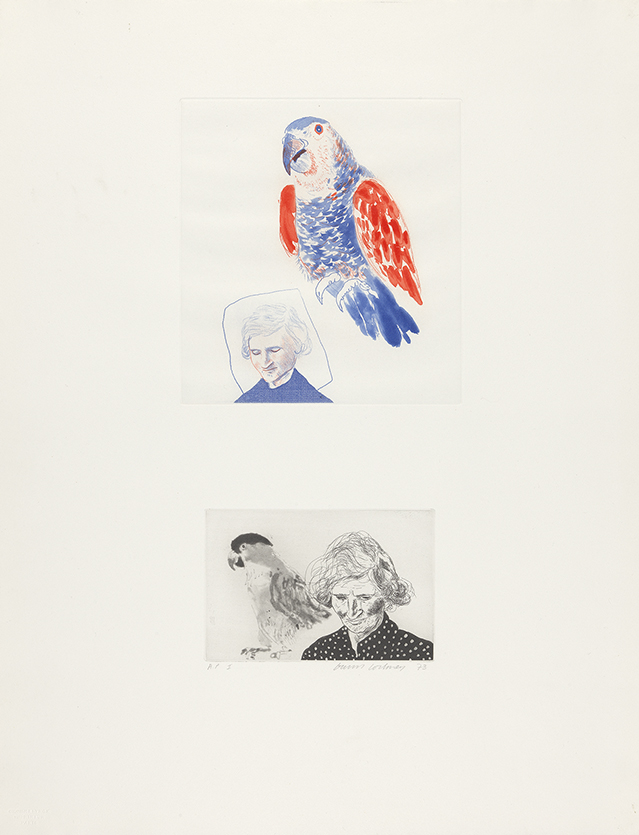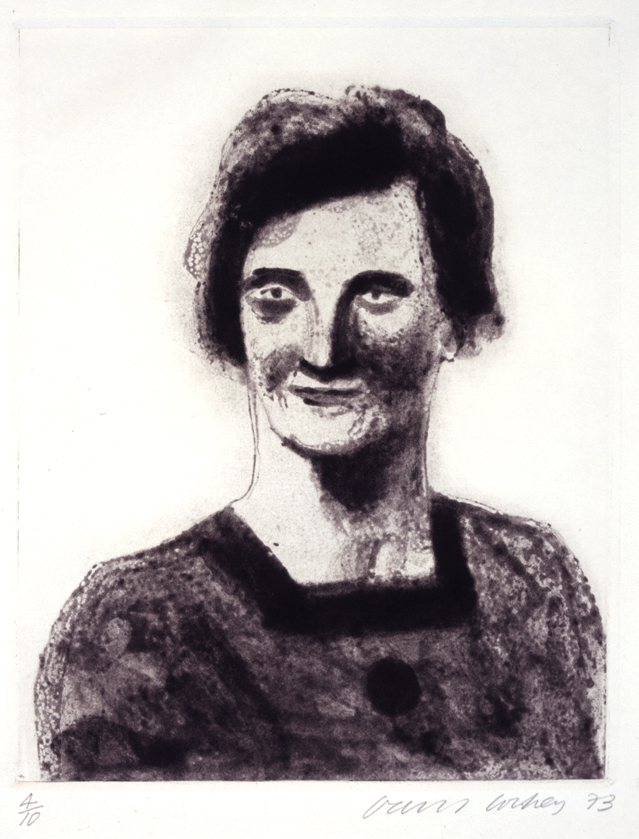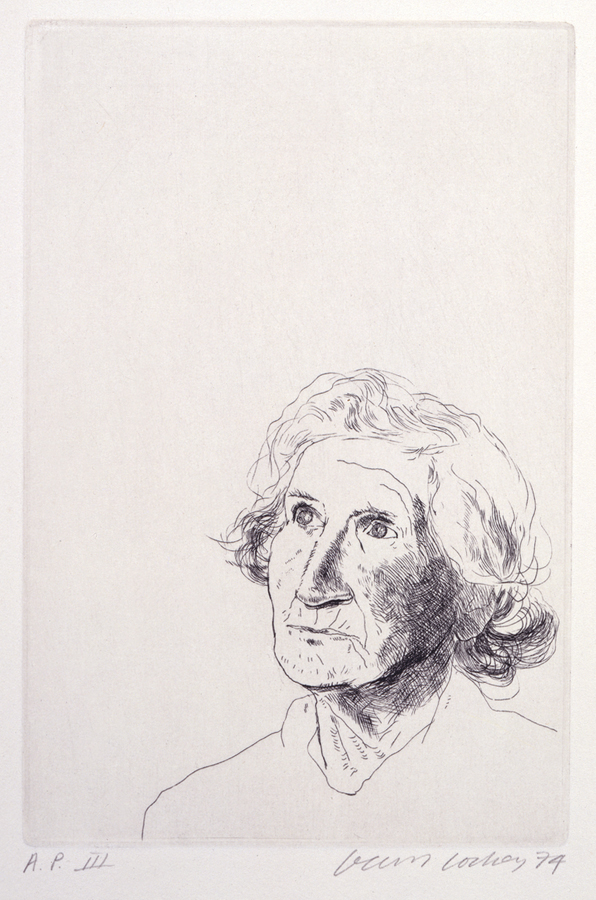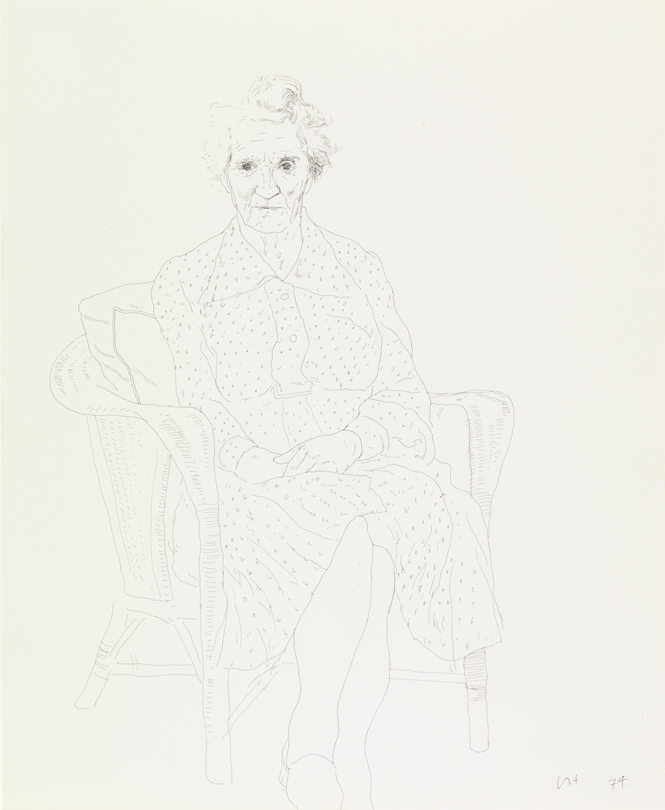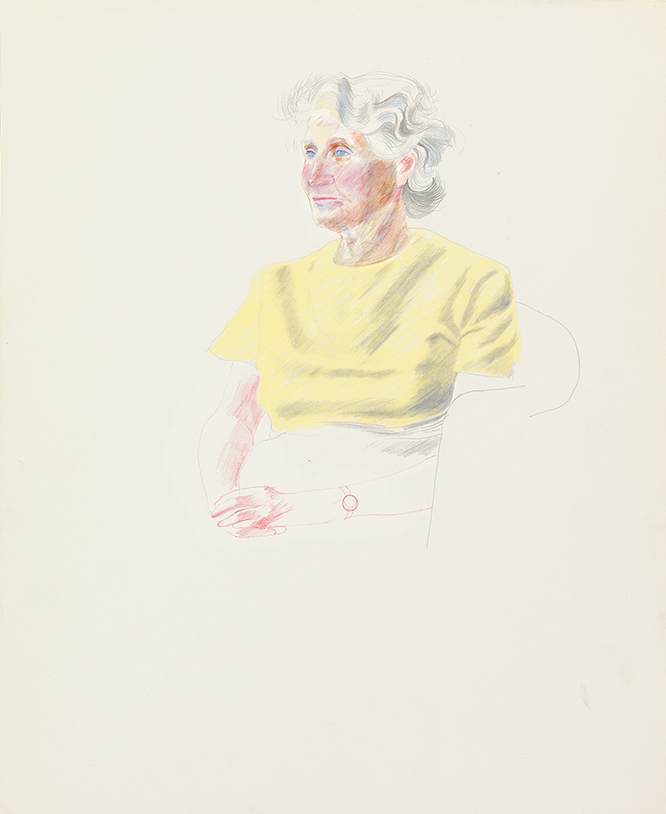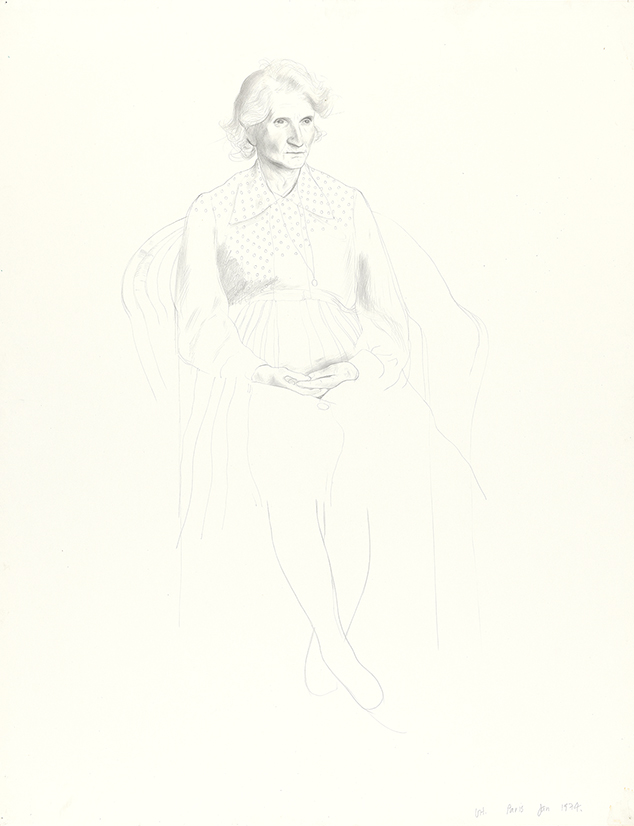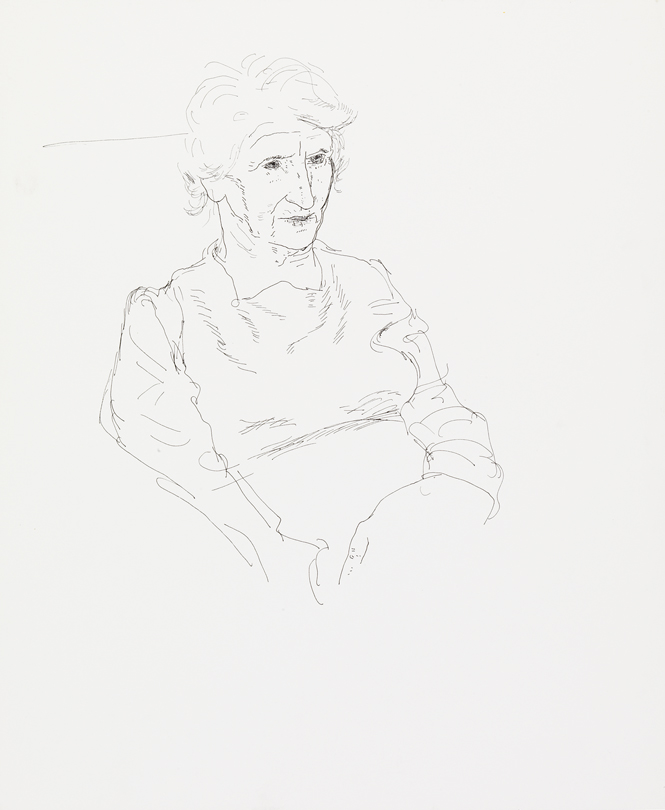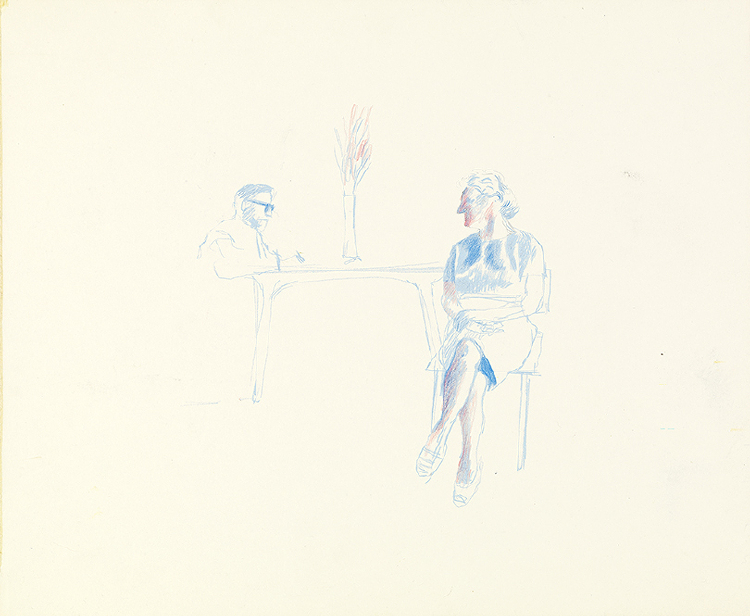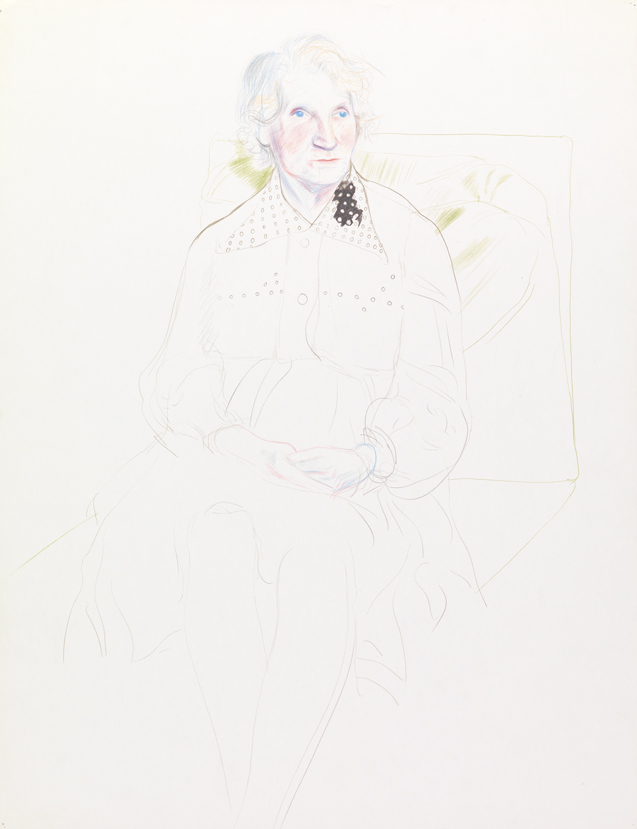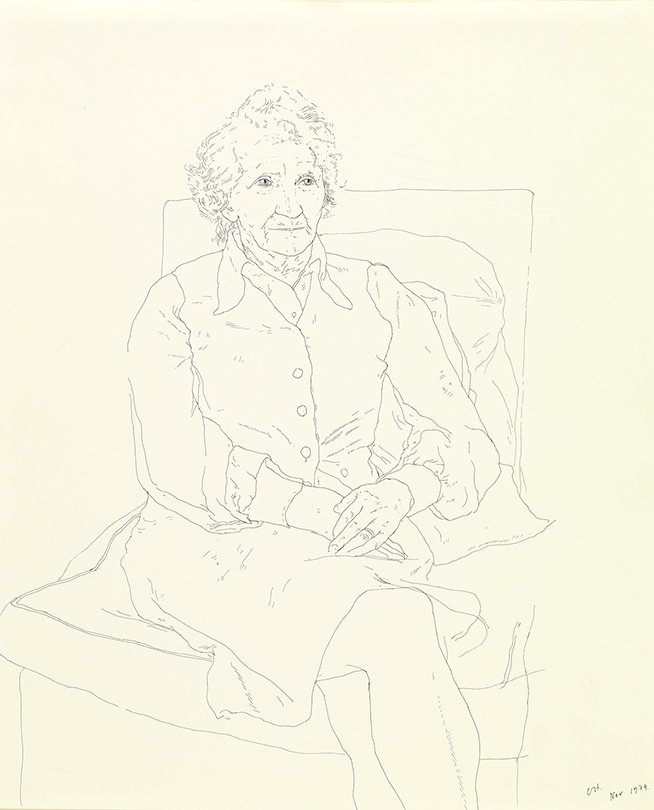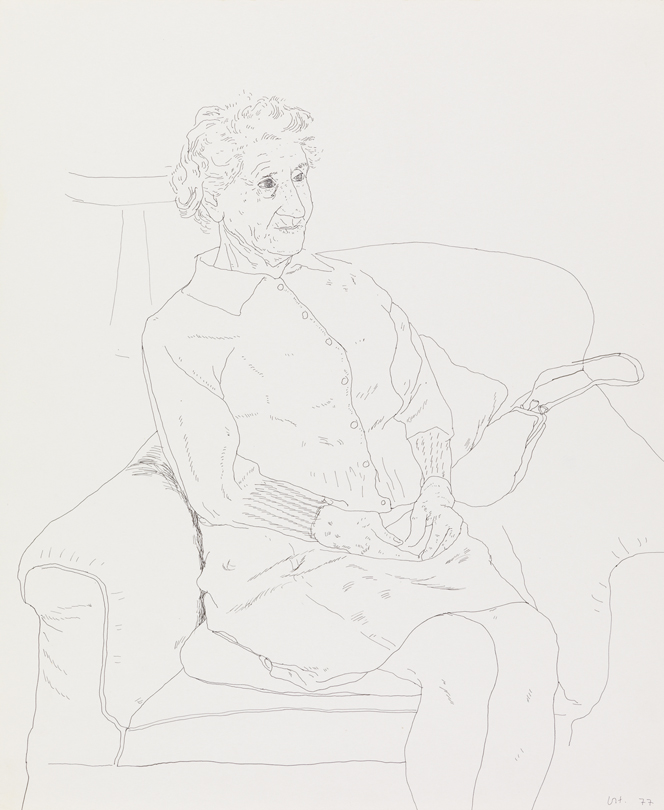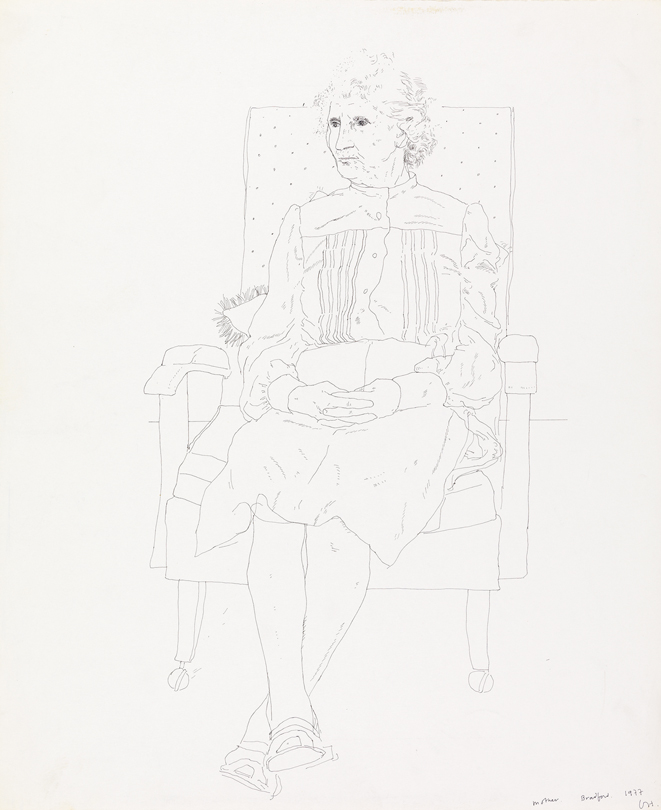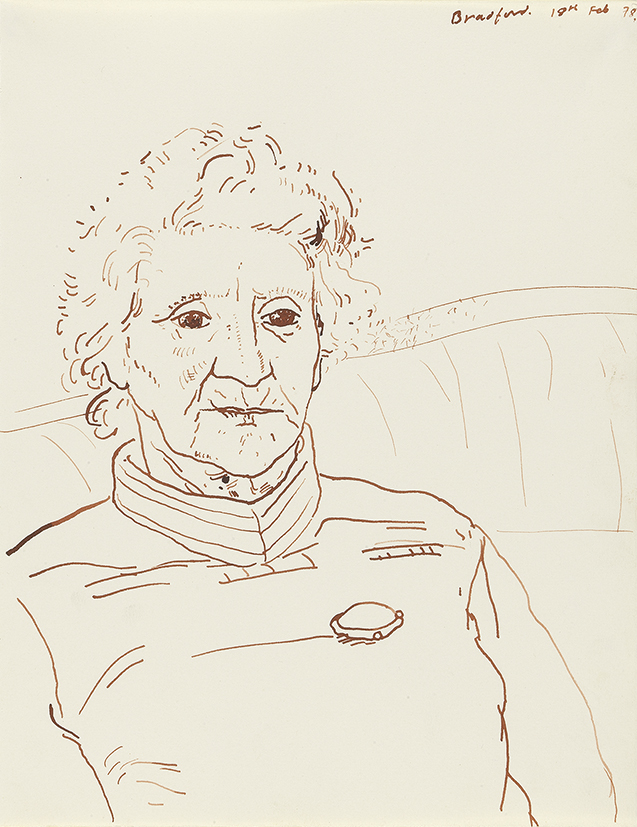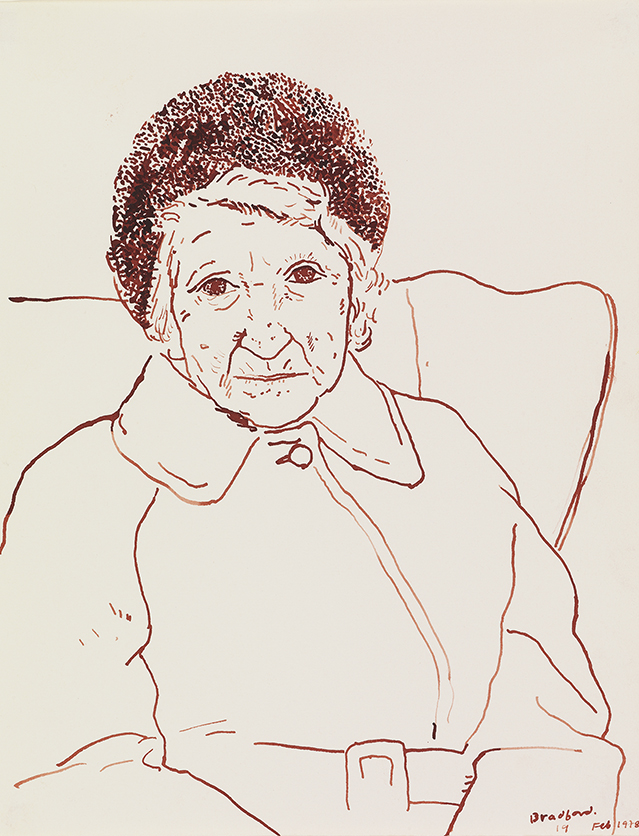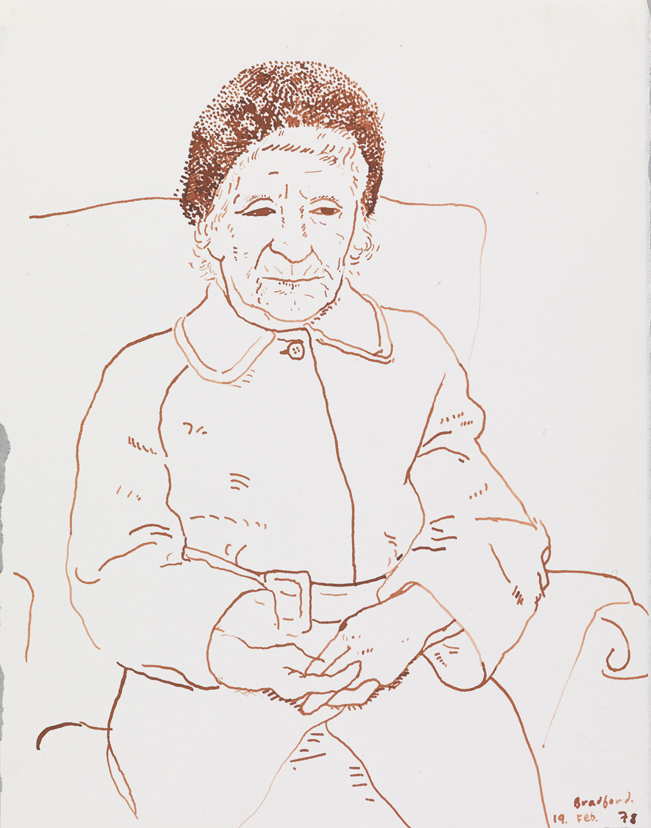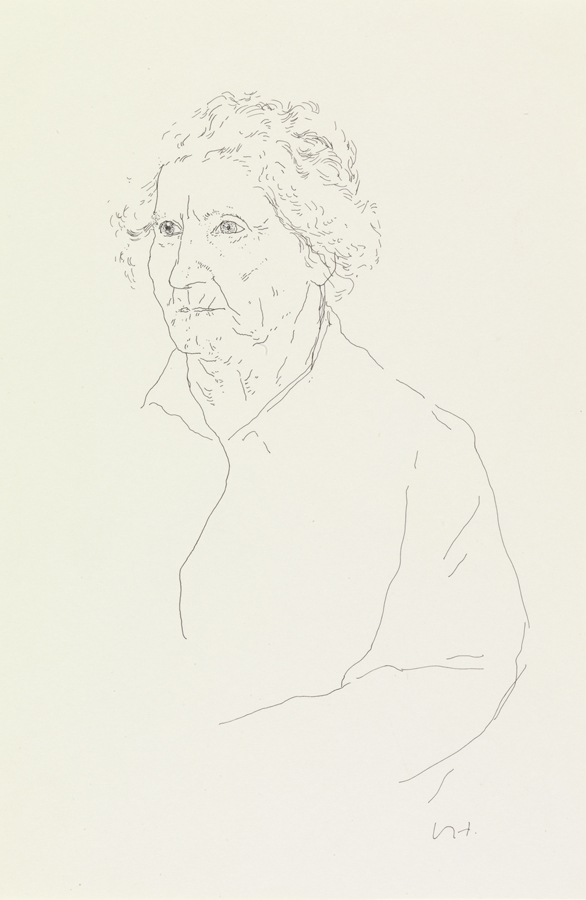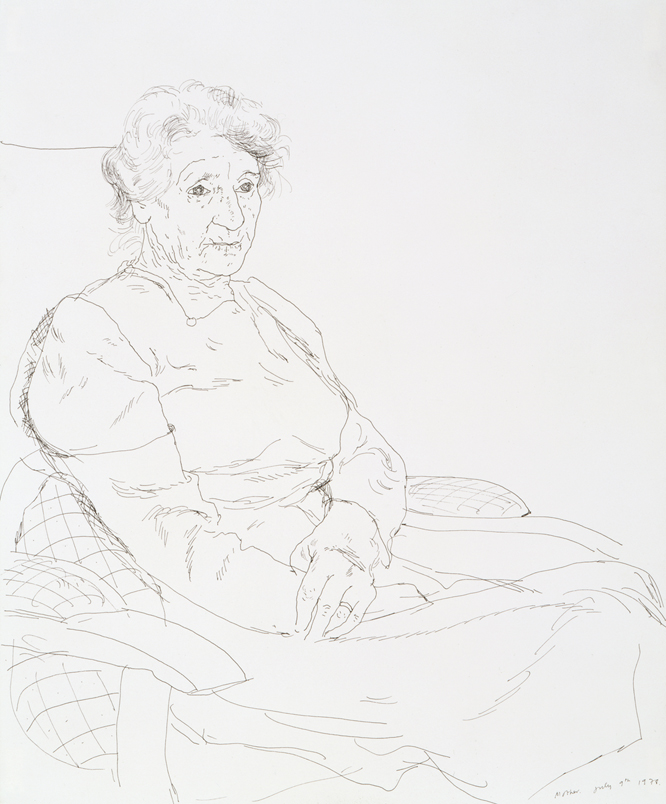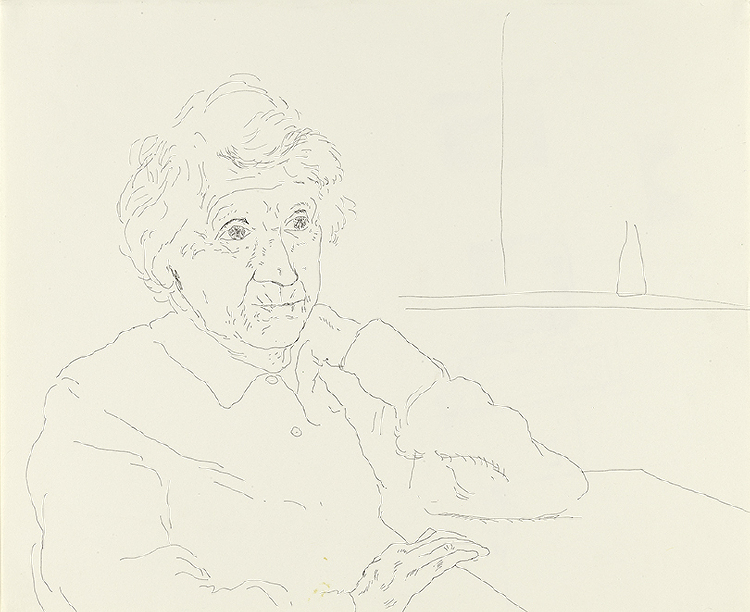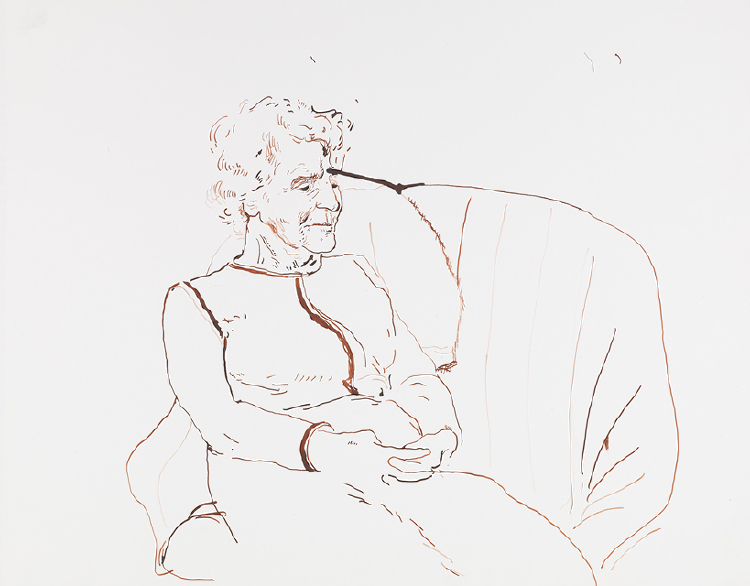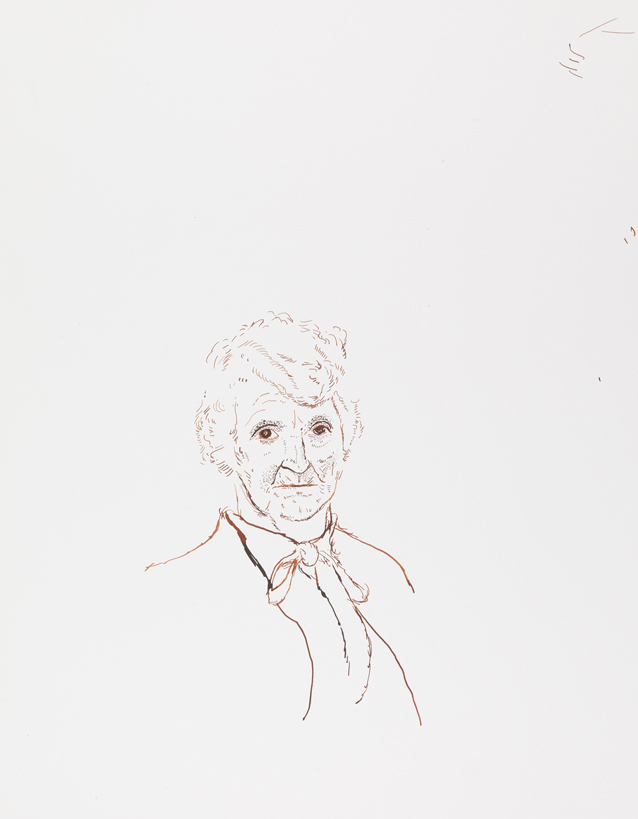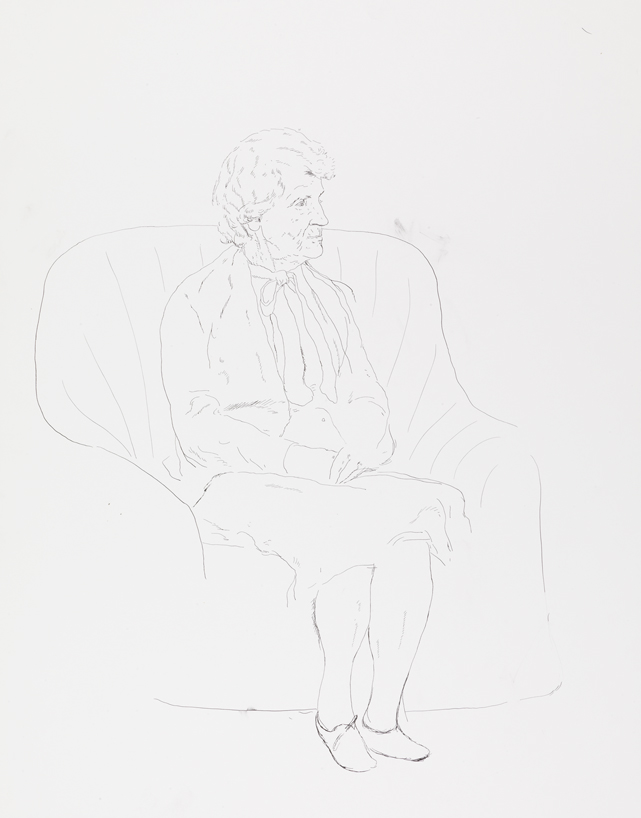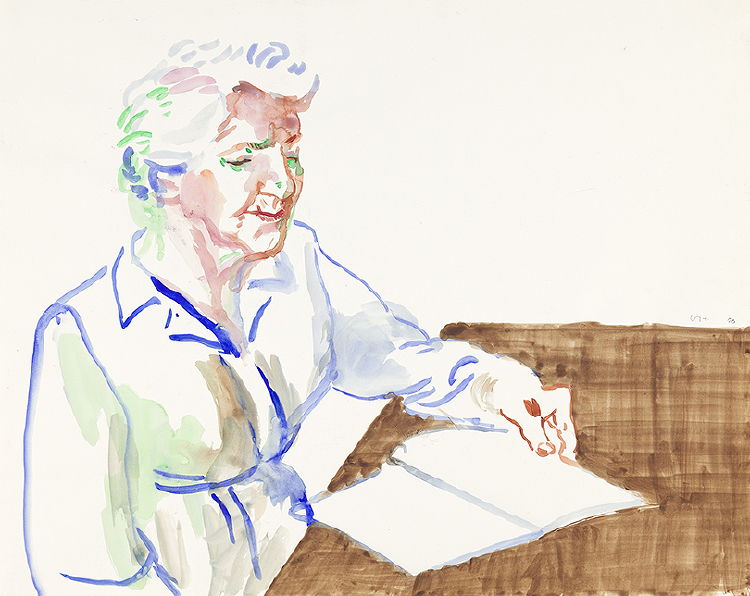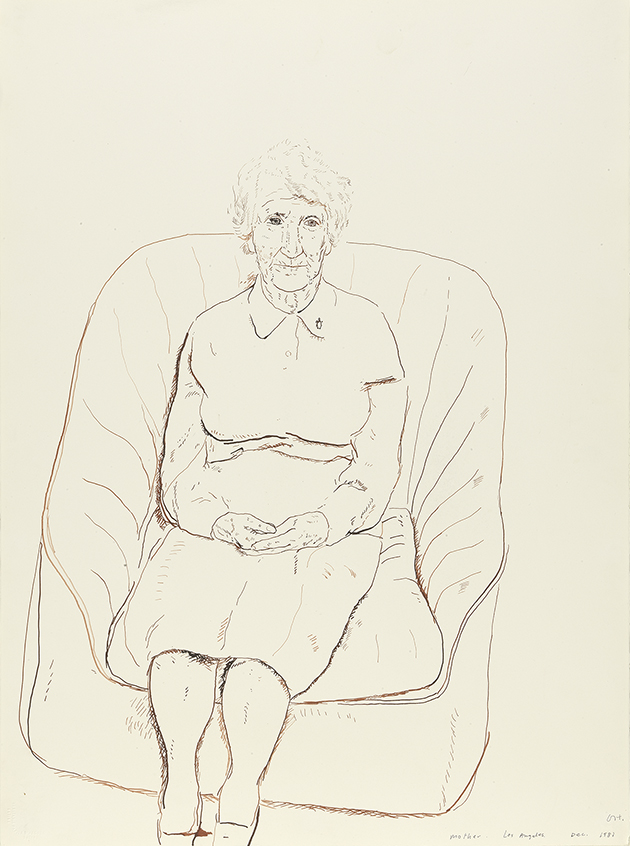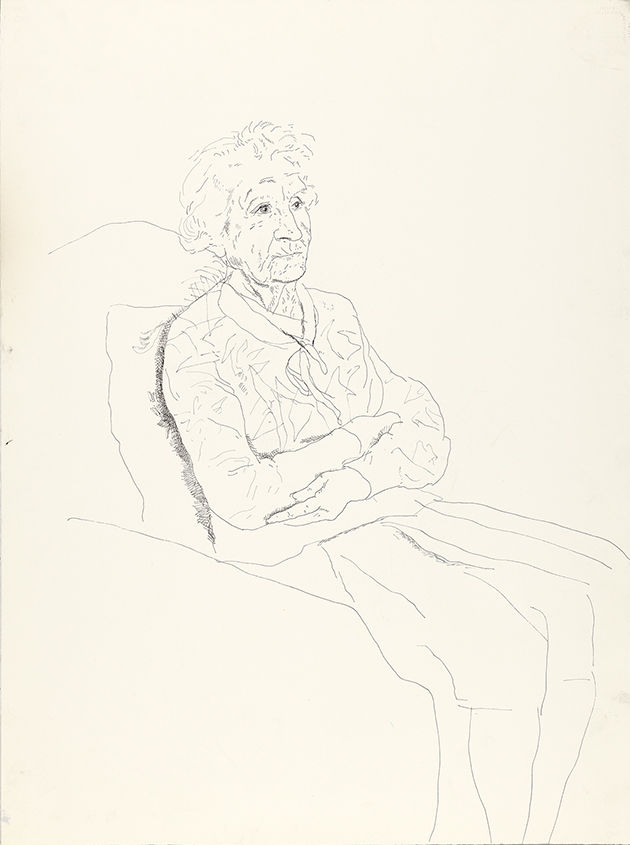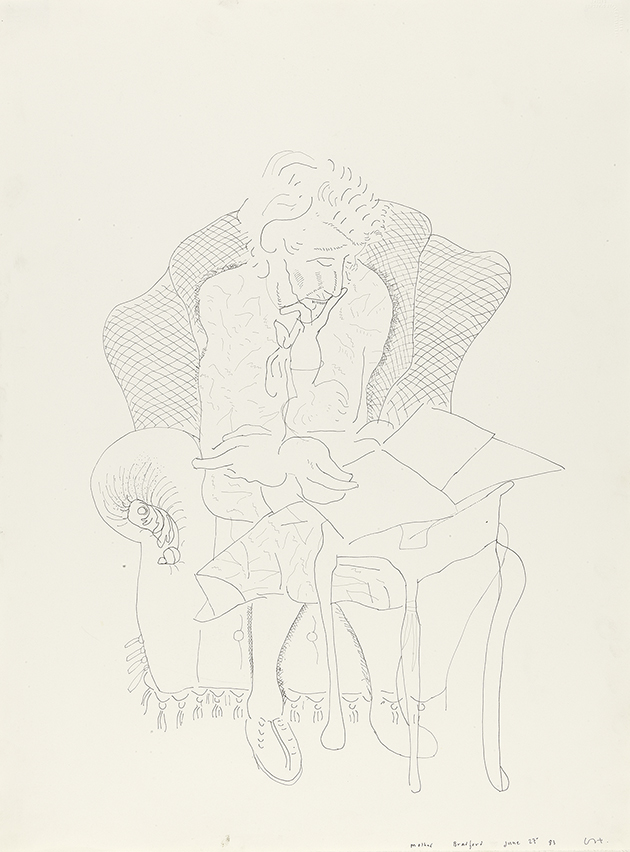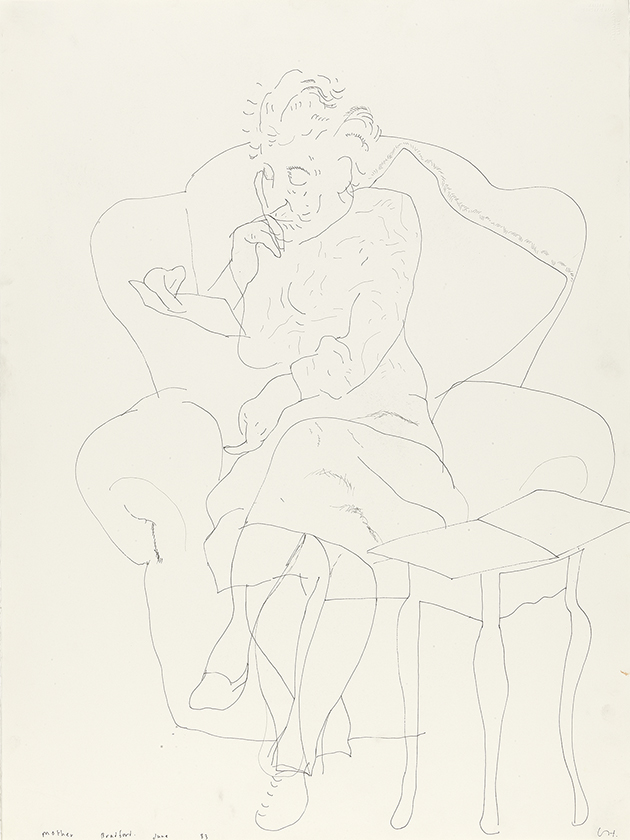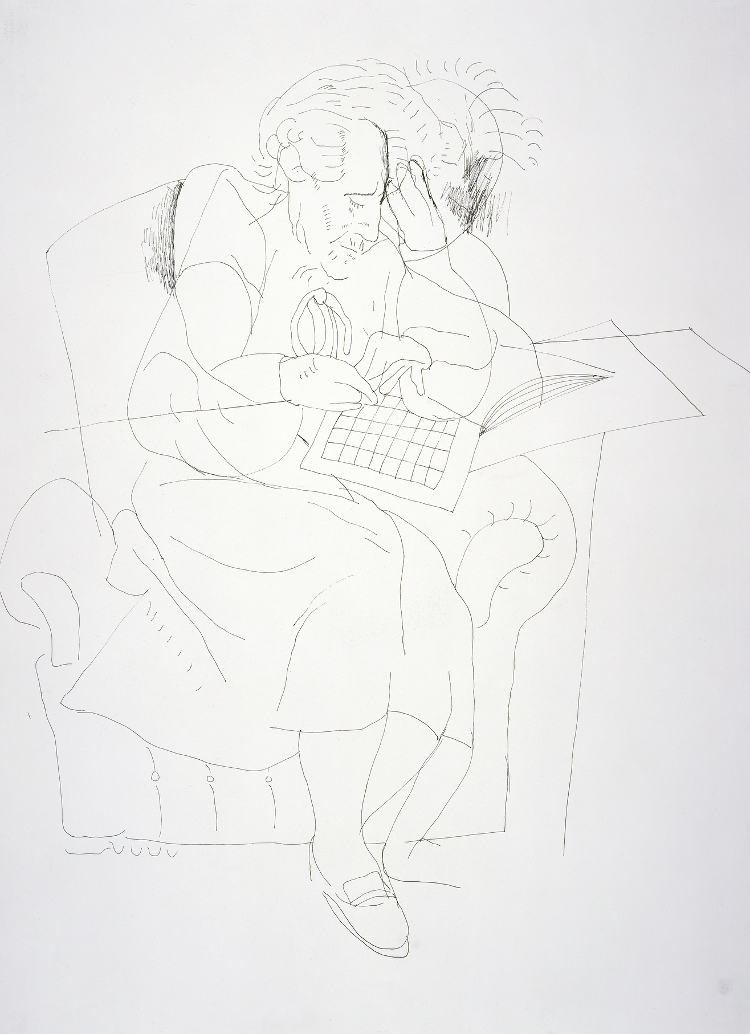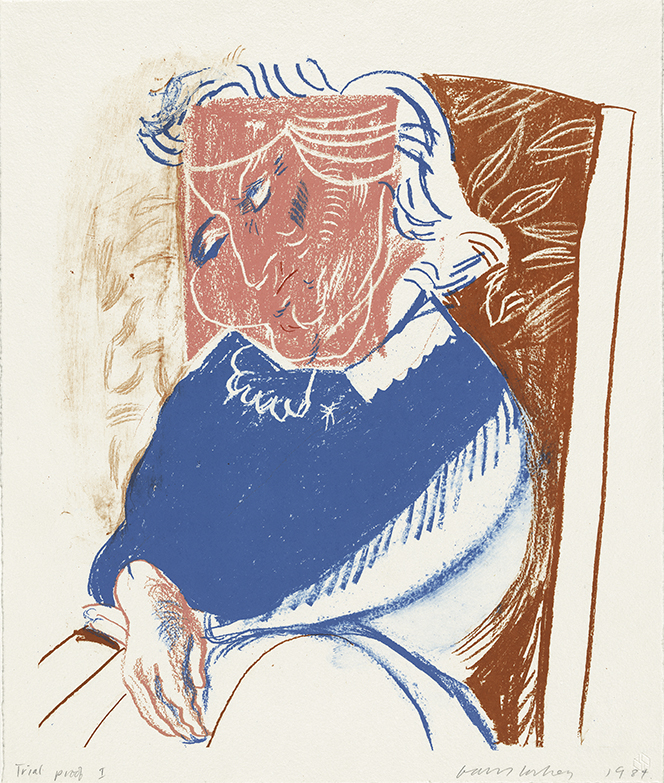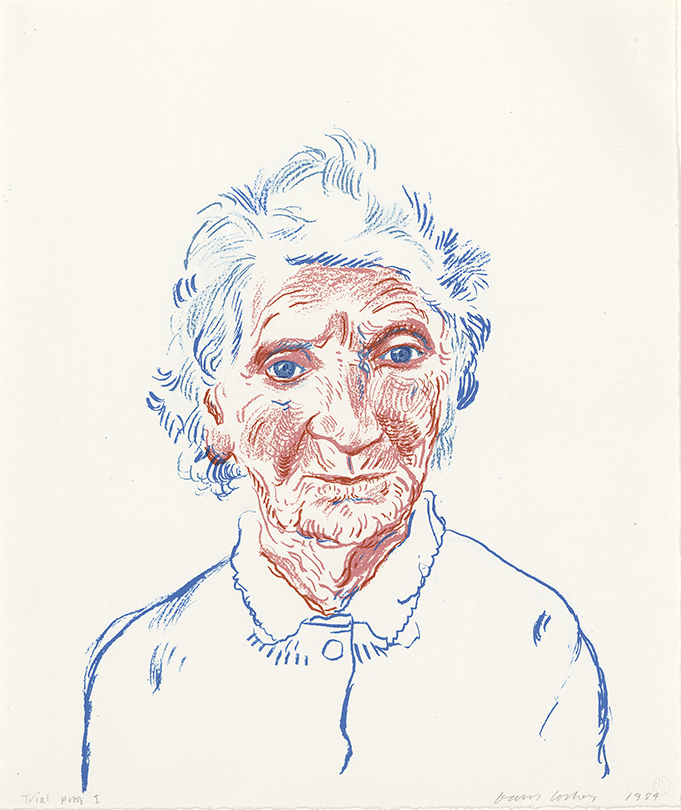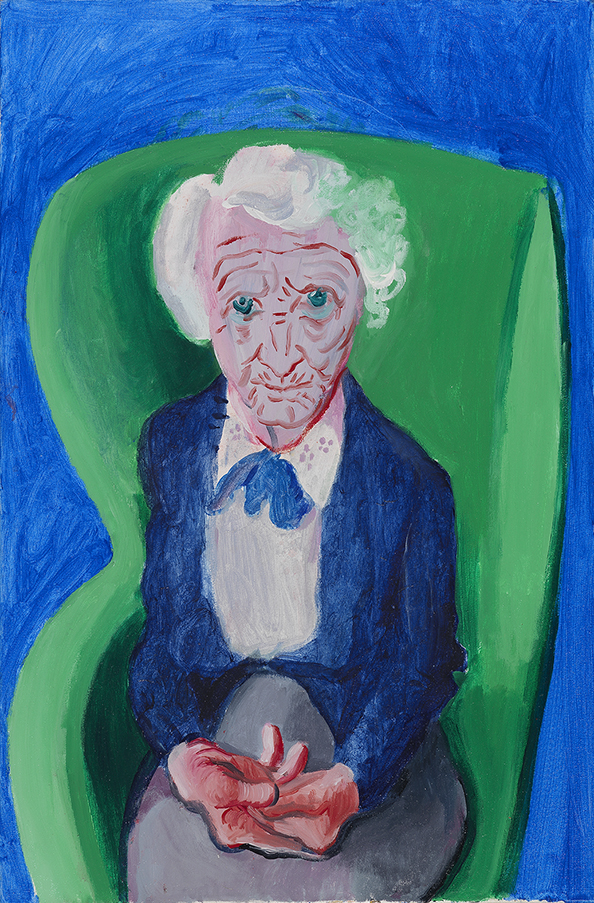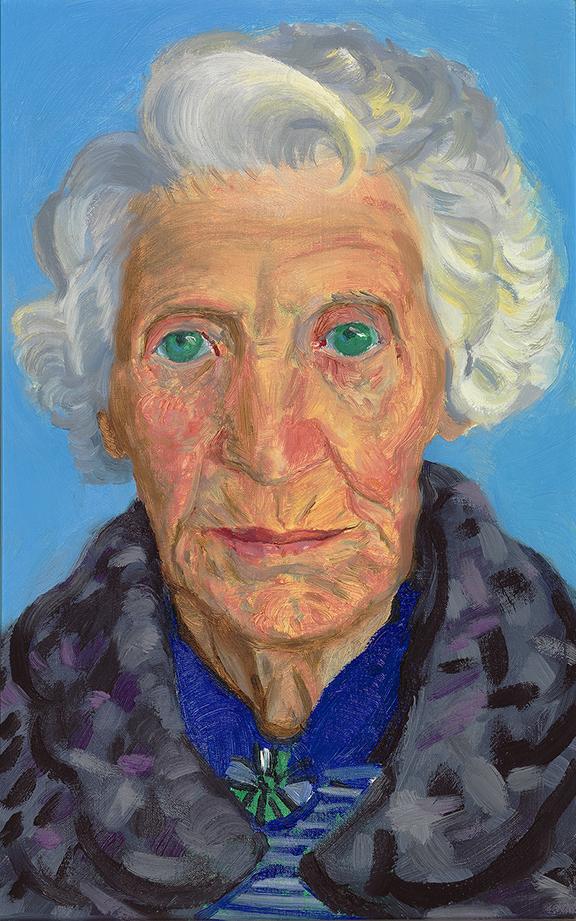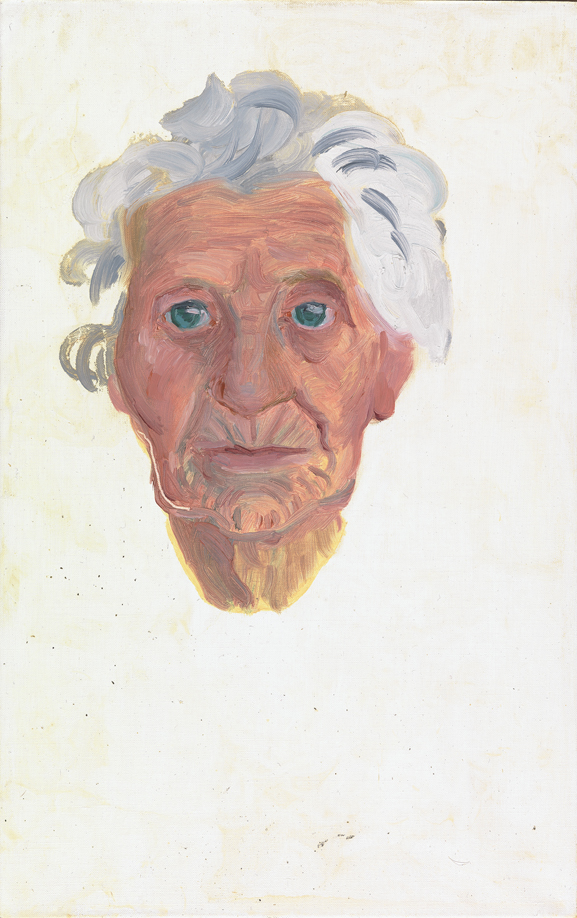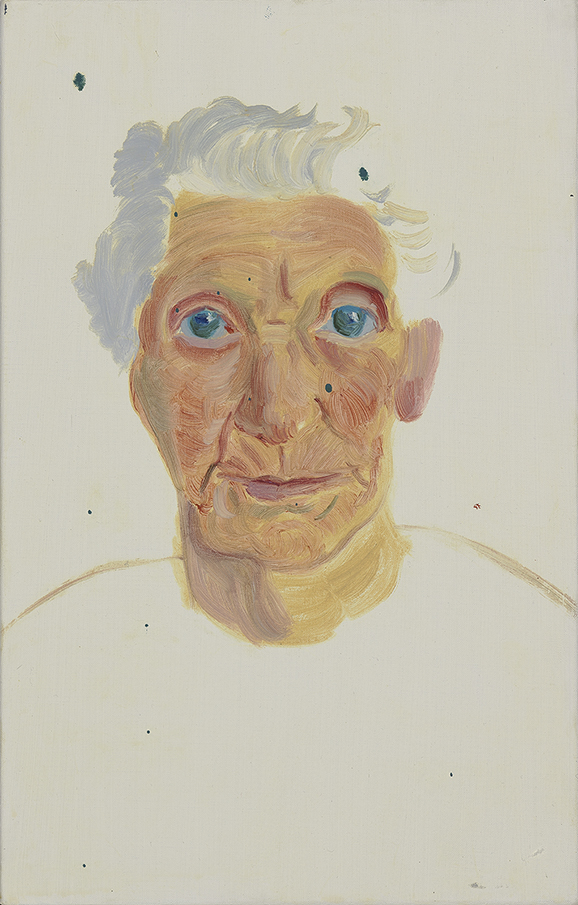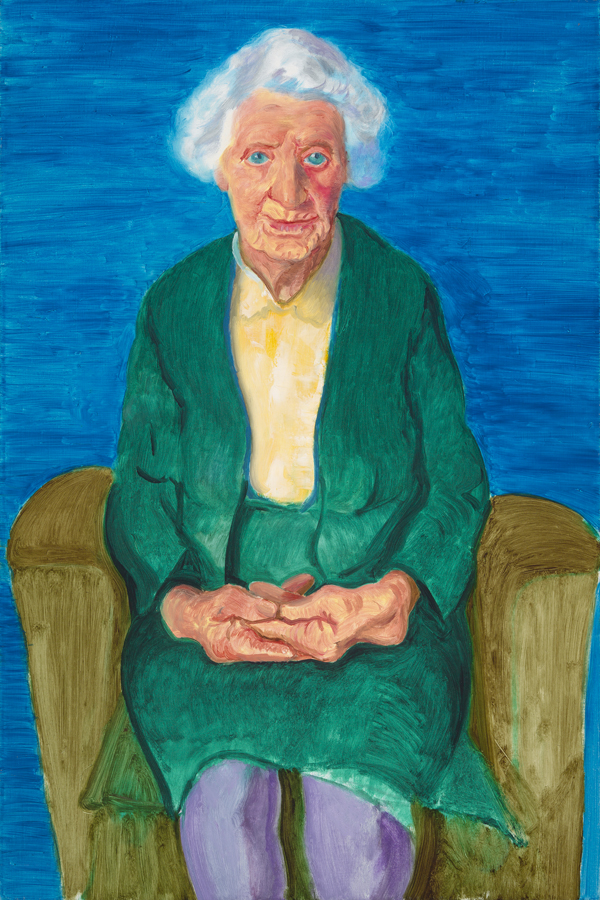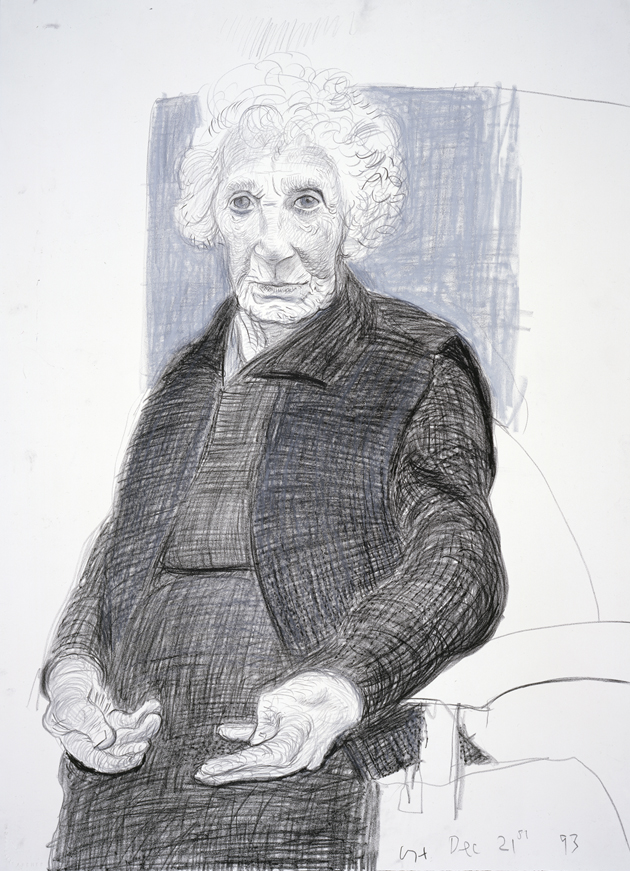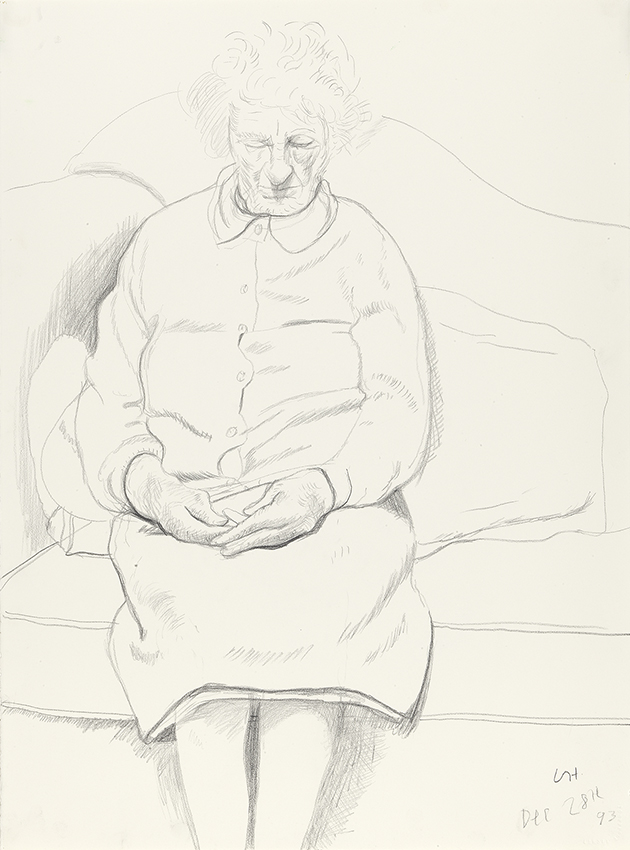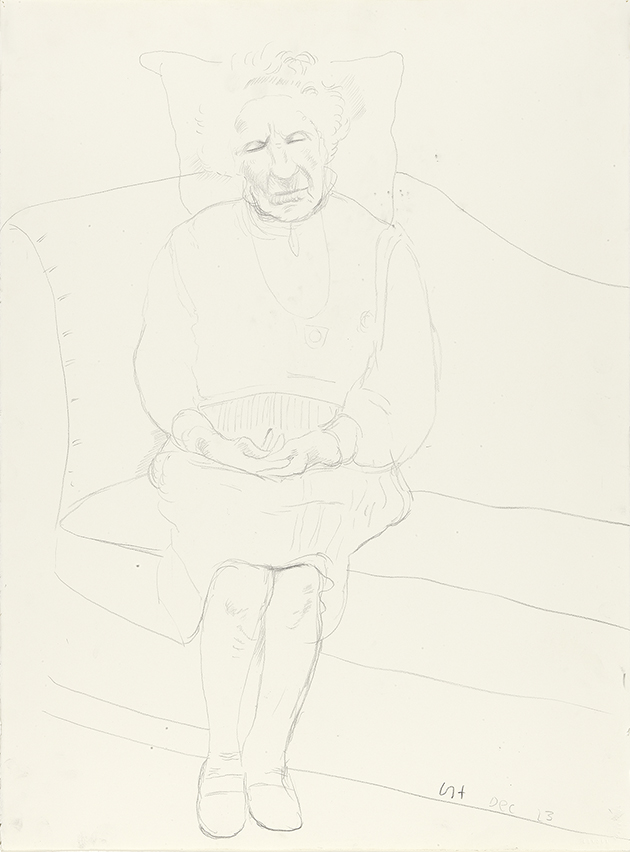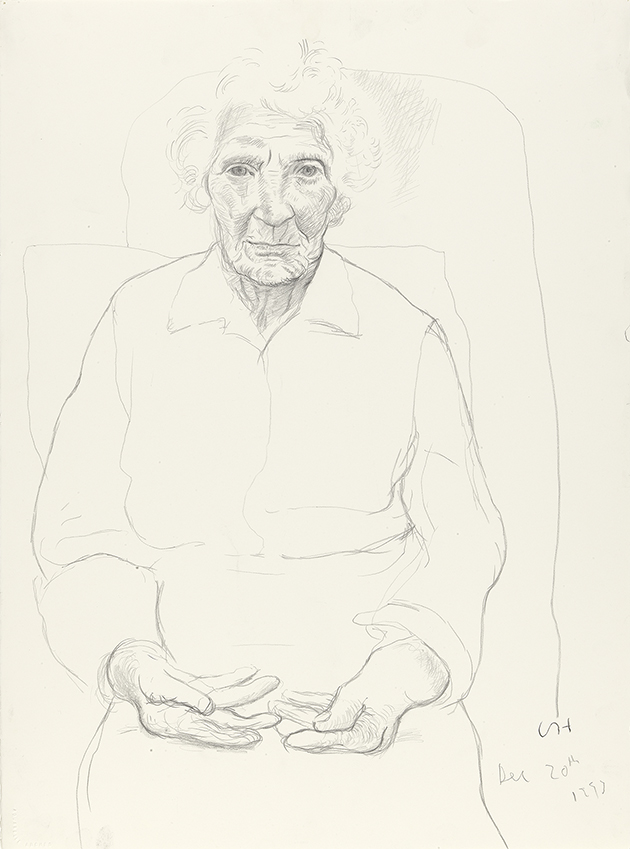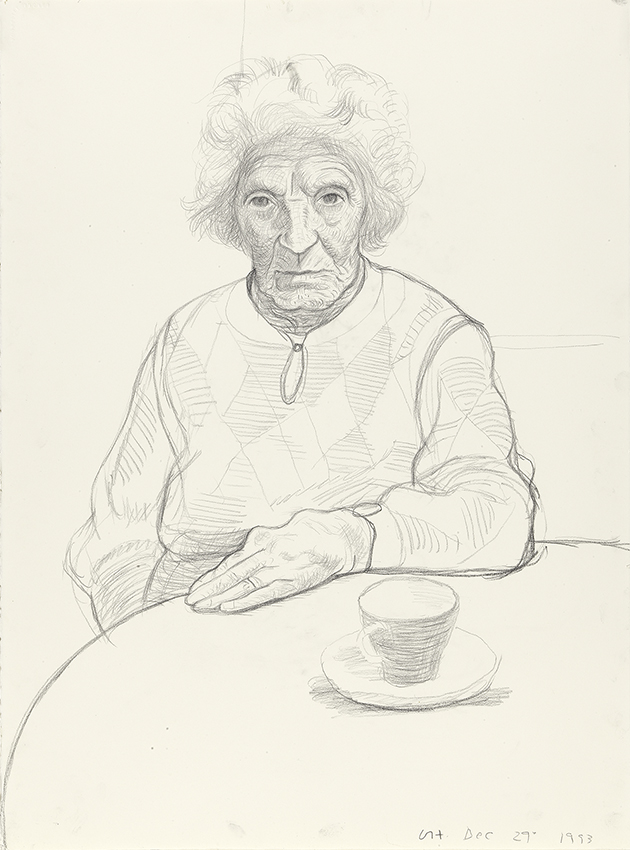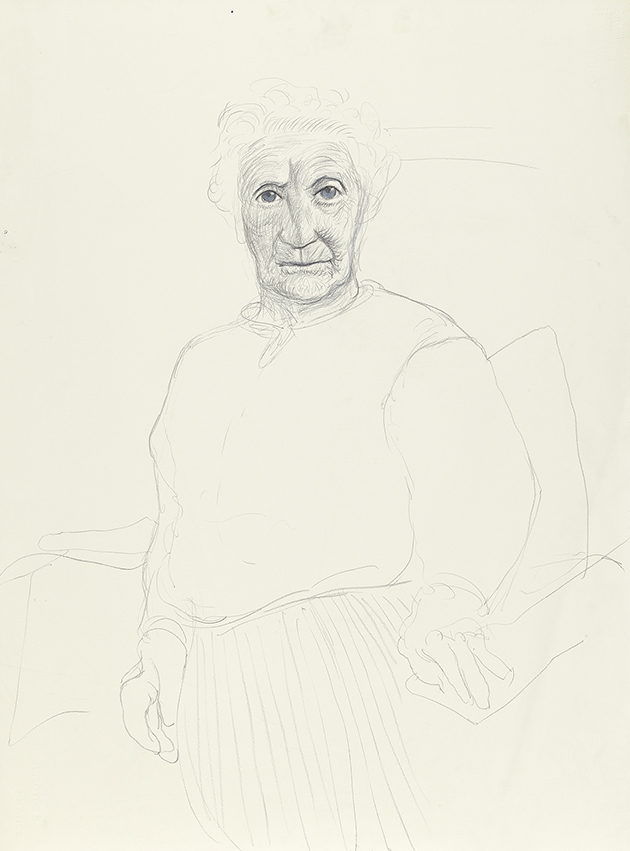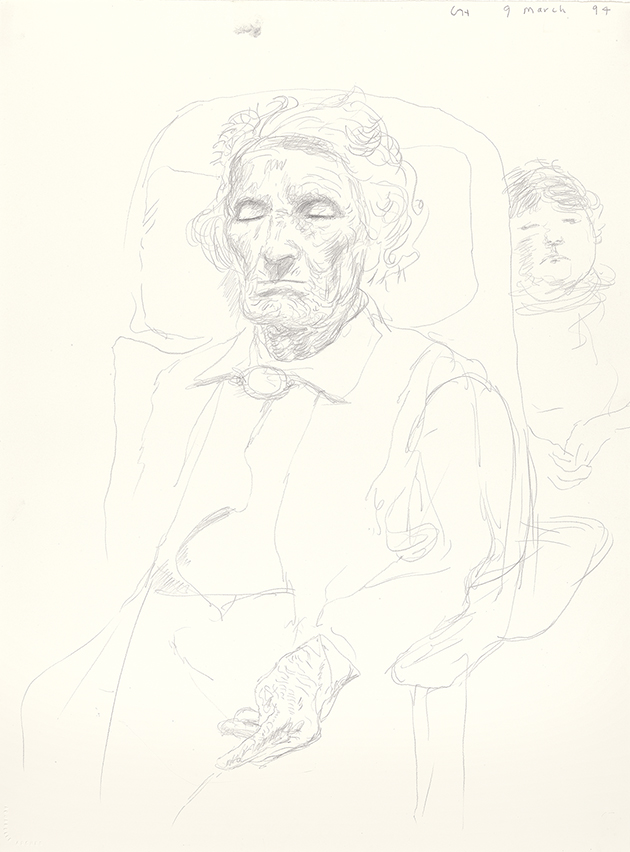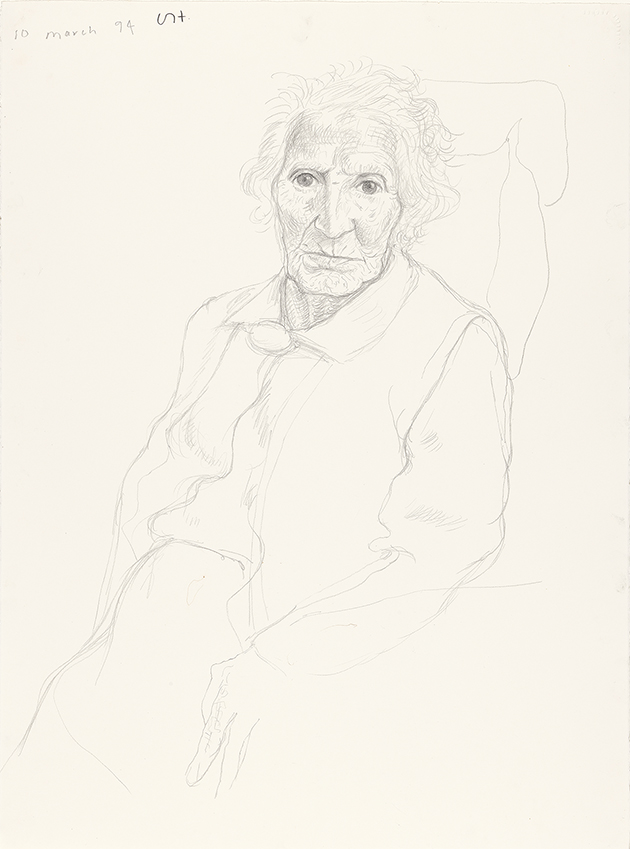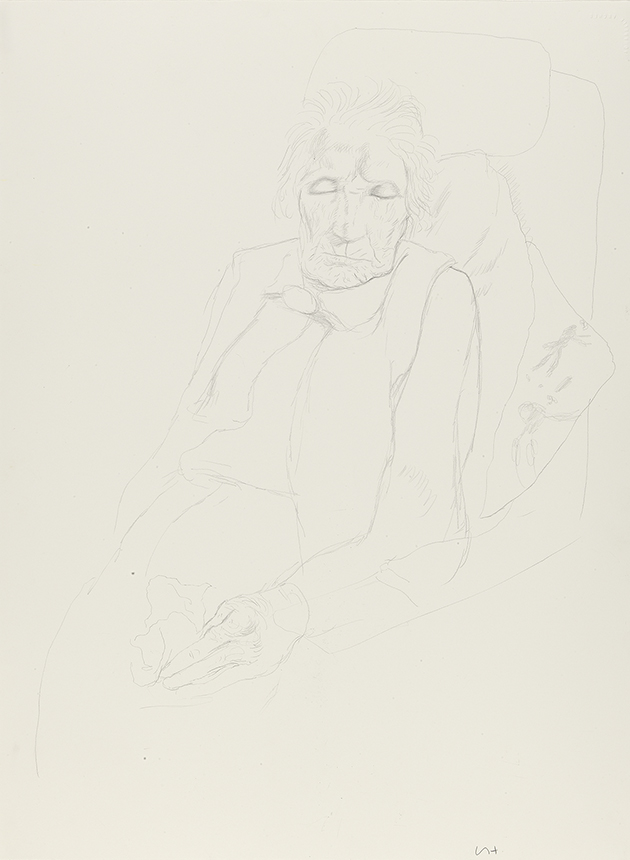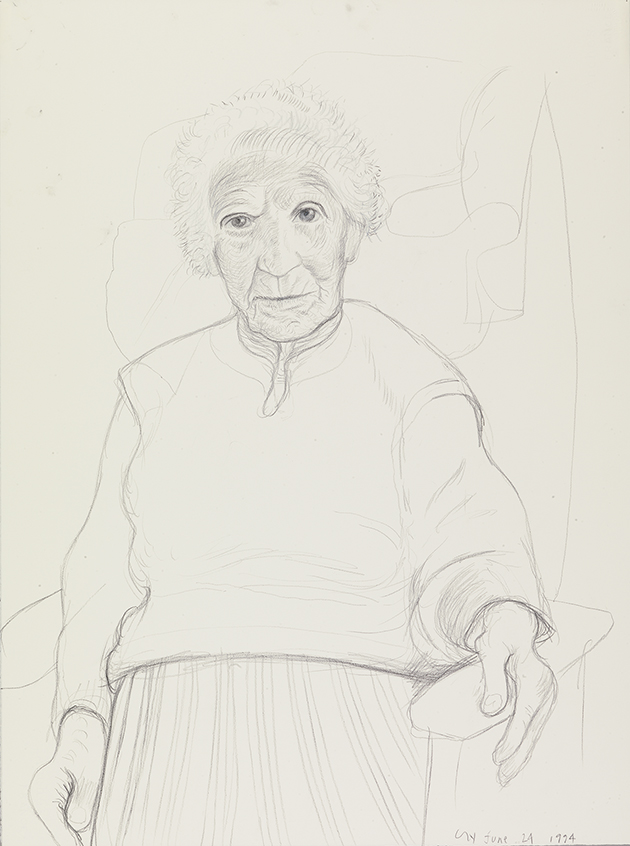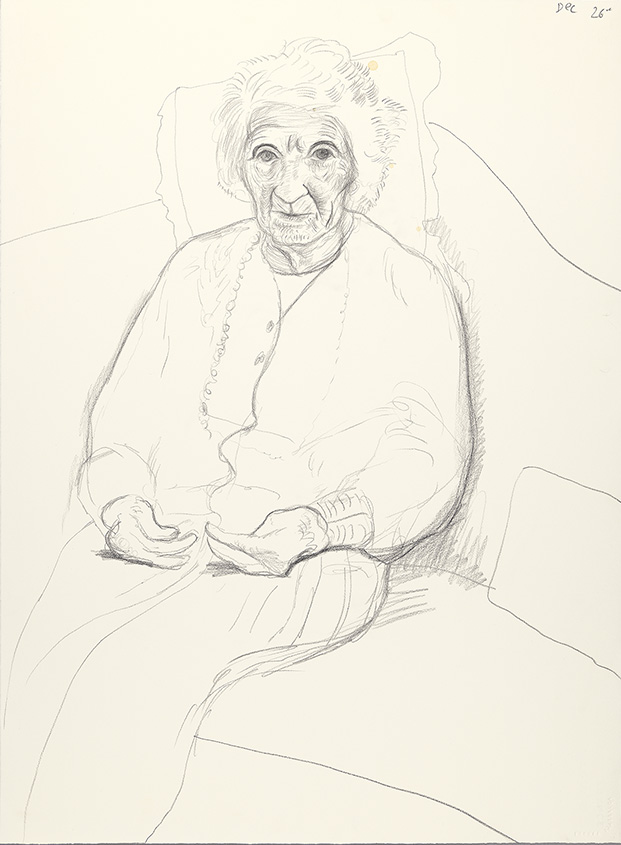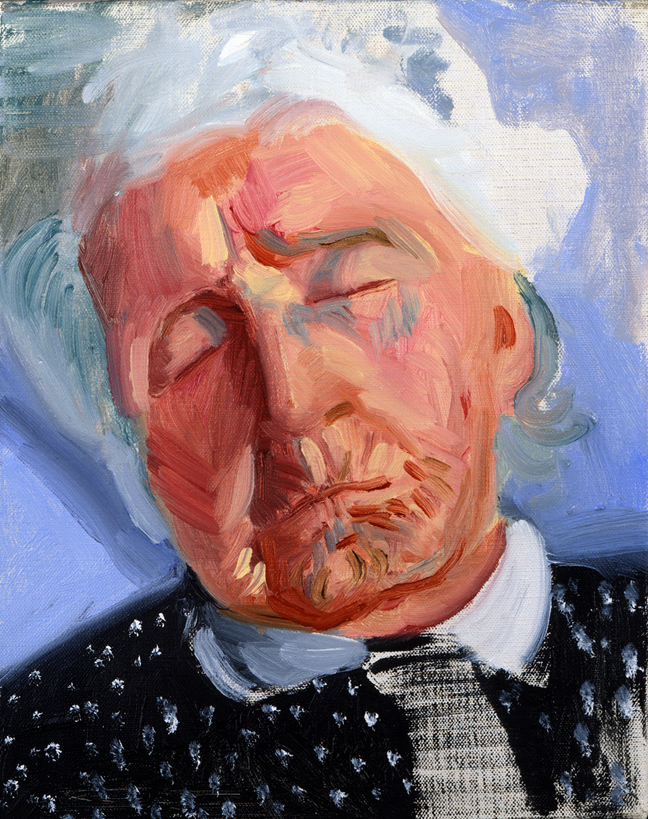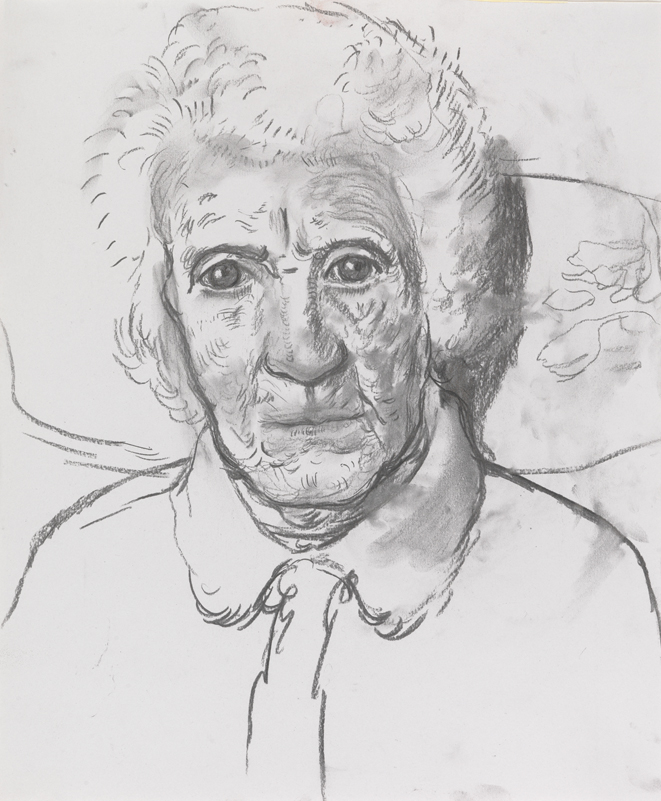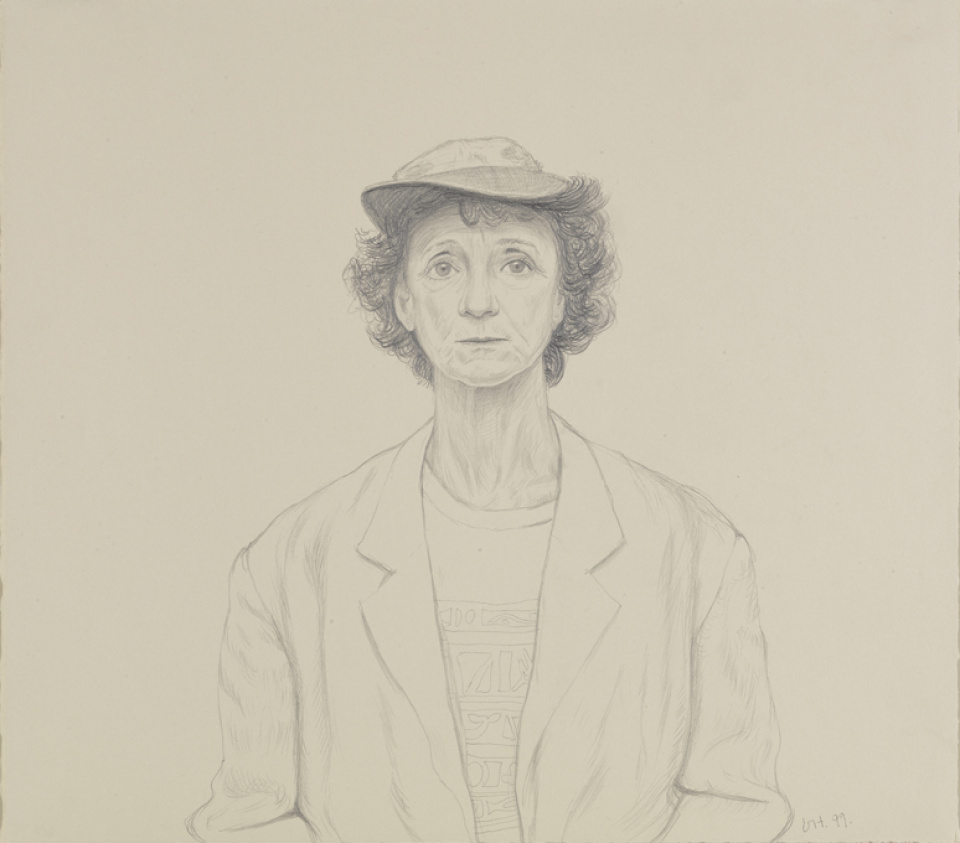
Paris exhibitions
At the start of the year, Hockney’s work makes a strong showing in Paris. His landscapes and related spatial investigations—notably his recent [NESTED]paintings of the Grand Canyon—are on view at the Centre Pompidou in the career-length solo show Espace/Paysage, while the Musée Picasso selects Hockney’s work for Dialogue avec Picasso, its first exhibition of the work of a living artist.
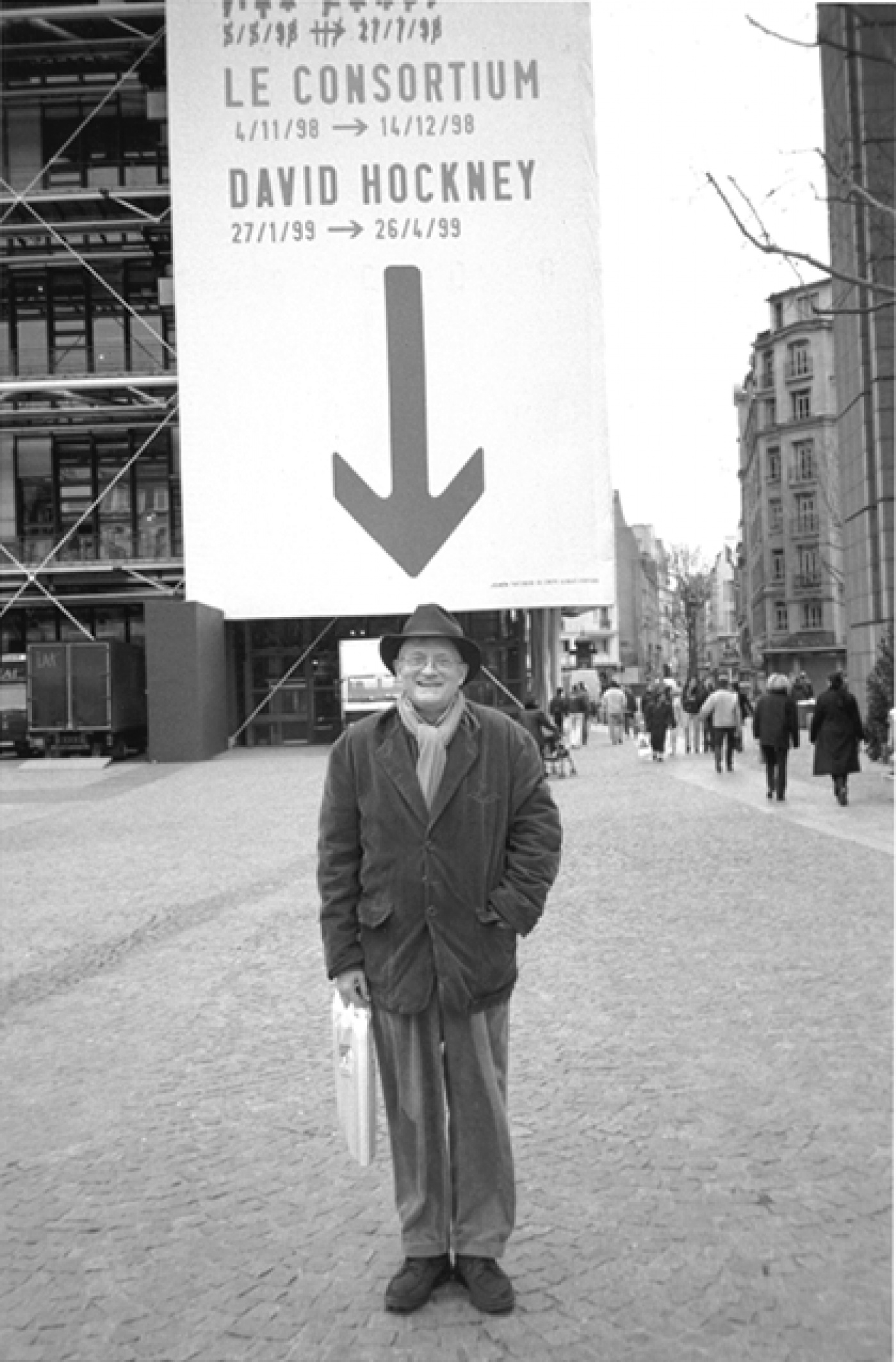
It’s frightening at times thinking what to do at the Picasso Museum, to look at all interesting compared to what is there, but my suggestion now is to make a show of the etchings I have been obsessively doing recently .... I have been doing portraits—very strong and dense .... The work is I think more than just some etchings.
Optical investigations
Hockney becomes increasingly consumed by his research into the history of photography—literally “drawing with light”—prior to the mid-nineteenth-century invention of photochemical processes for printing images. The use of lenses and optical devices by Western artists to depict mathematical perspective and render detailed likenesses is a development he sees as neglected in art historical writings but evident in actual artworks, from Caravaggio to Vermeer. Hockney purchases a camera lucida to investigate how artists such as Jean-Auguste-Dominique Ingres (French, 1780–1867) might have used such lens-based devices to trace projected images. In the autumn, he publishes an article in the RA Magazine on the topic, and participates in the symposium “Ingres and Portraiture” at the Metropolitan Museum of Art in New York.
The history of art is all very comfortable until the invention of photography; but then it becomes rather uncomfortable because nobody knows what the photograph really is. As a result, we then don’t include it as part of the pictorial history. But it can’t be isolated from it.

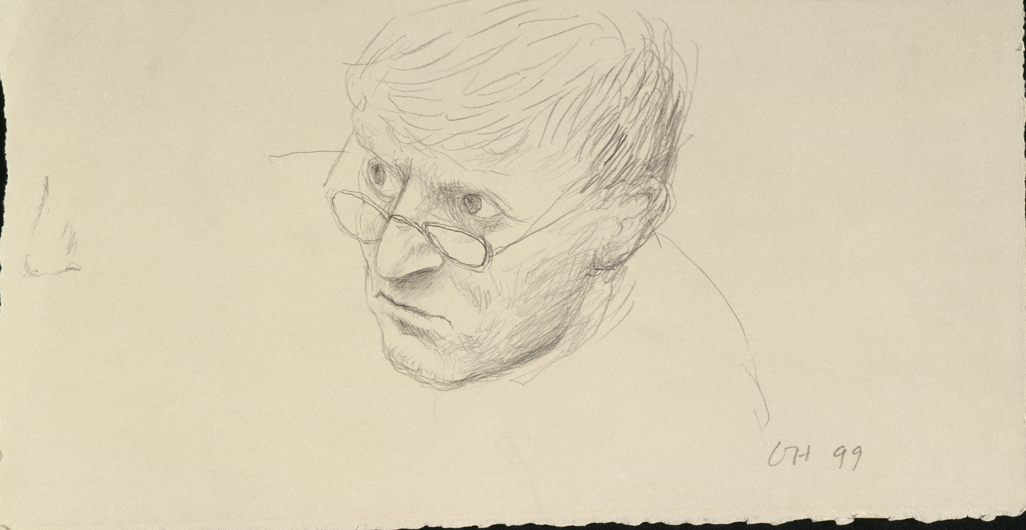
Those penciled drawings of Ingres were mind-boggling. For one thing their size—how small they turn out to be when you get to see them in person. The images are seldom more than twelve by eight inches, incredibly detailed and incredibly assured. If you draw at all, you know that’s very rare and not at all easy. I bought the catalogue of the Ingres exhibition at the RA, brought it back here to L.A., studied it some more, read every word, blew up some of the drawings on the copier over there, and one morning, studying the blowups, I found myself thinking, "Wait, I’ve seen that line before. Where have I seen that line?" And suddenly I realized, "That’s Andy Warhol’s line" .... In Andy’s case we know he was using a slide projector ... and now look at this, especially the clothes, the fall of the draped cloth, the ruffle around the neck, the gathered sleeve, and then her expression, its palpable freshness: the speed of the line, its boldness, its absolute confidence, no awkwardness, no hesitancy. Of course, Ingres wasn’t using a slide projector, but he might have been using a camera, a refracting instrument of some sort
Camera lucida portraits
To draft his own work, Hockney grows adept at using the camera lucida. Asking his friends to sit [NESTED]before this antique device, Hockney explores a new mode for his portrait-making.
At first I found the camera lucida very difficult to use. It doesn’t project real images of the subject, but an illusion of one in the eye. When you move your head everything moves with it, and the artist must learn to make very quick notations to fix the position of the eyes, nose, and mouth to capture "a likeness." It is concentrated work. I persevered and continued to use the method for the rest of the year—learning all the time.
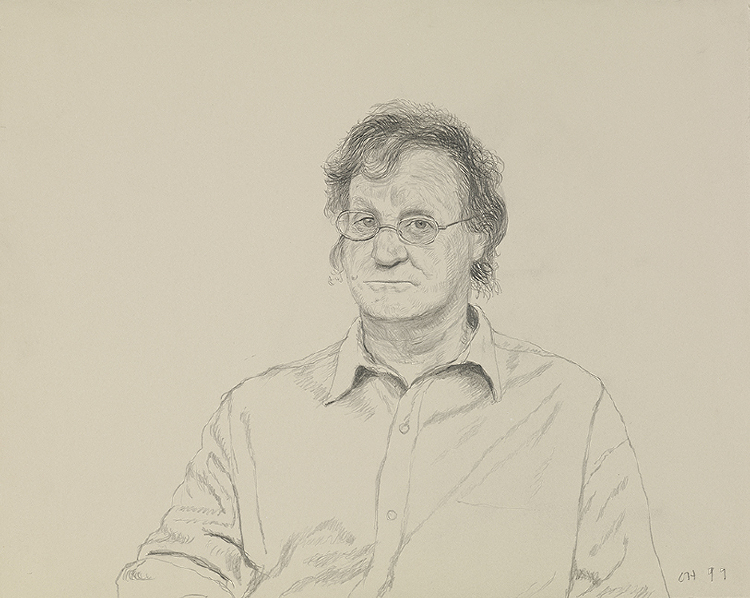
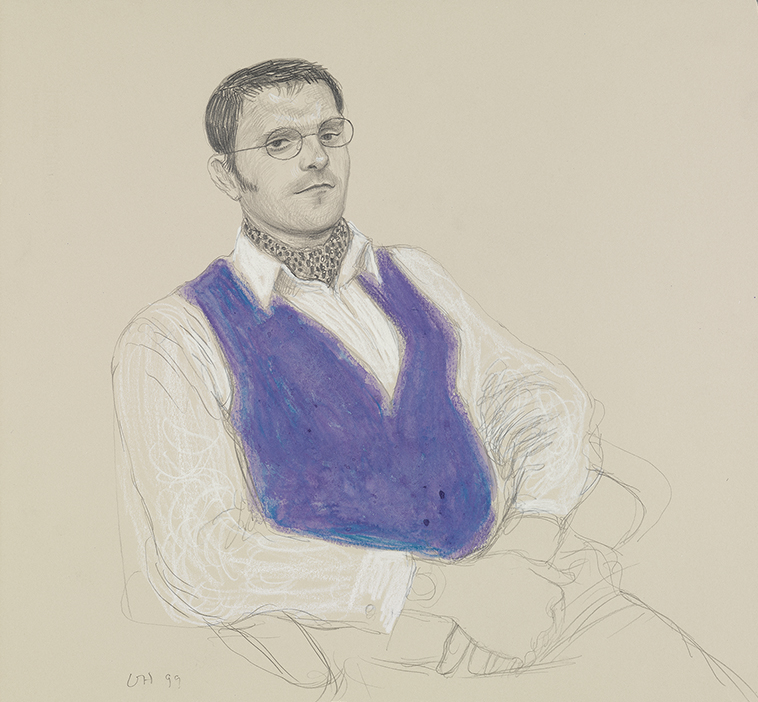
Laura Hockney dies
In May, Laura Hockney passes away at her home in Bridlington. Her son draws her until the end: “She had four children around her, and she was 98 and she only spent her last three days in bed. So she was blessed really. I’m sad, of course. After all, she was the person I’ve known all my life.”

Exhibitions
Solo
- Espace/Paysage, Musée national d’art moderne, Centre Georges Pompidou, Paris, France (Jan 25–Apr 26); catalogue.
- Dialogue avec Picasso, Musée Picasso, Paris, France (Feb 8–May 3); catalogue.
- David Hockney: The Grand Canyon, 1853 Gallery, Saltaire, UK (Mar 1999).
- Space and Line, Richard Gray Gallery, New York, NY, USA (Apr 29–May 28), travels to Annely Juda Fine Art, London (Jun 30–Sep 11); catalogue.
- Recent Etchings, Pace Prints, New York, NY, USA (May 5–Jun 5); catalogue.
- Recent Etchings, L.A. Louver, Venice, CA, USA (Jun 29–Aug 28).
- Space and Line, Annely Juda Fine Art, London, UK (Jun 30–Sep 18); catalogue.
- David Hockney, Nishimura Gallery, Tokyo, Japan (Oct 12–Nov 20).
- Dog Wall, Pace Prints, New York, NY, USA (Nov 23–Dec 30).
Group
- Innovation/Imagination: 50 Years of Polaroid Photography, Ansel Adams Center, San Francisco, CA, USA (May 11–Jul 18); catalogue.
- Summer Exhibition, Royal Academy of Arts, London, UK (Jun 1–Aug 15), Hockney wins the Charles Wollaston Award; catalogue.
- Chihuly-Hockney-Stella: Masterworks in Glass, Paint and Print, National Gallery of Australia, Canberra, Australia (Sep 24, 1999–Jan 26, 2000).
Publications
Publications
- David Hockney: Espace/Paysage, Centre Georges Pompidou, Paris.
- David Hockney: Recent Etchings, Pace Gallery, New York.
- David Hockney: Space and Line, Annely Juda Fine Art, Richard Gray Gallery, London and Chicago.
- David Hockney: Dialogue Avec Picasso, edited by Daniel DeLong, Paris: Reunion des Musées Nationaux.
Film
Film
- David Hockney: In Perspective, 52 min., directed by Monique Lajournade.
